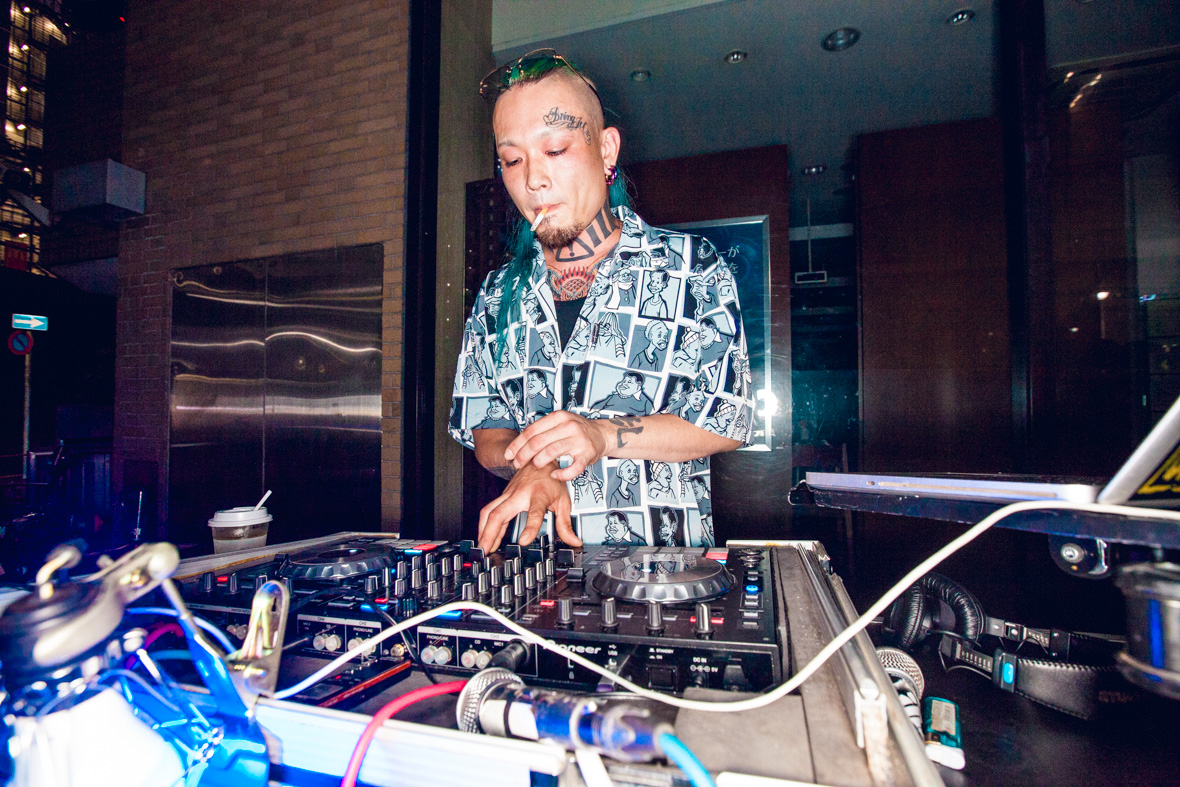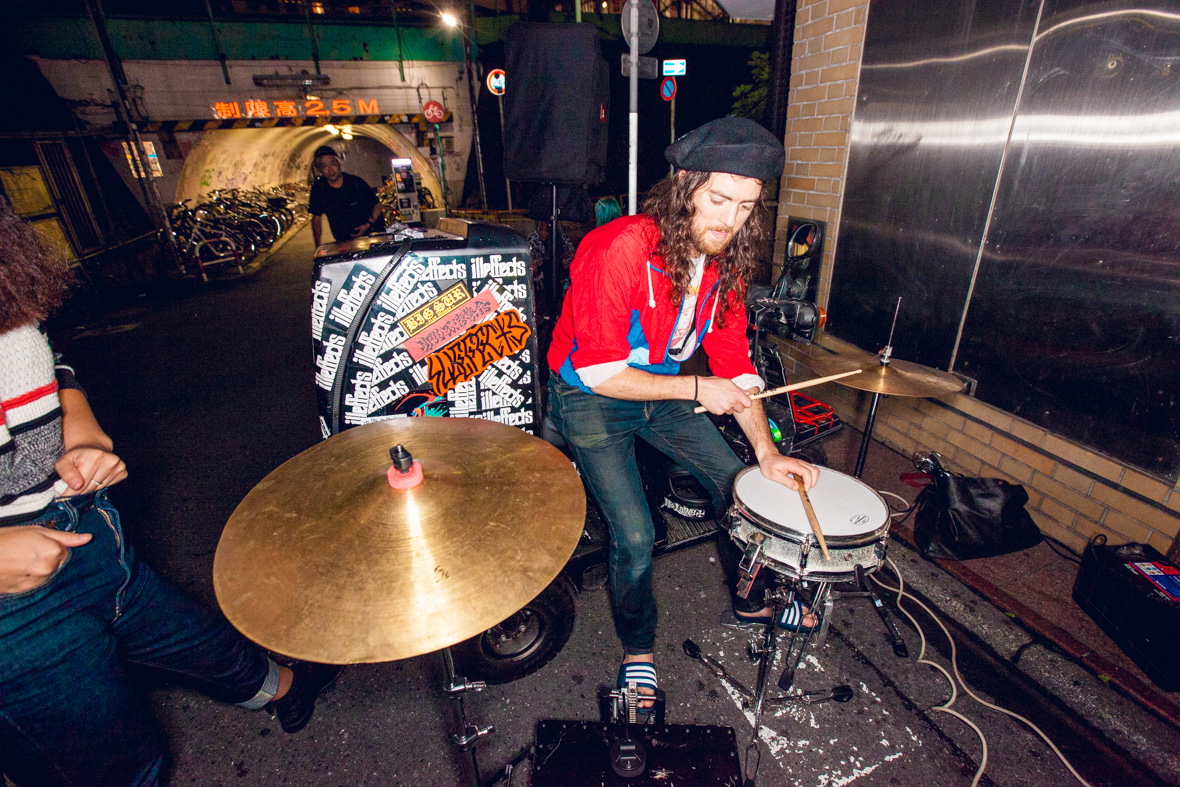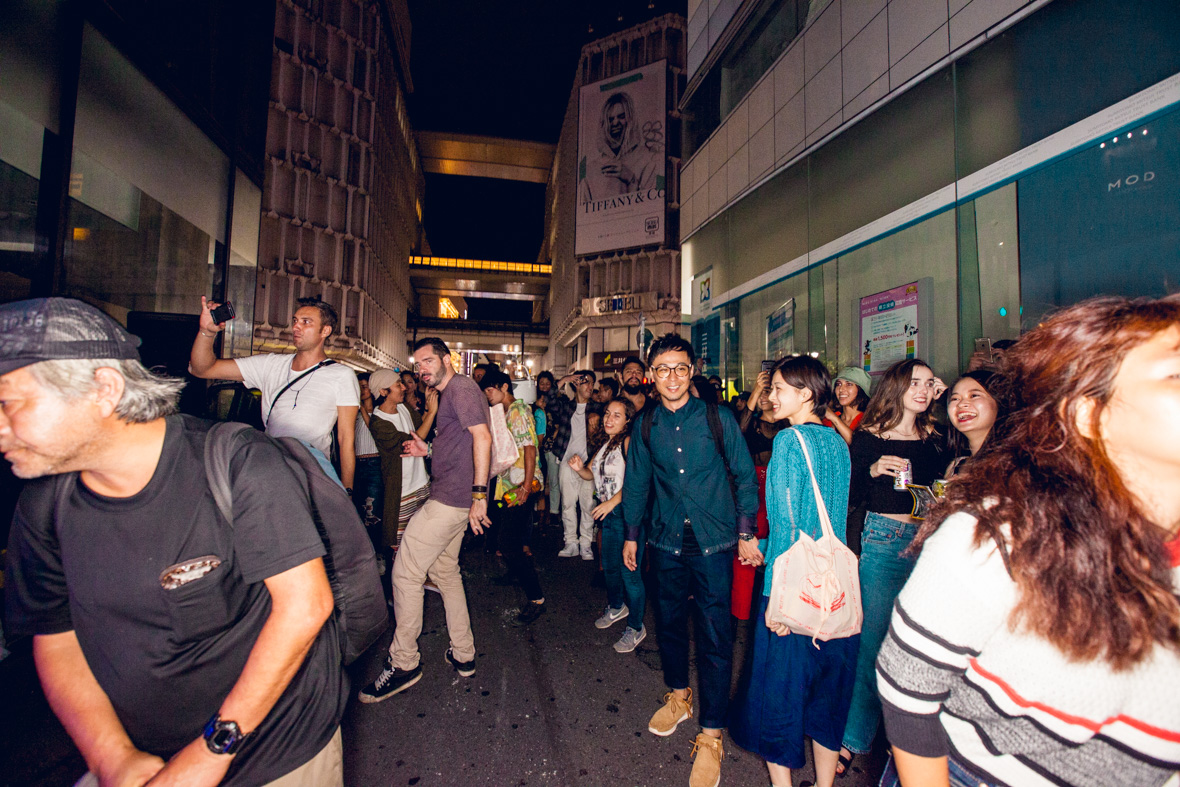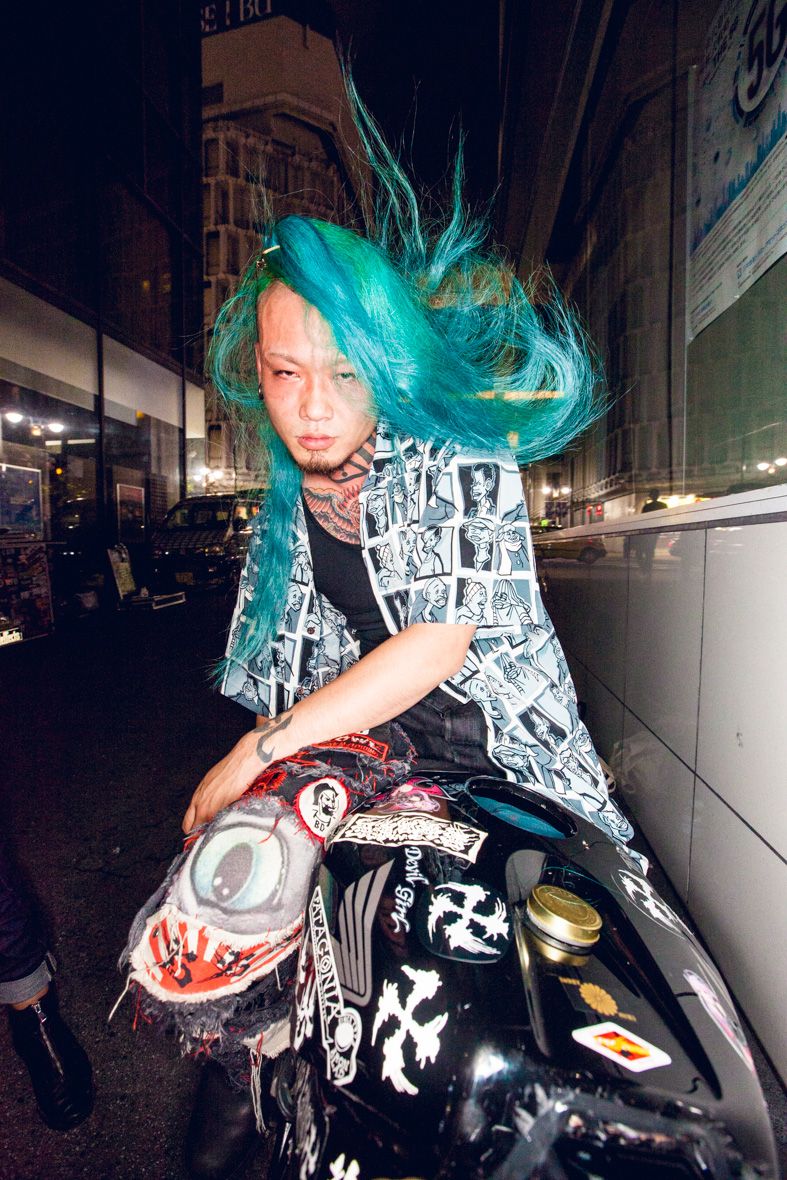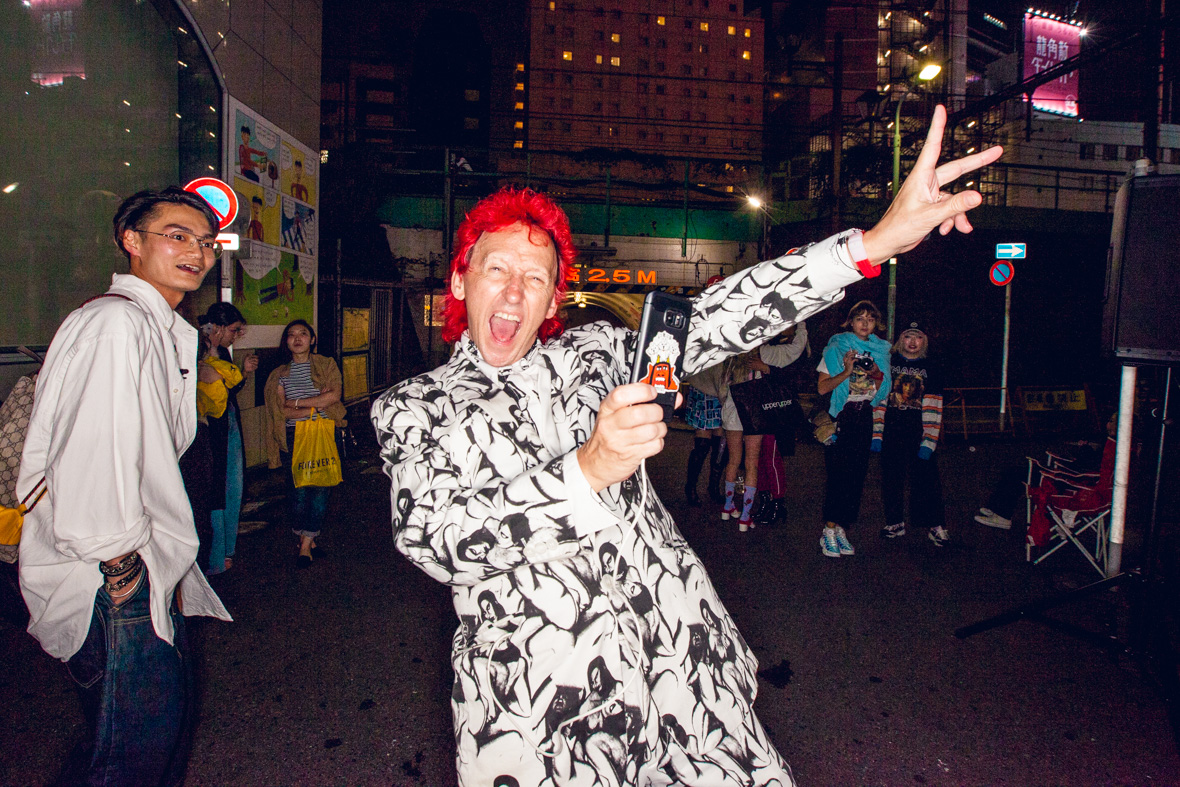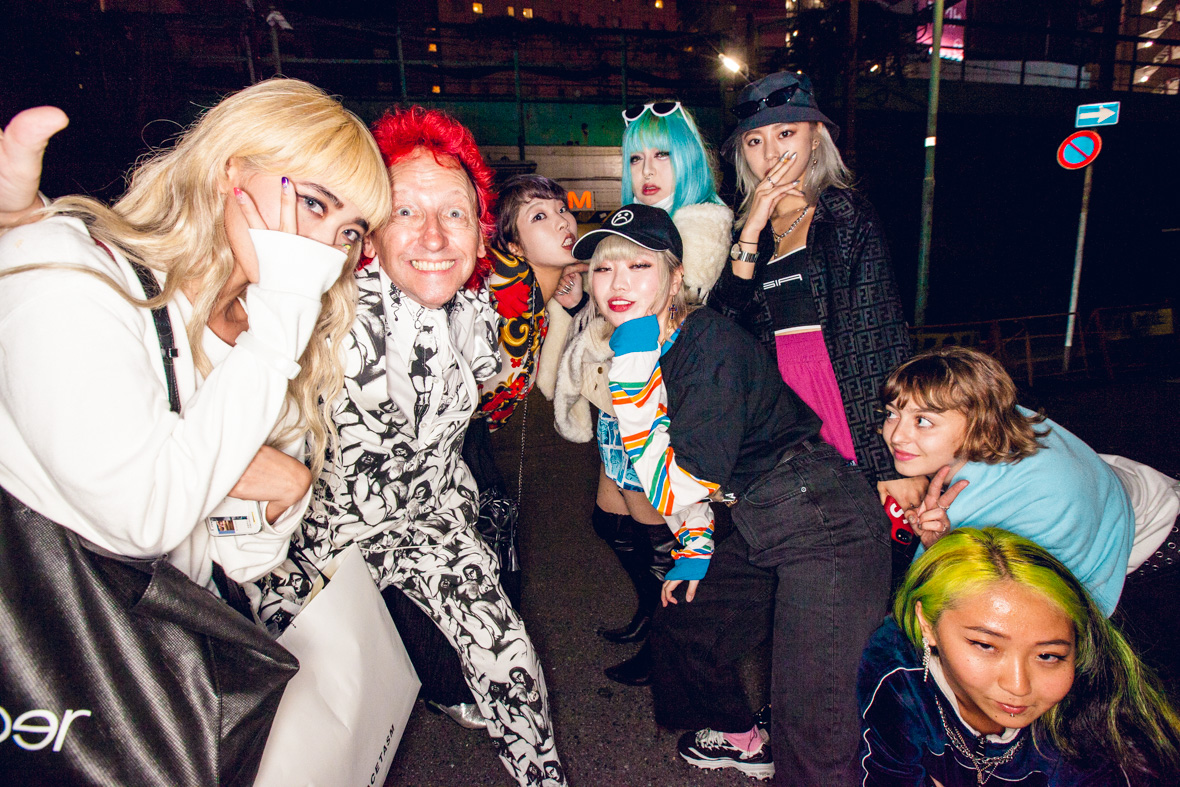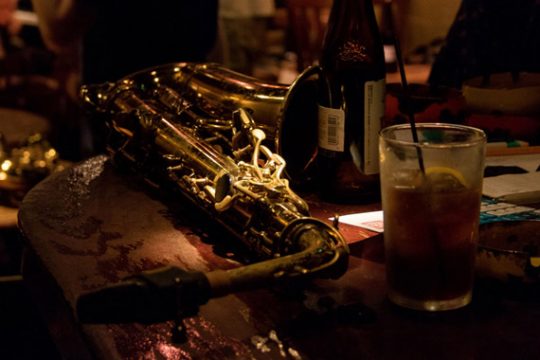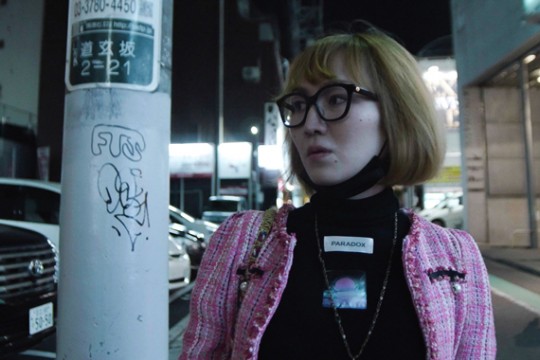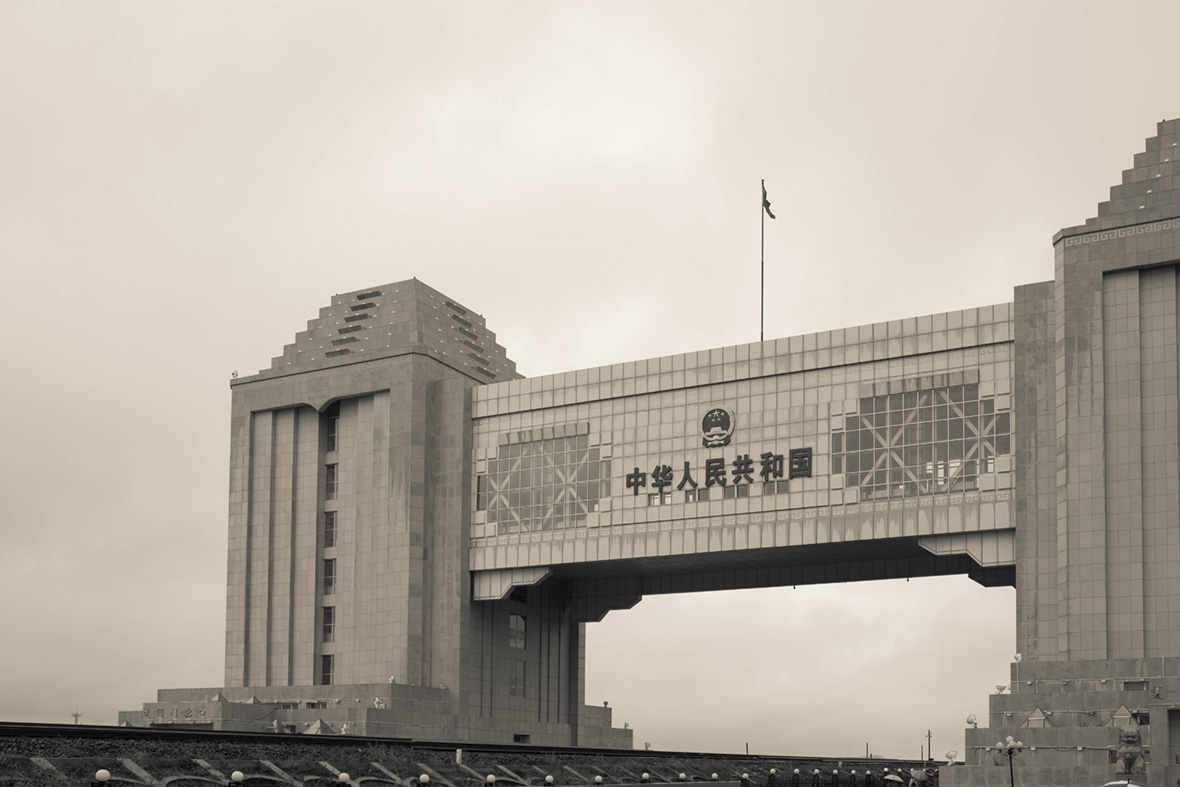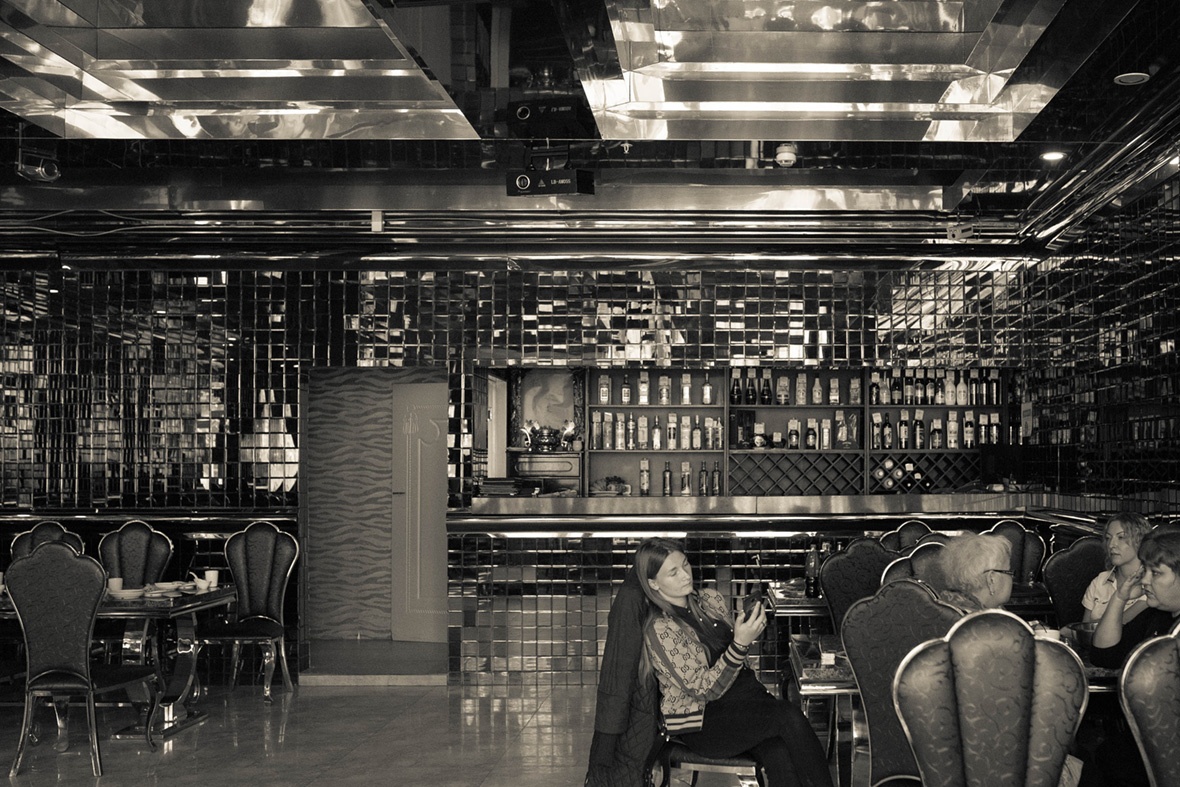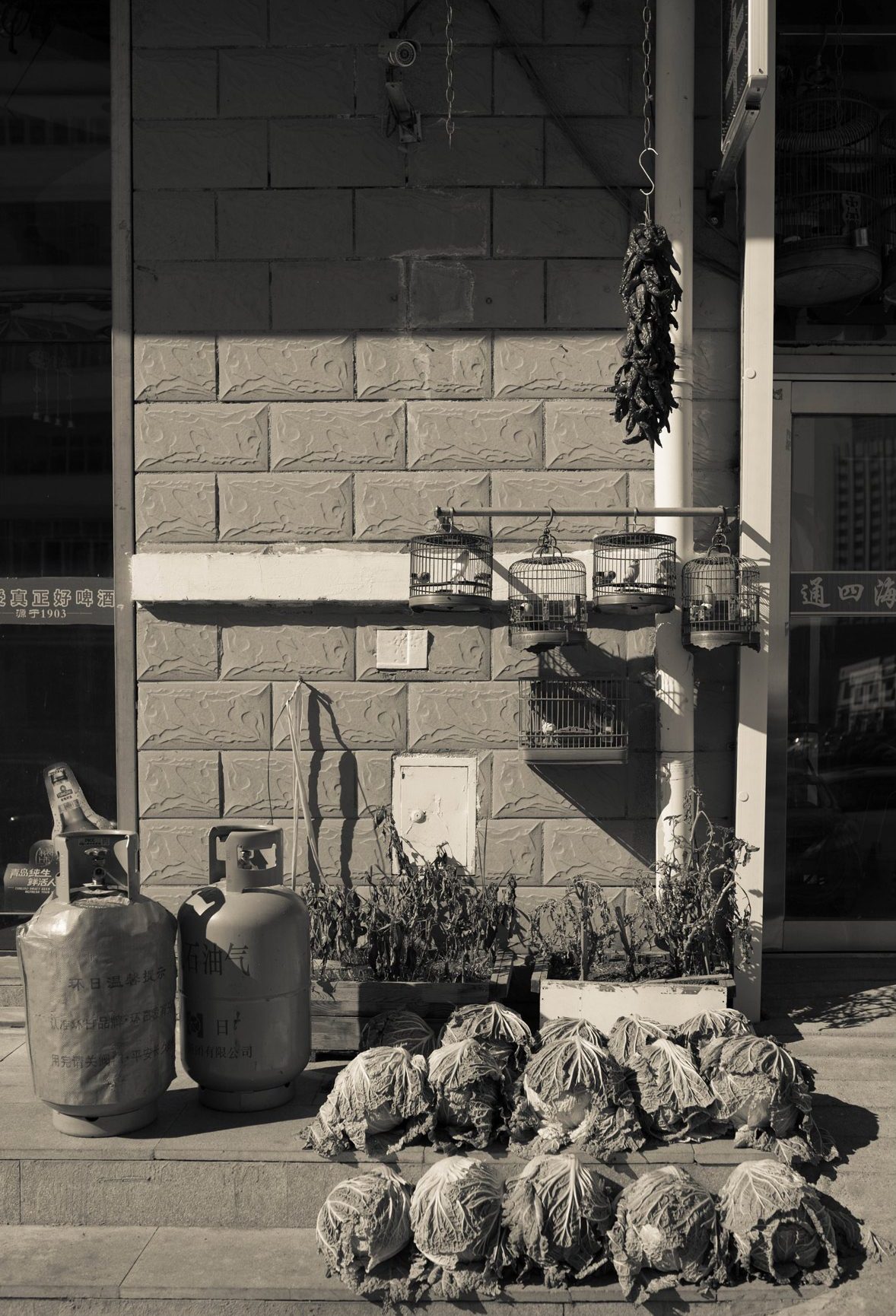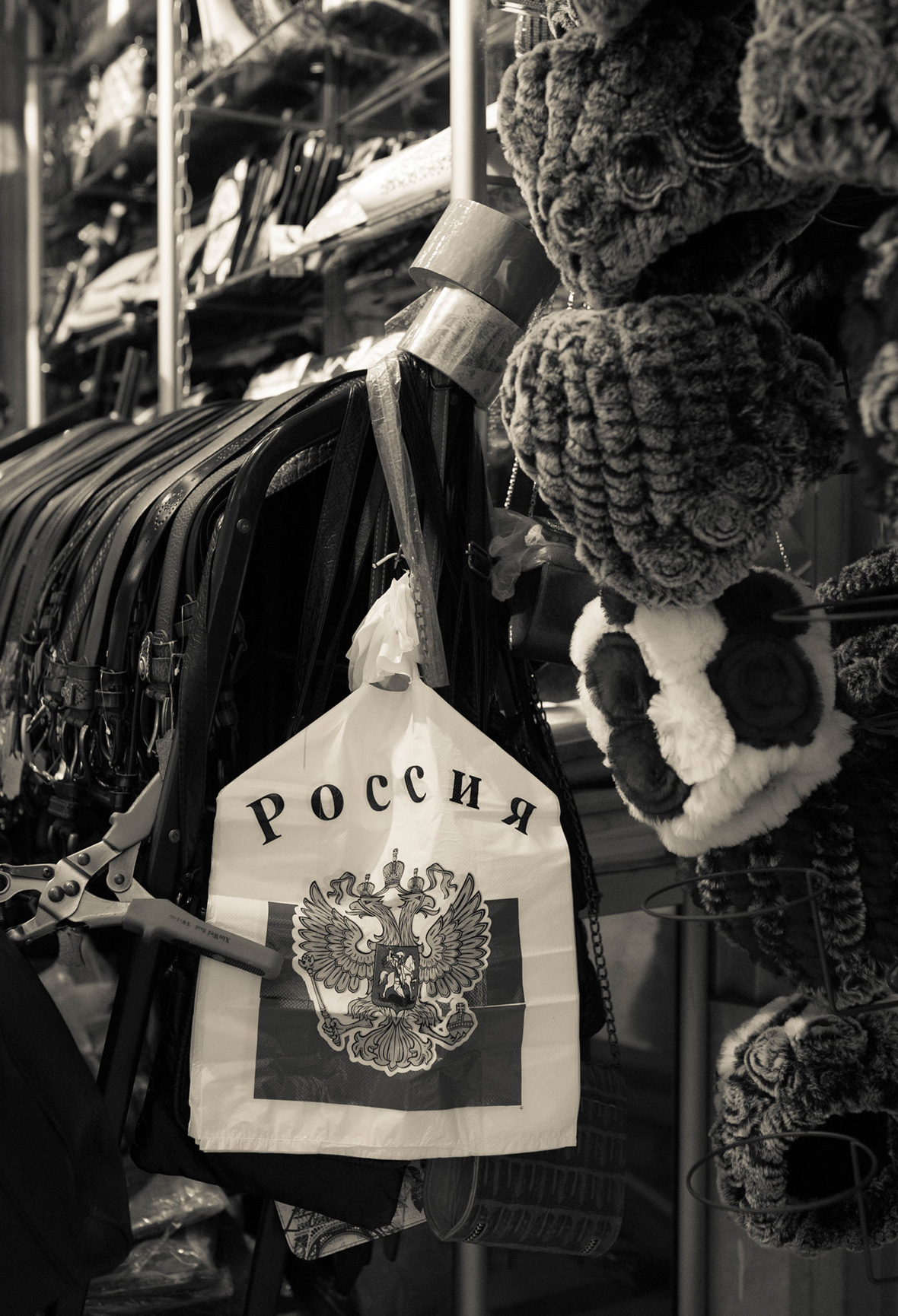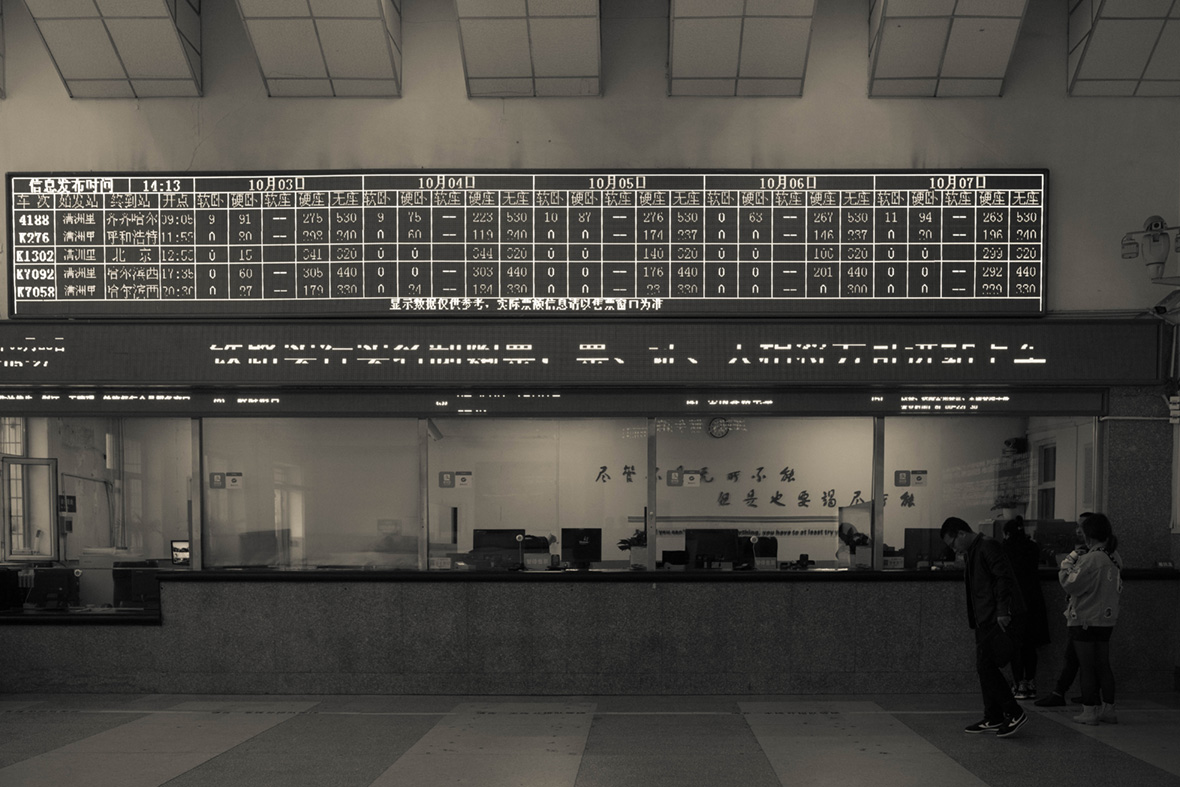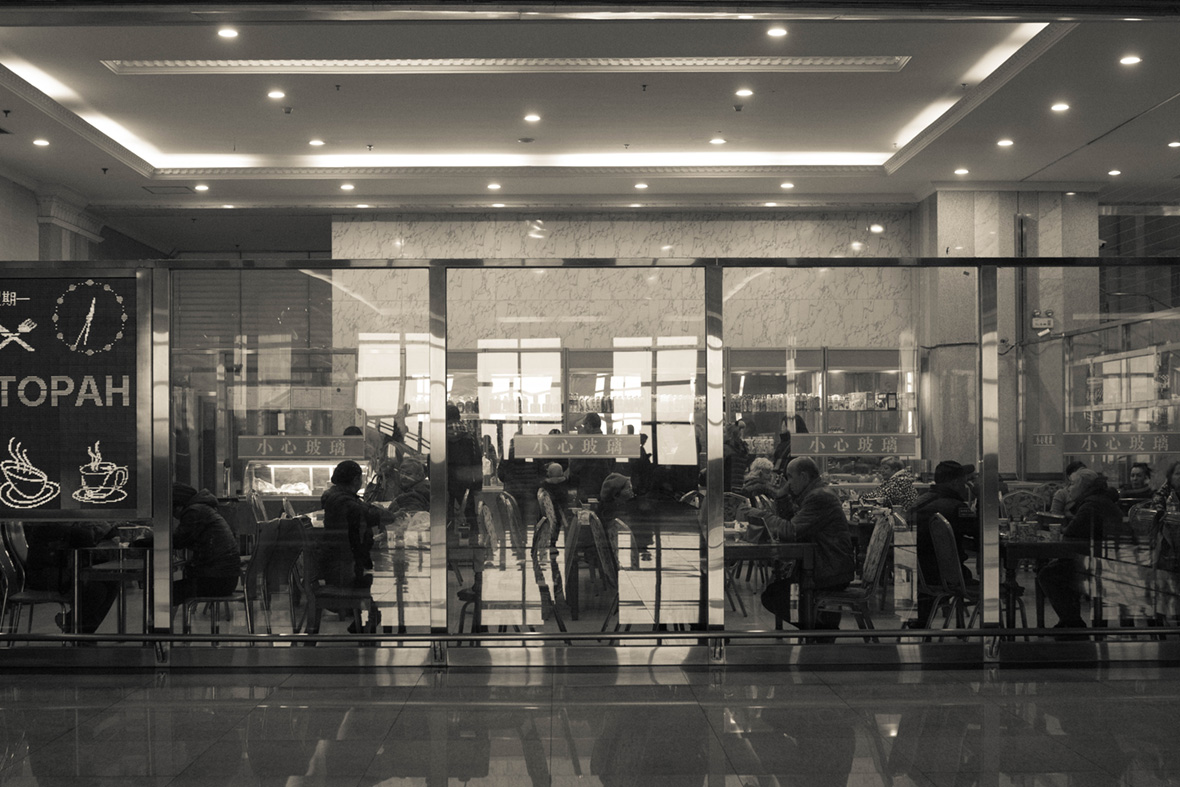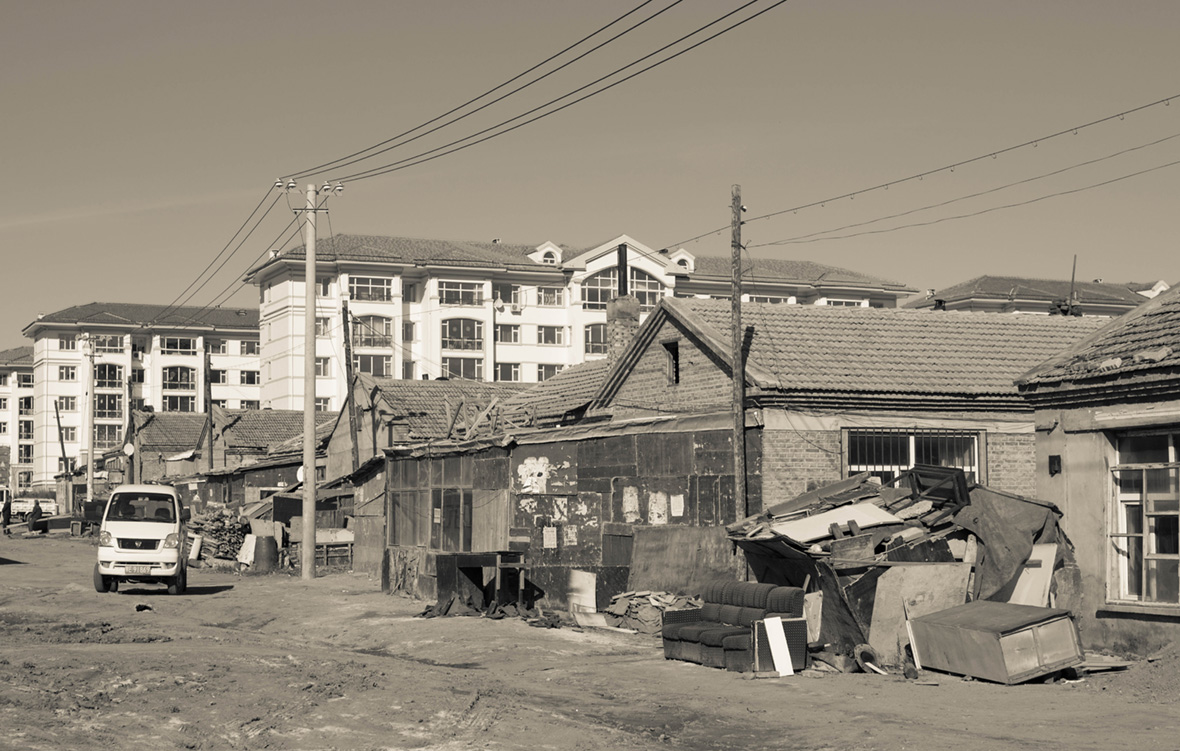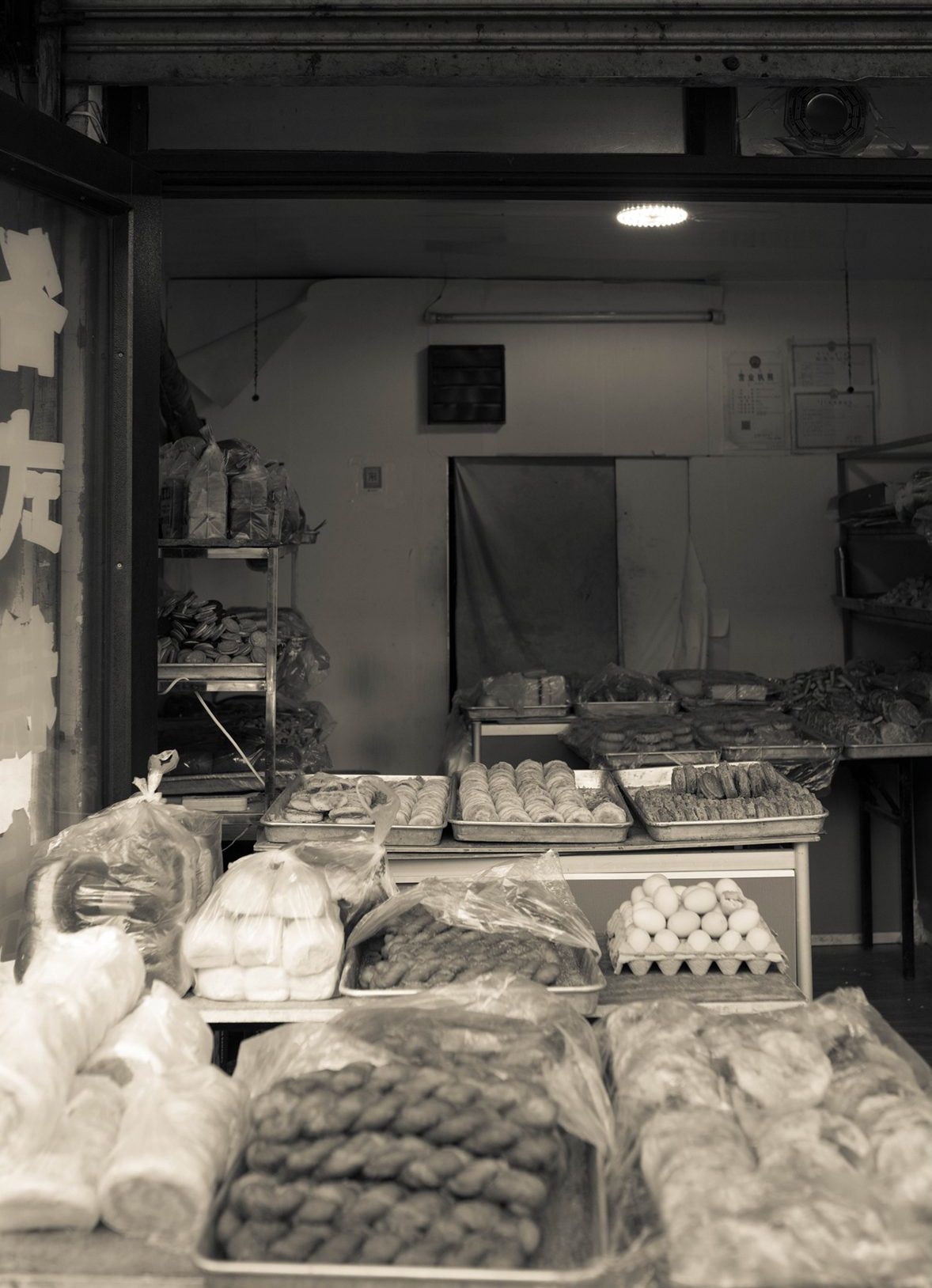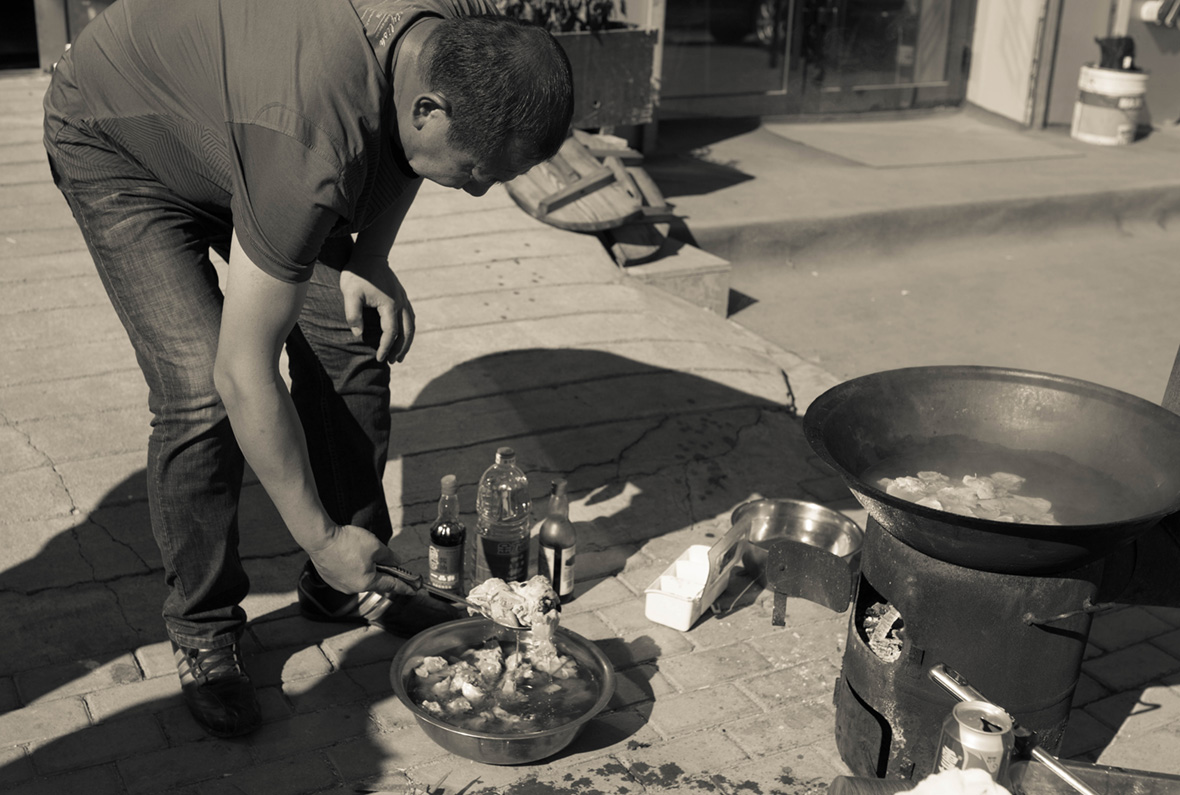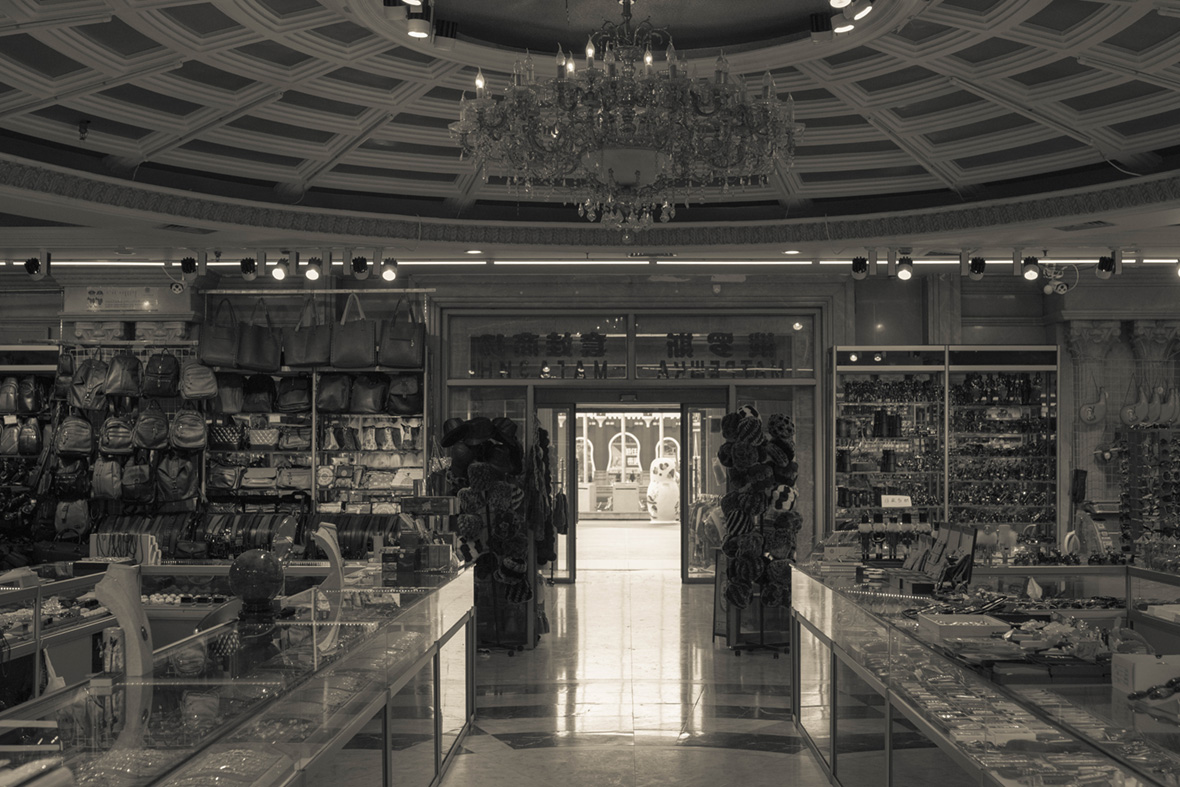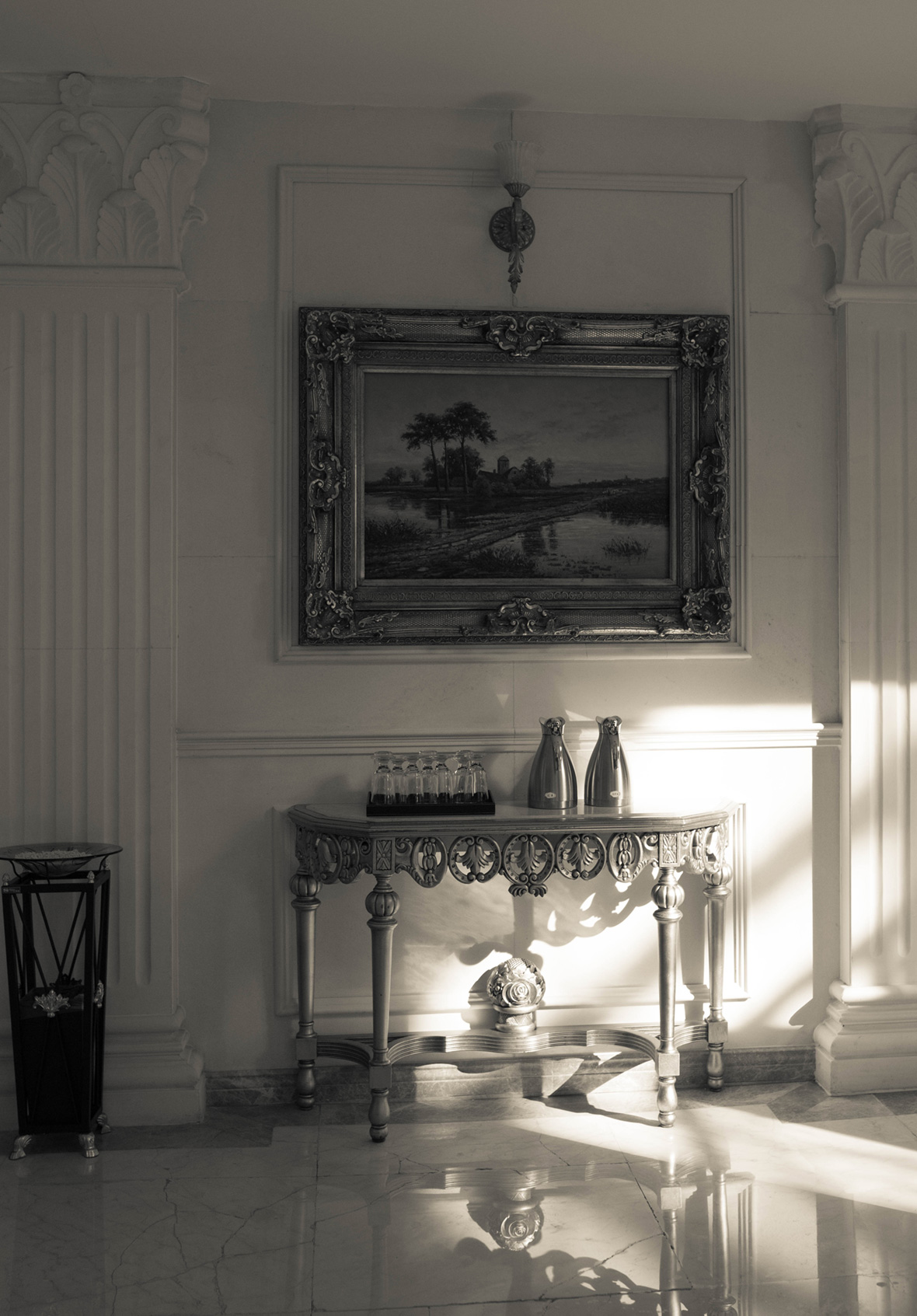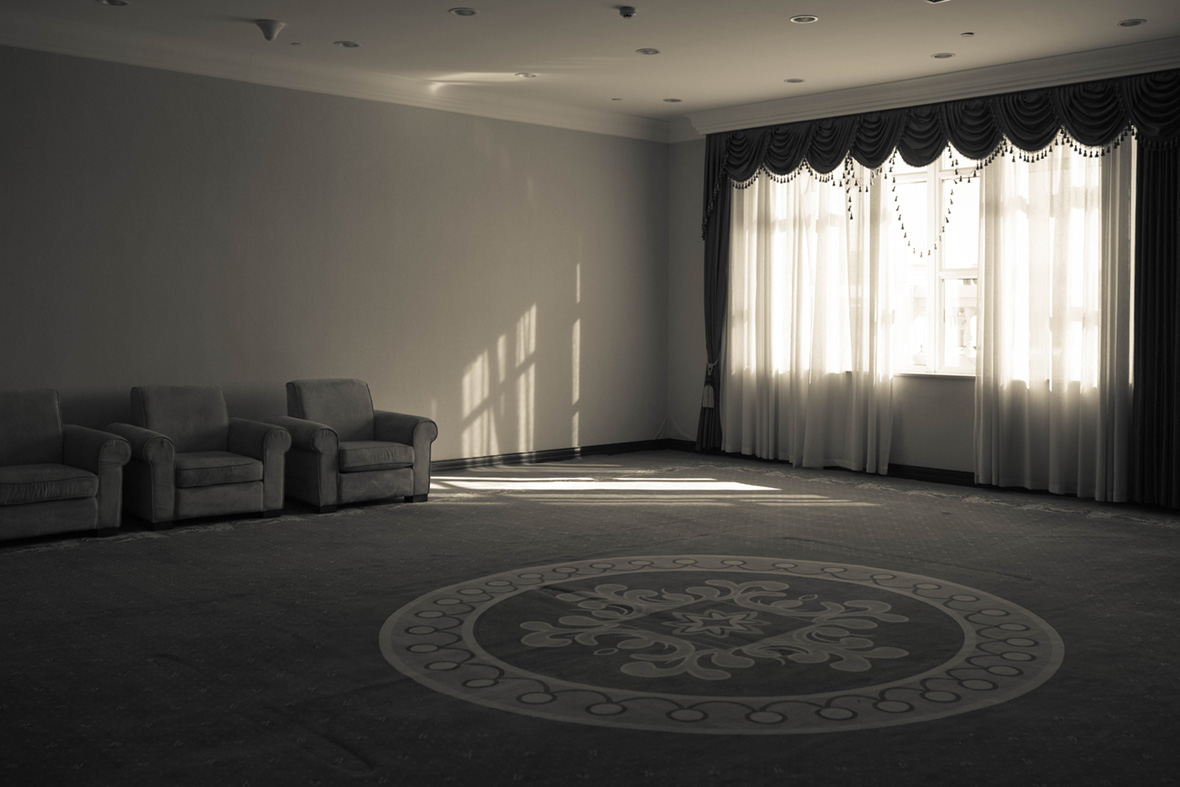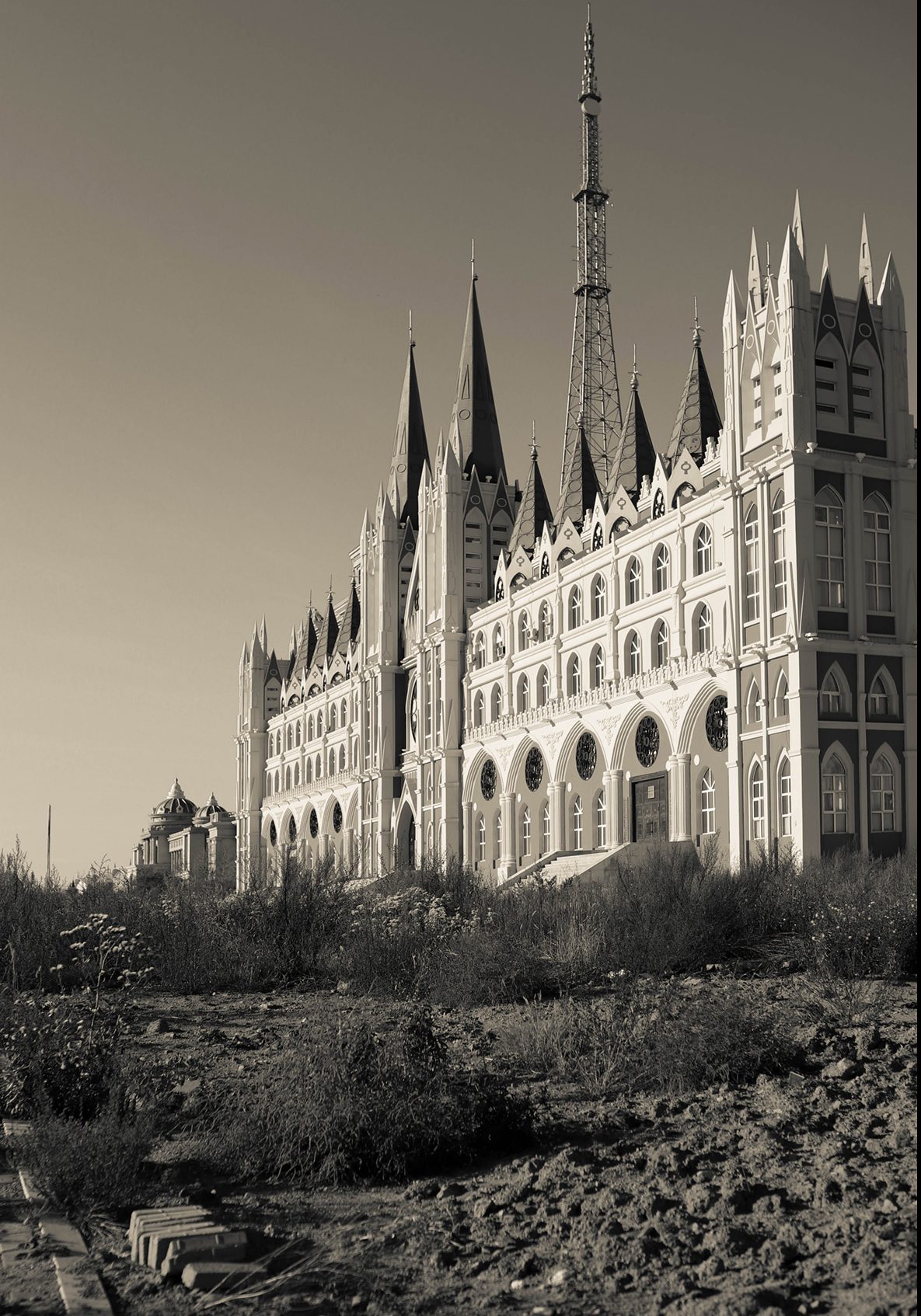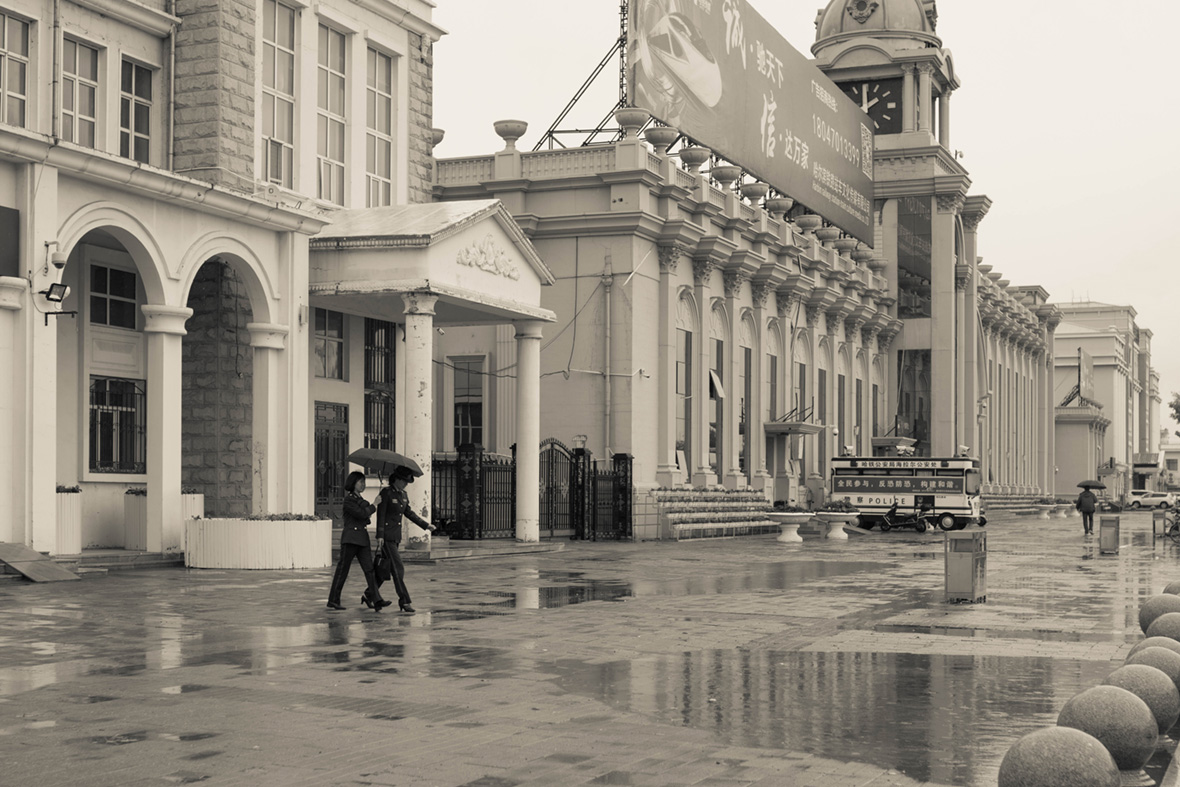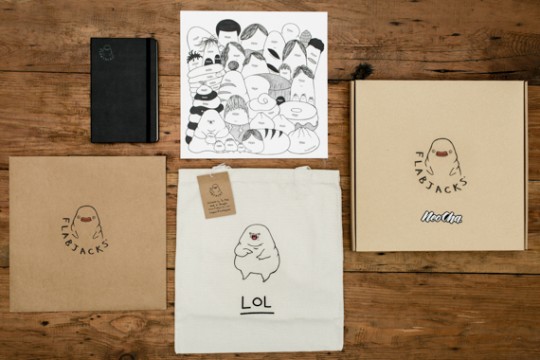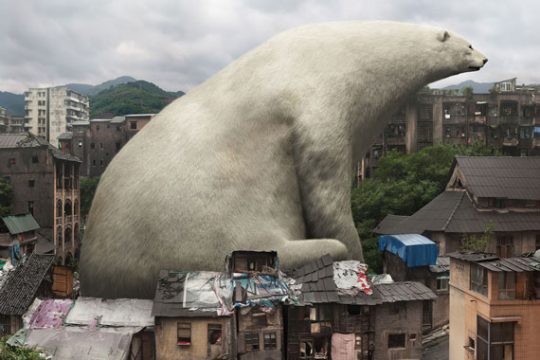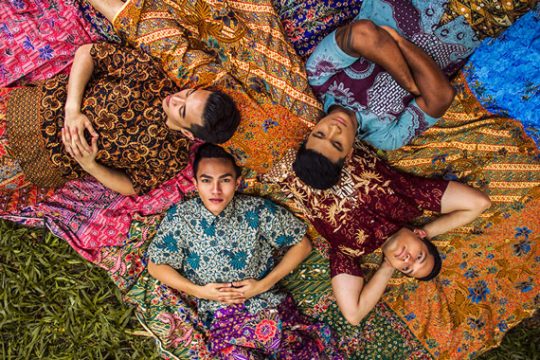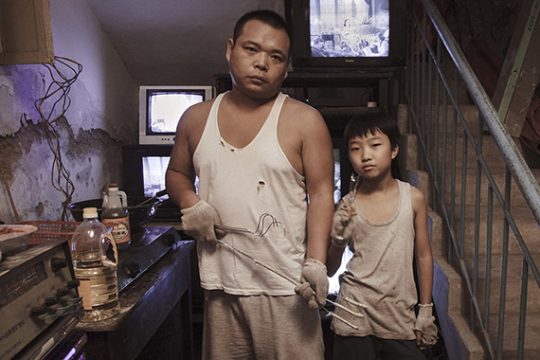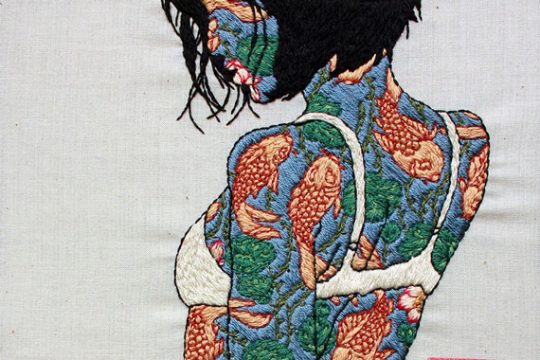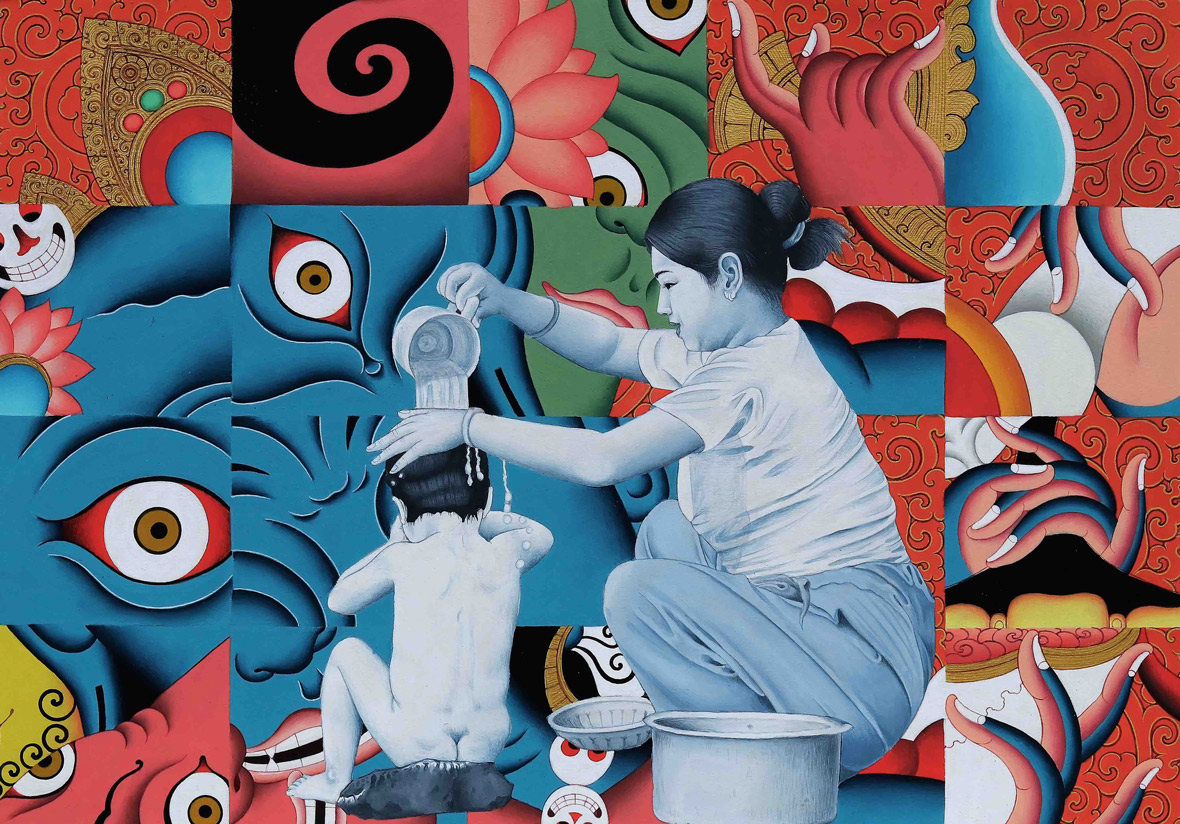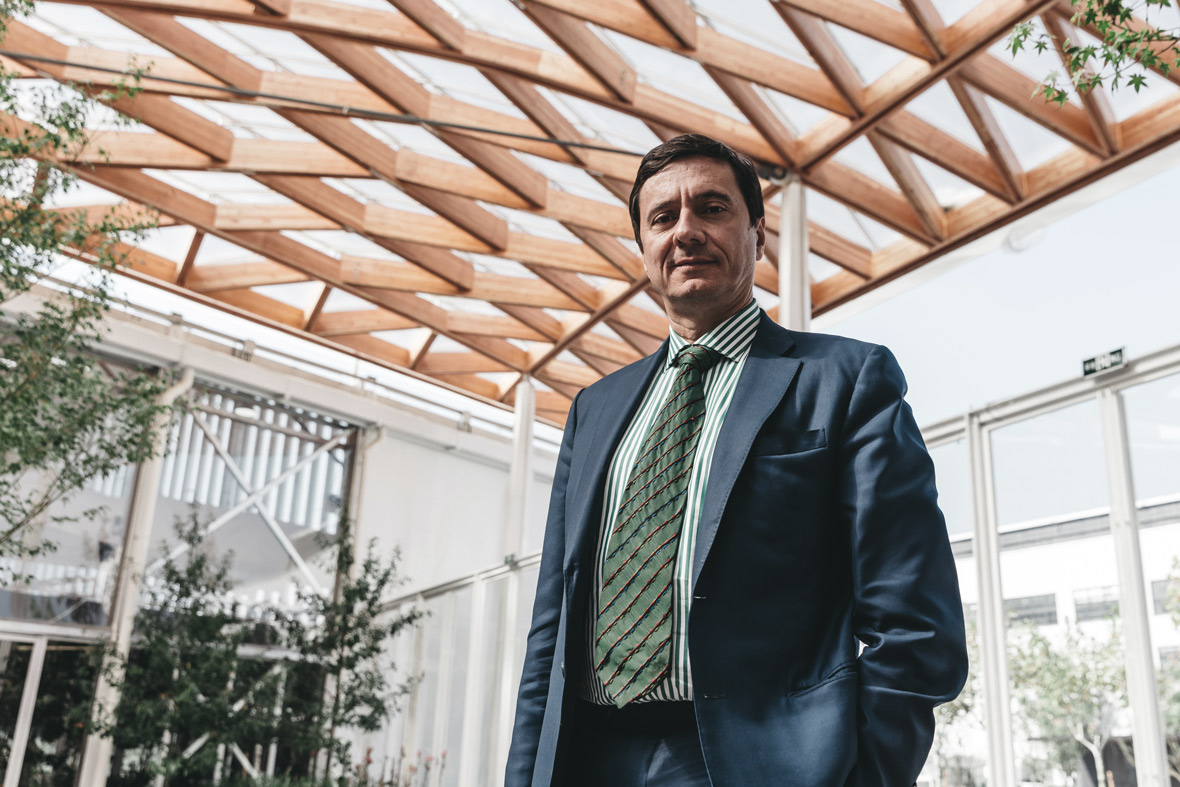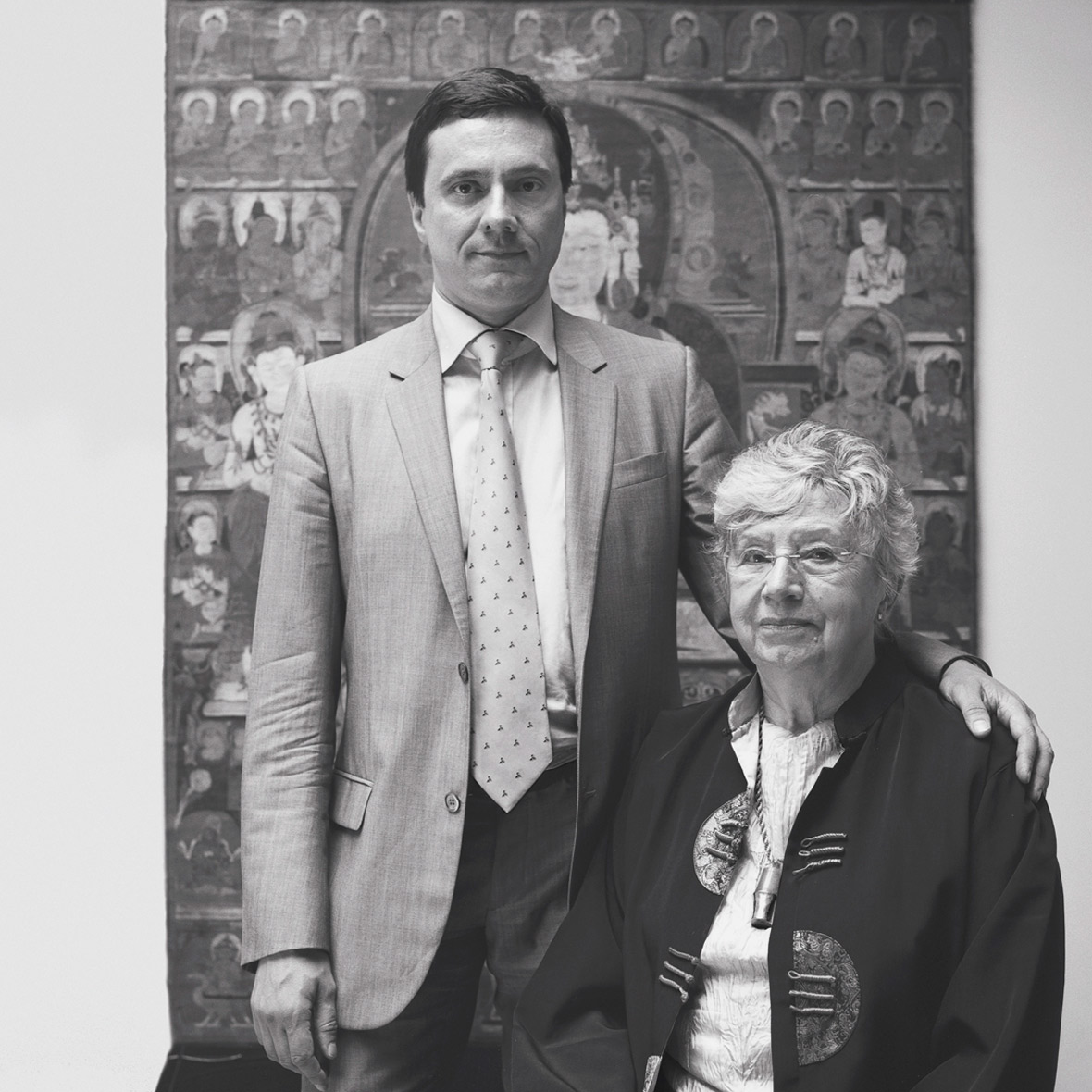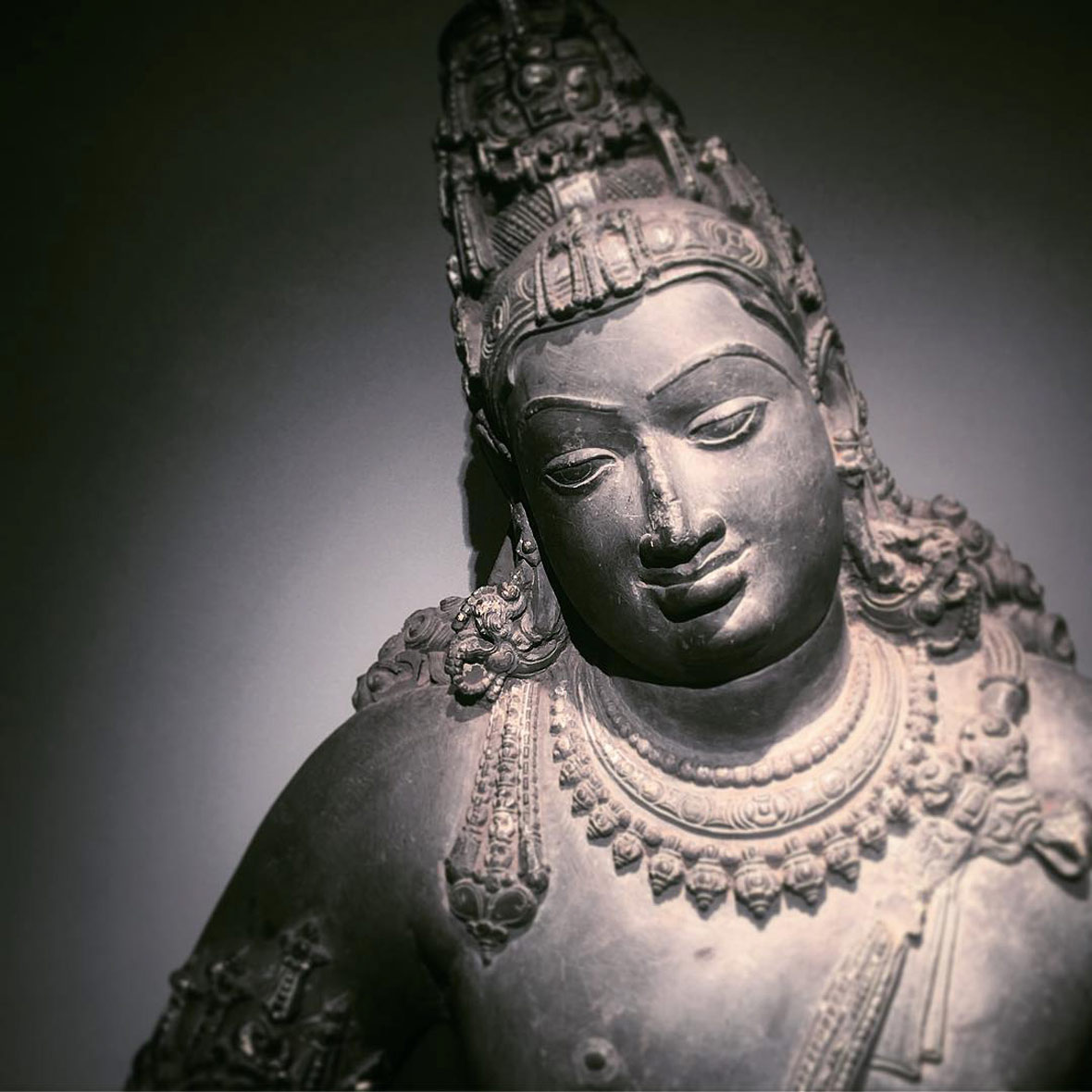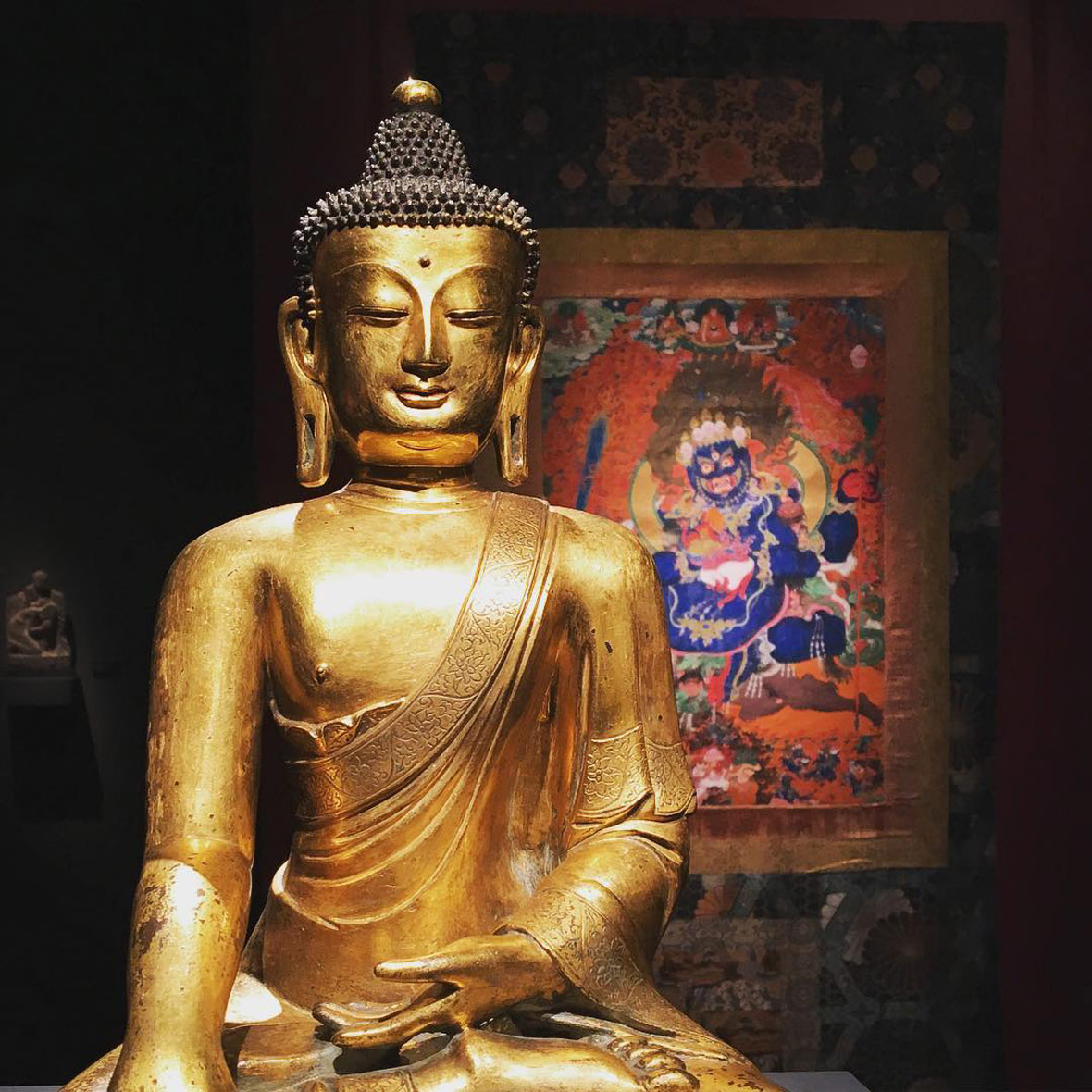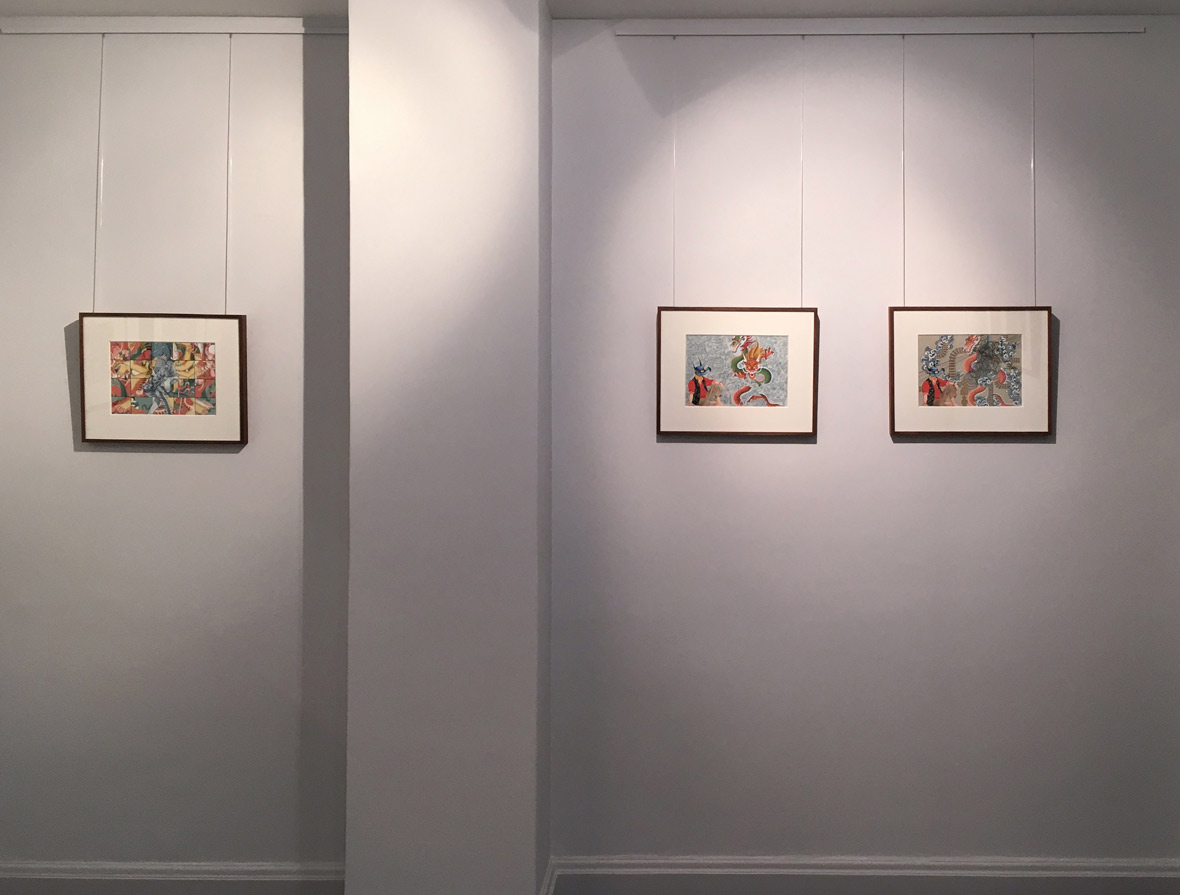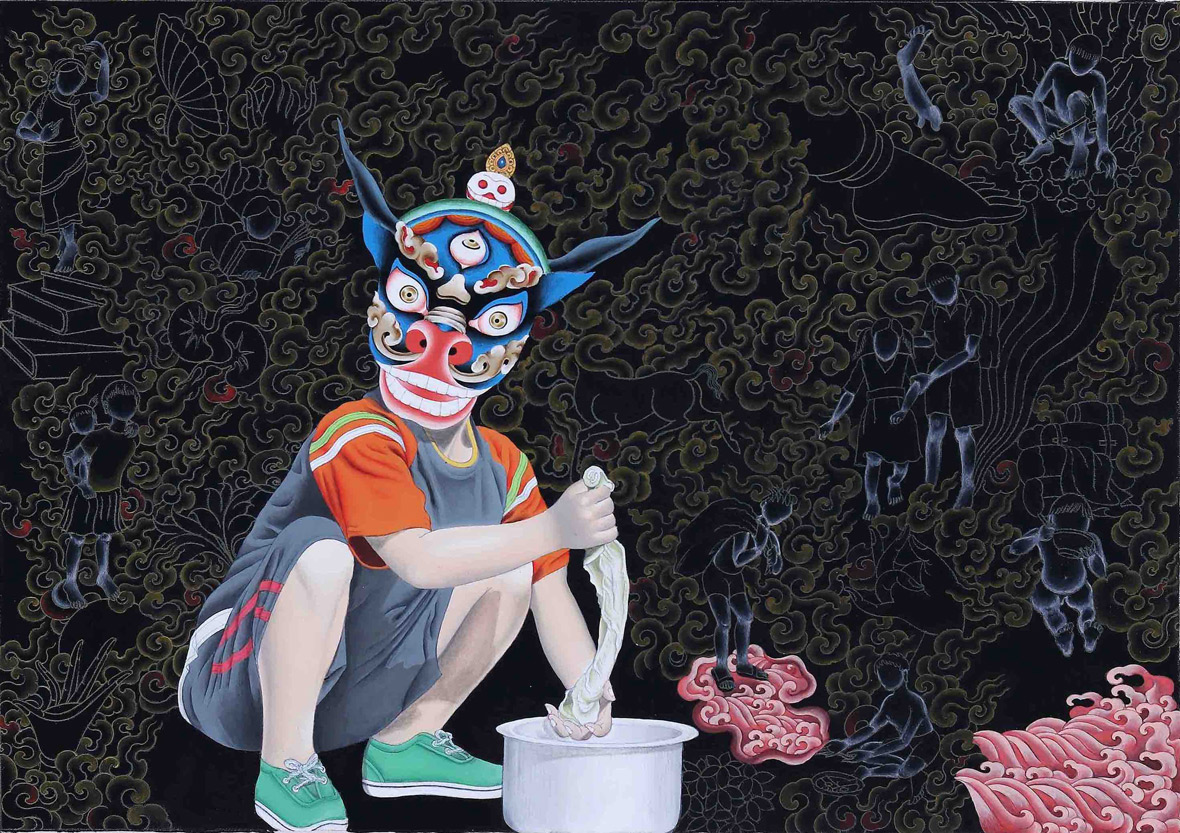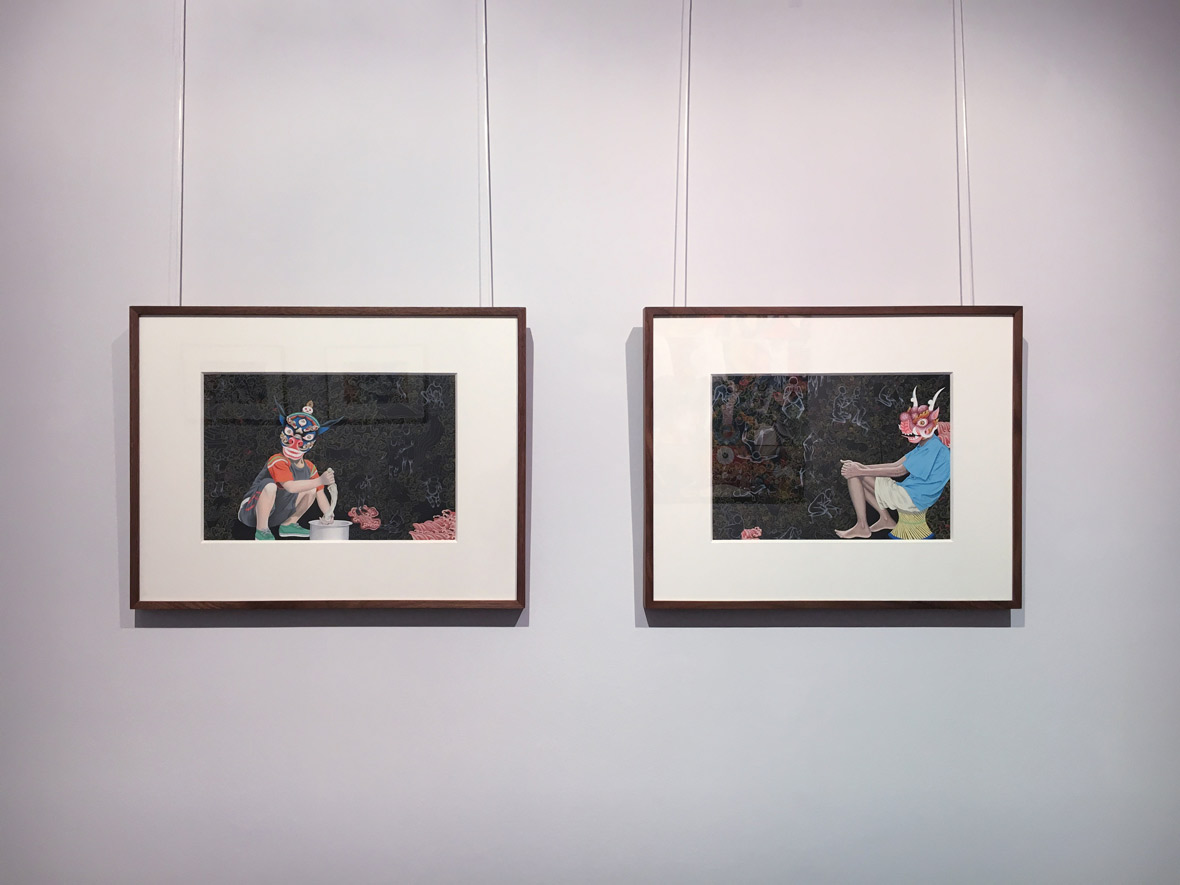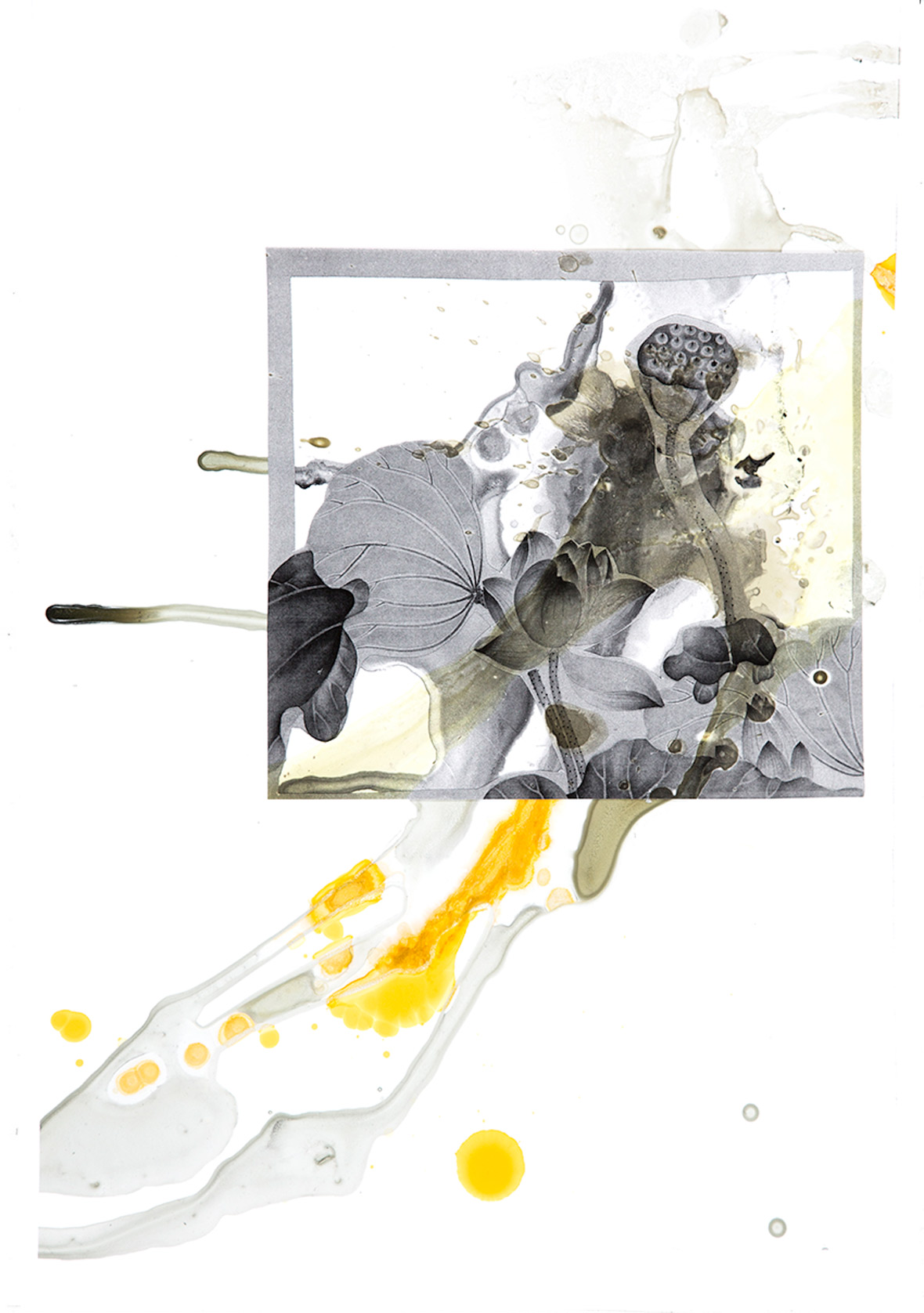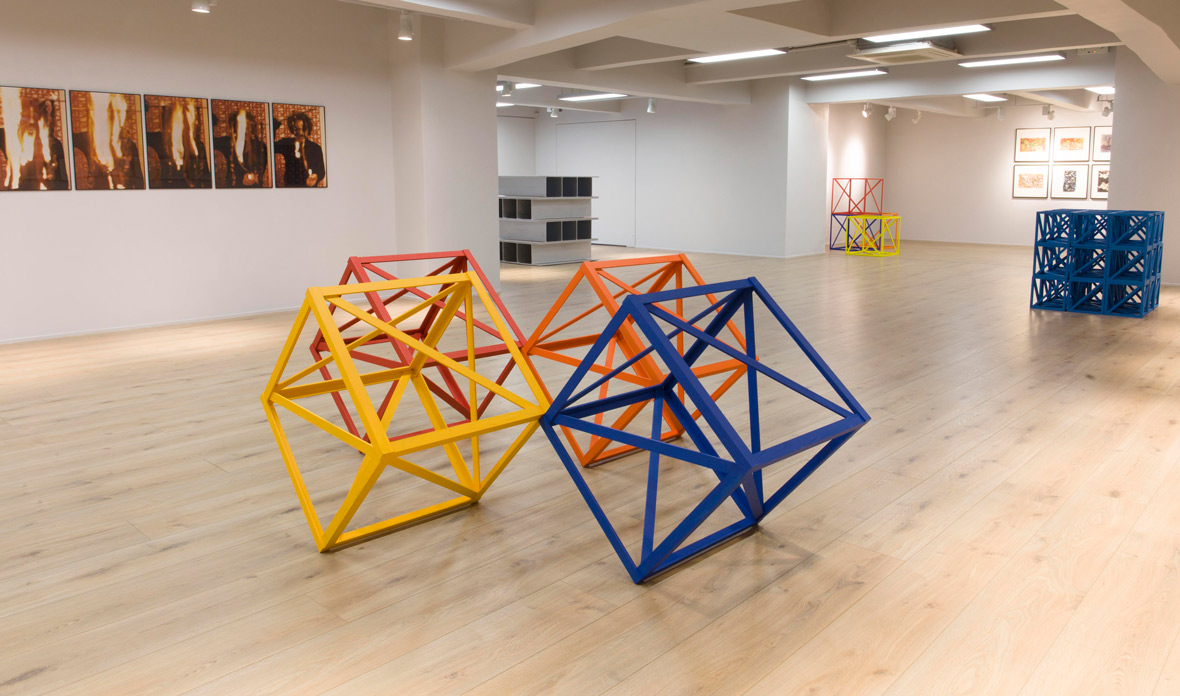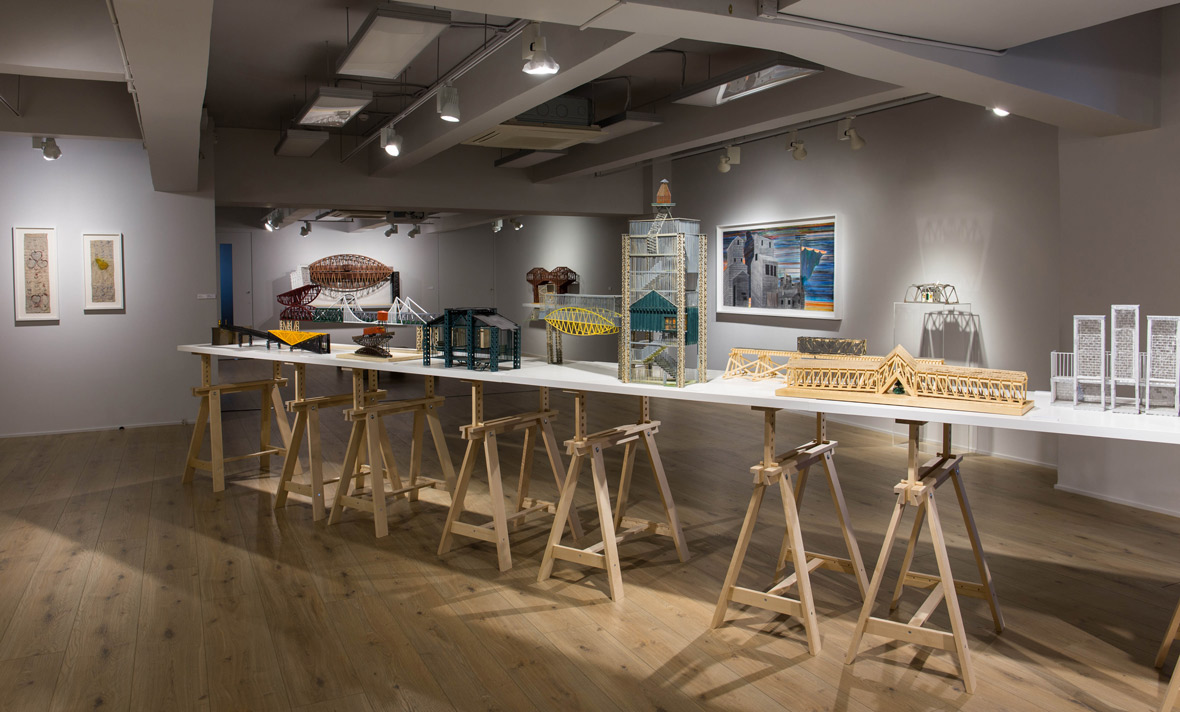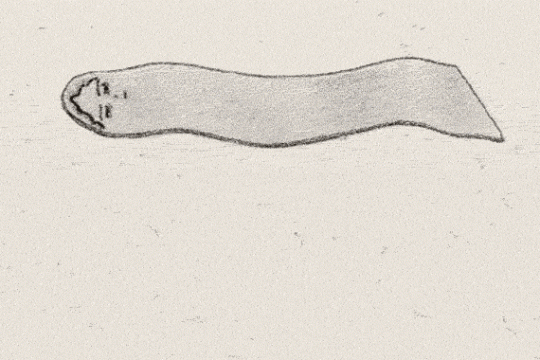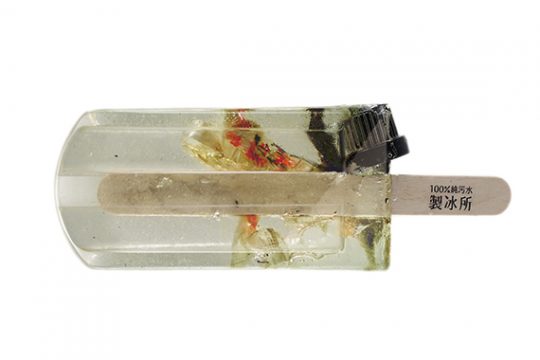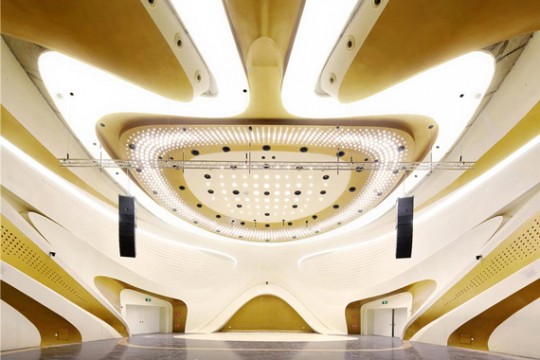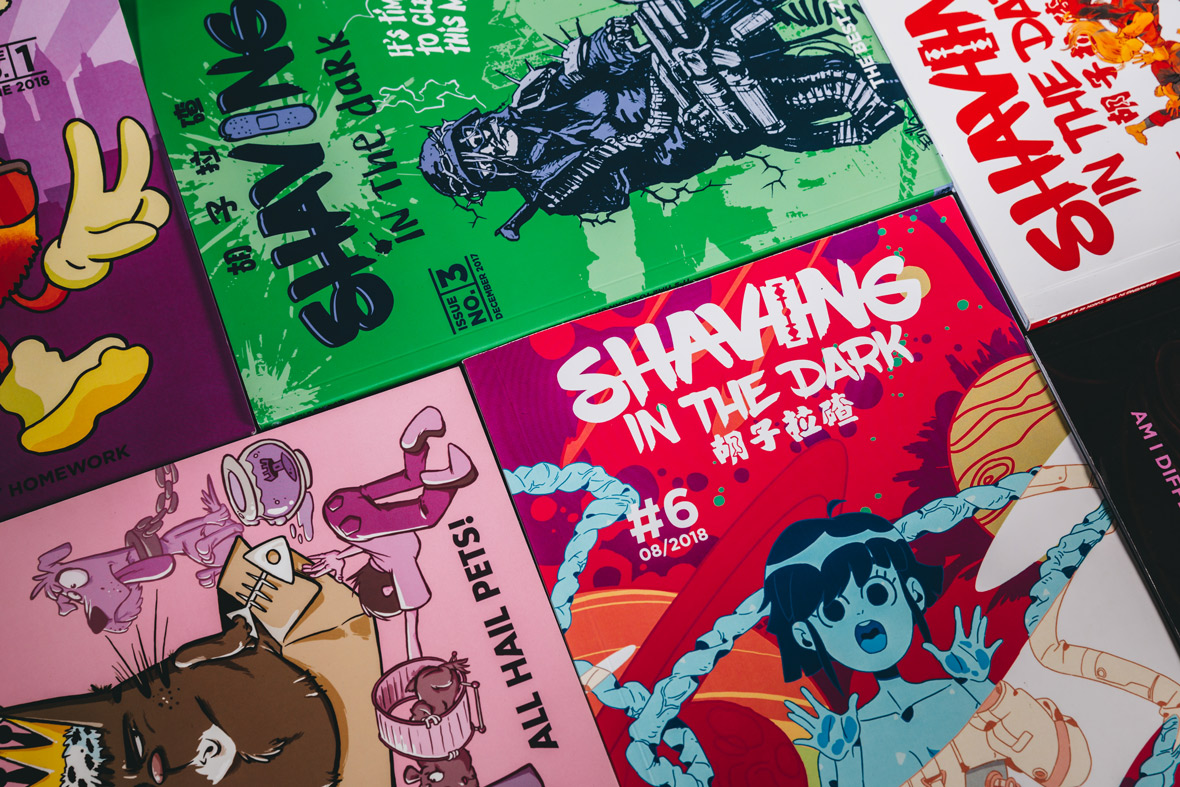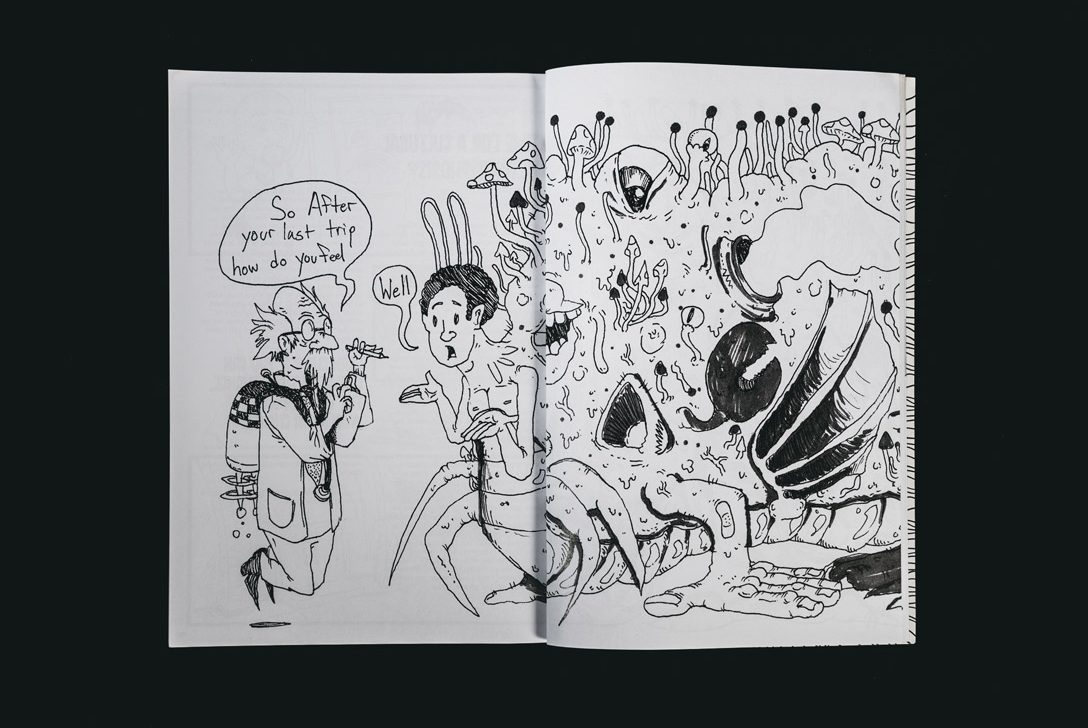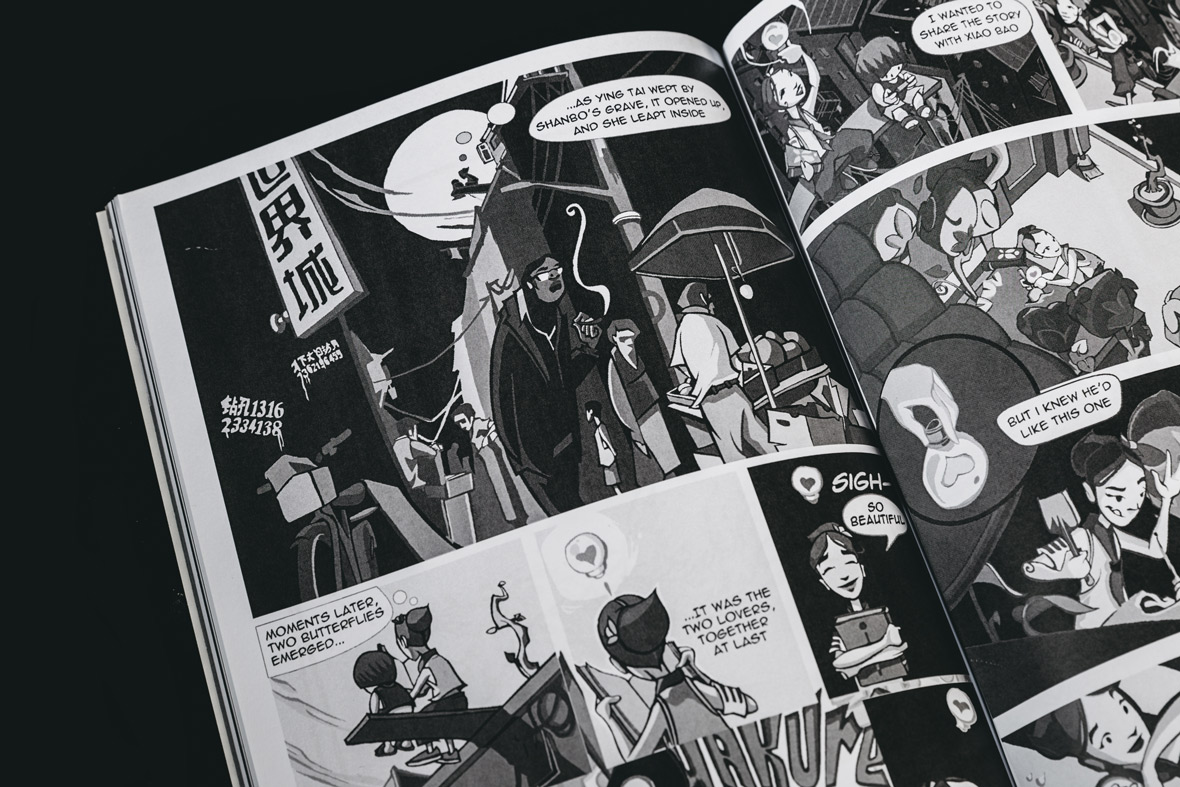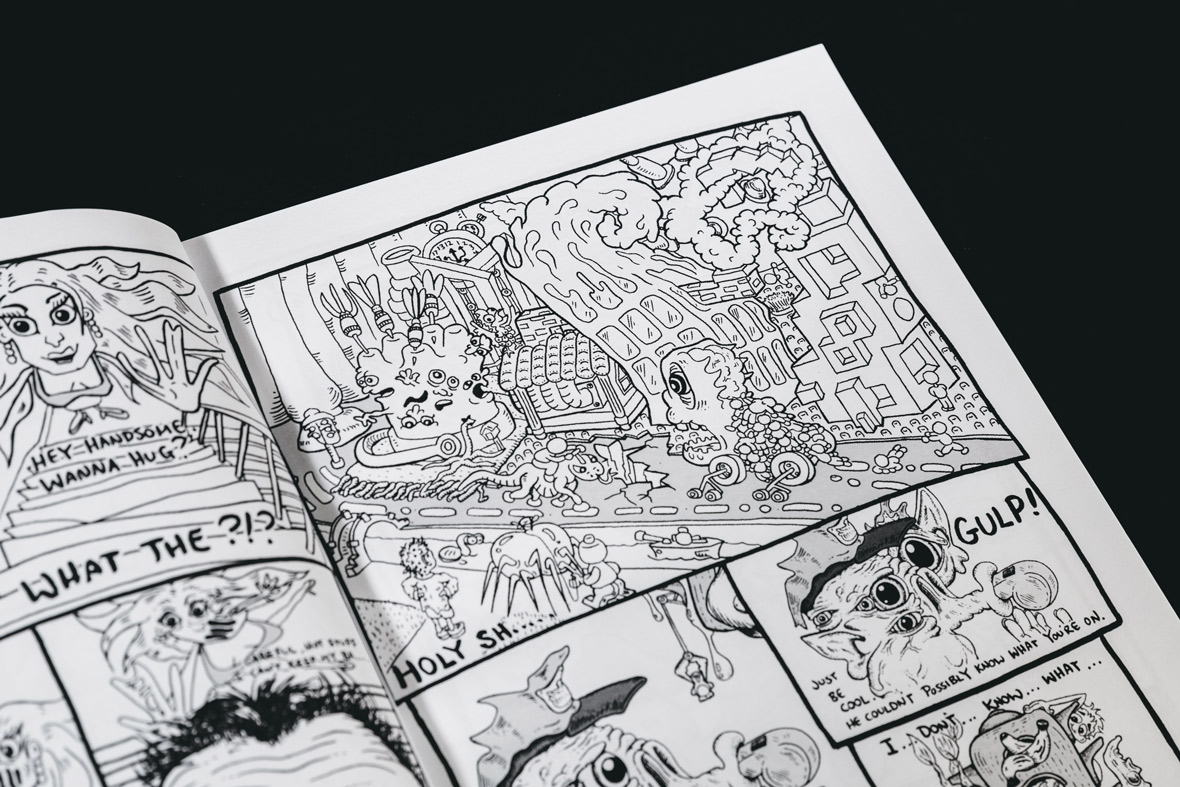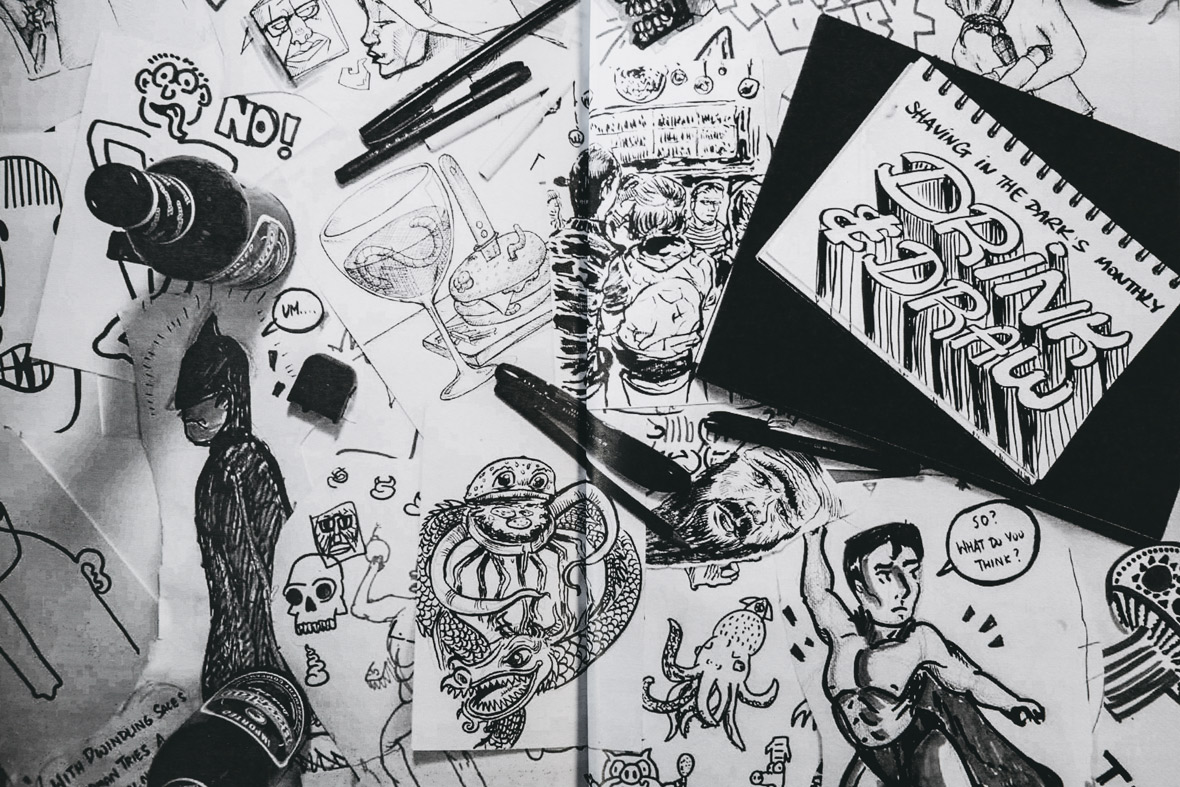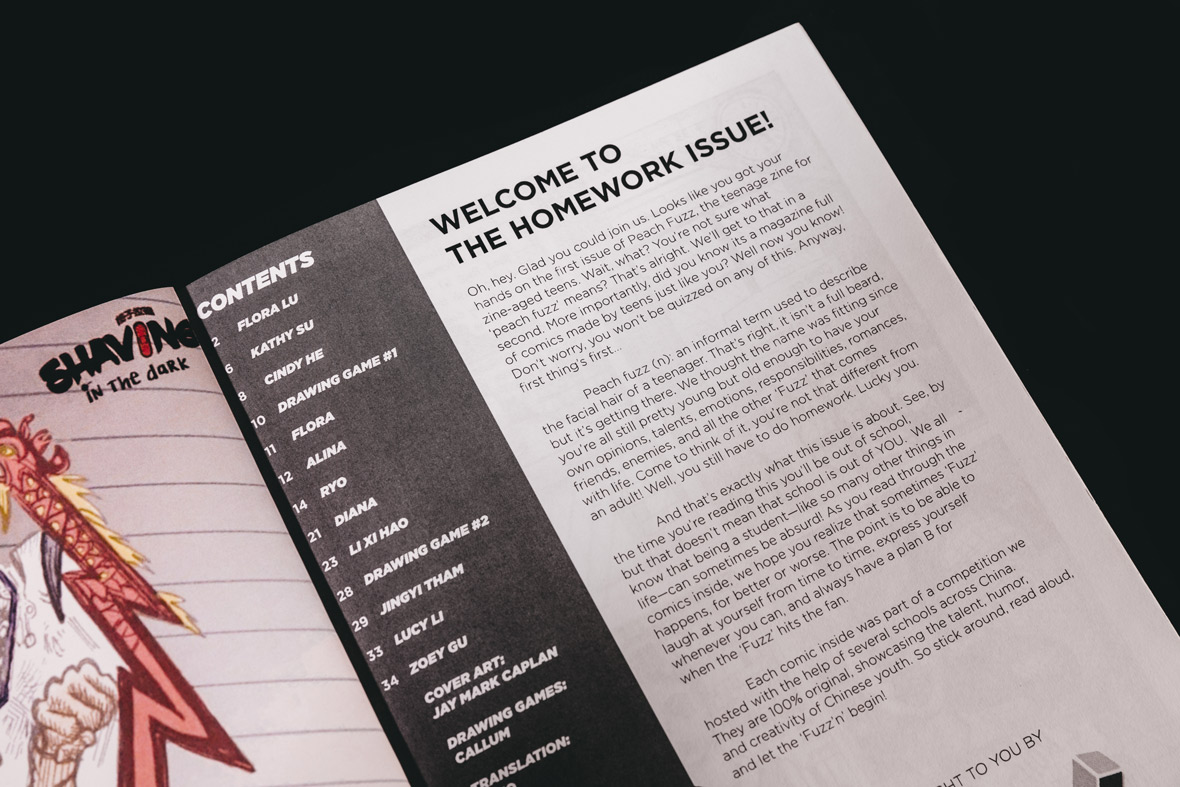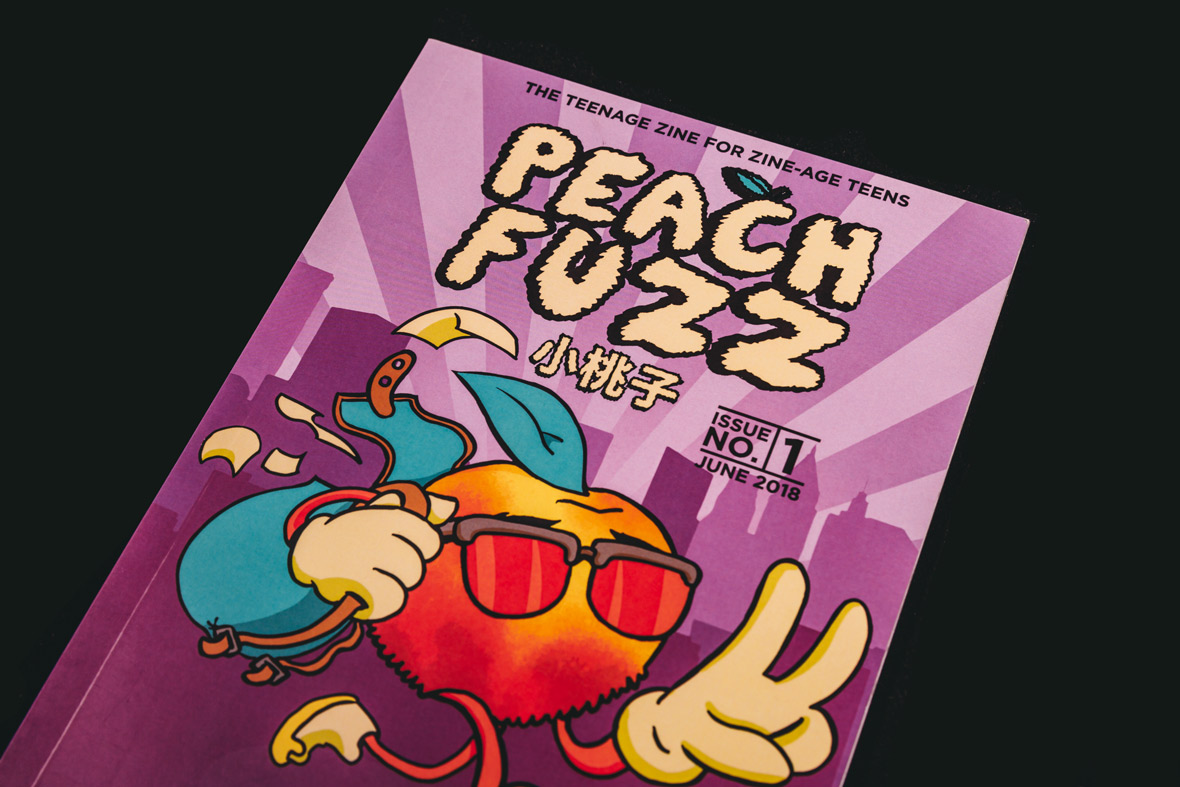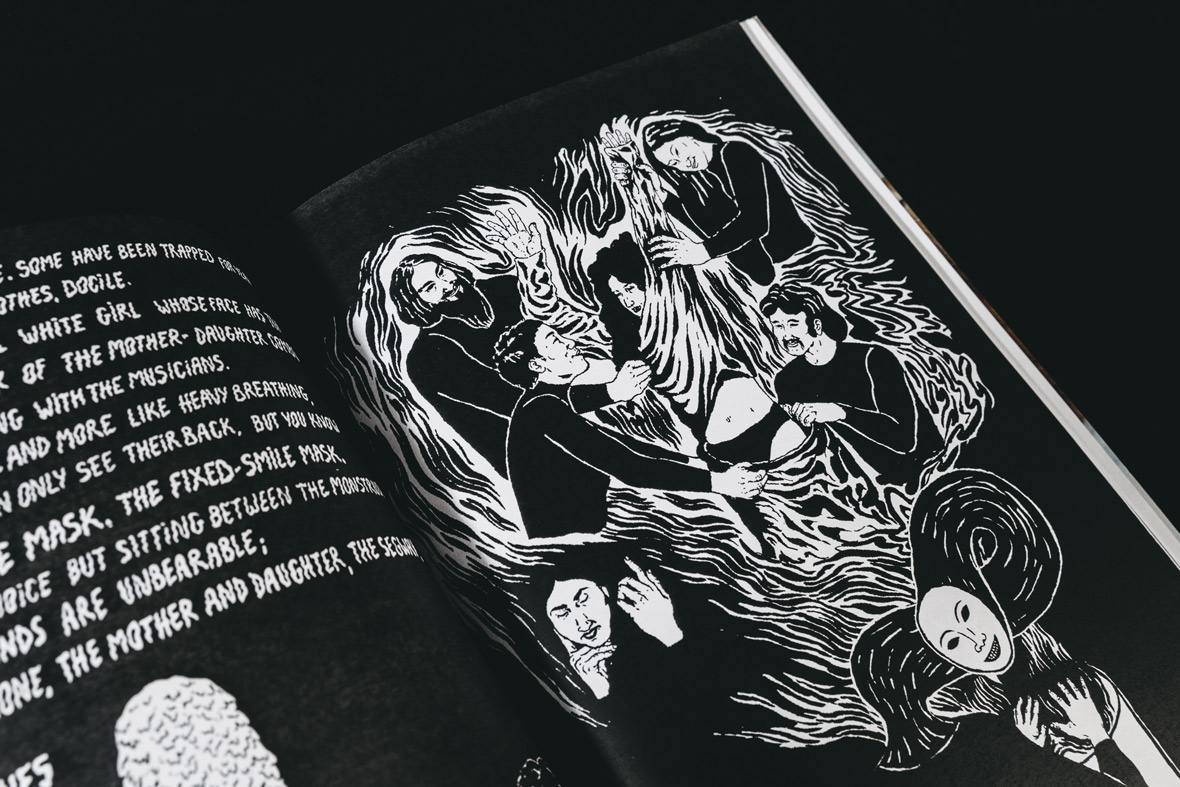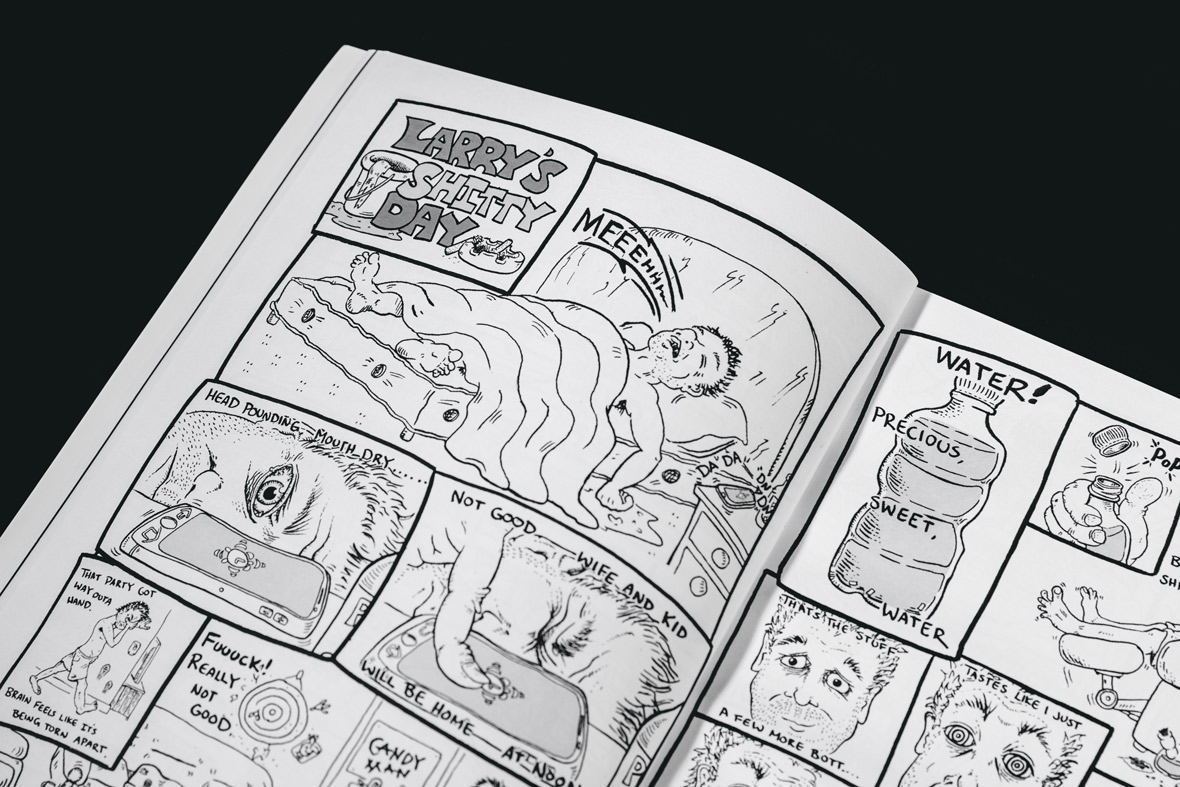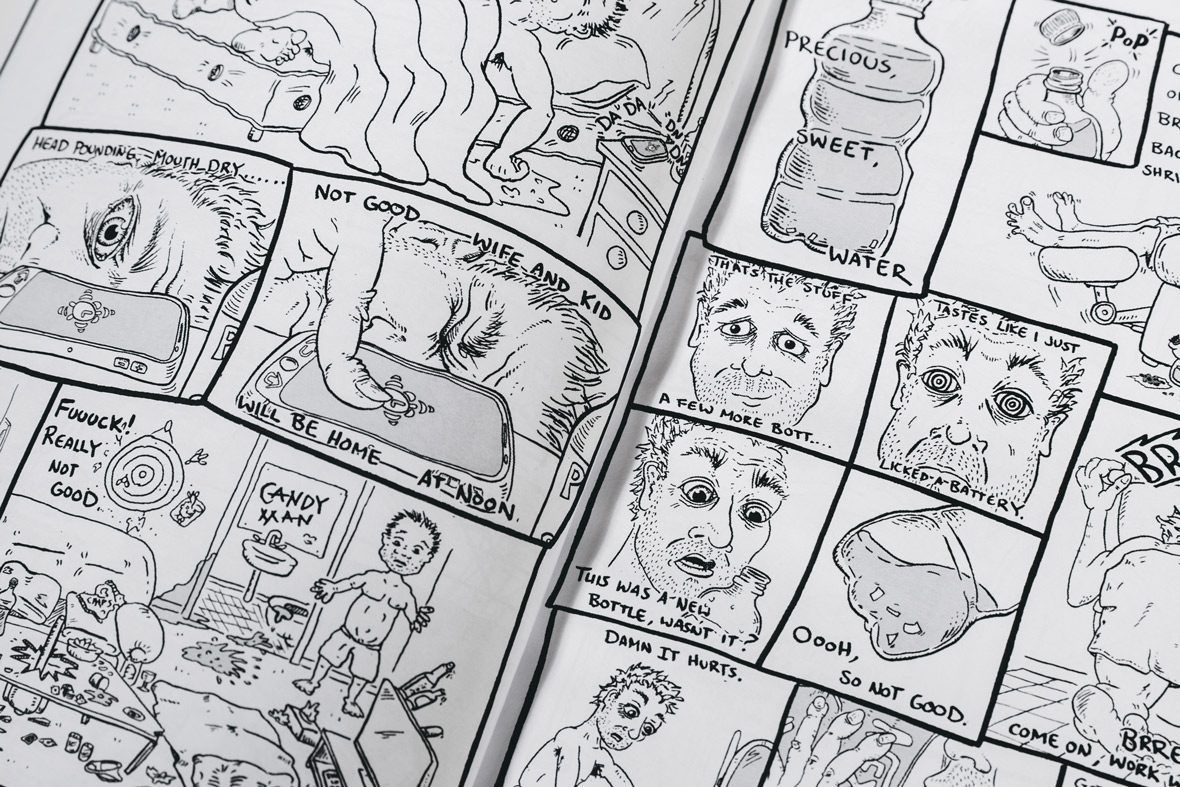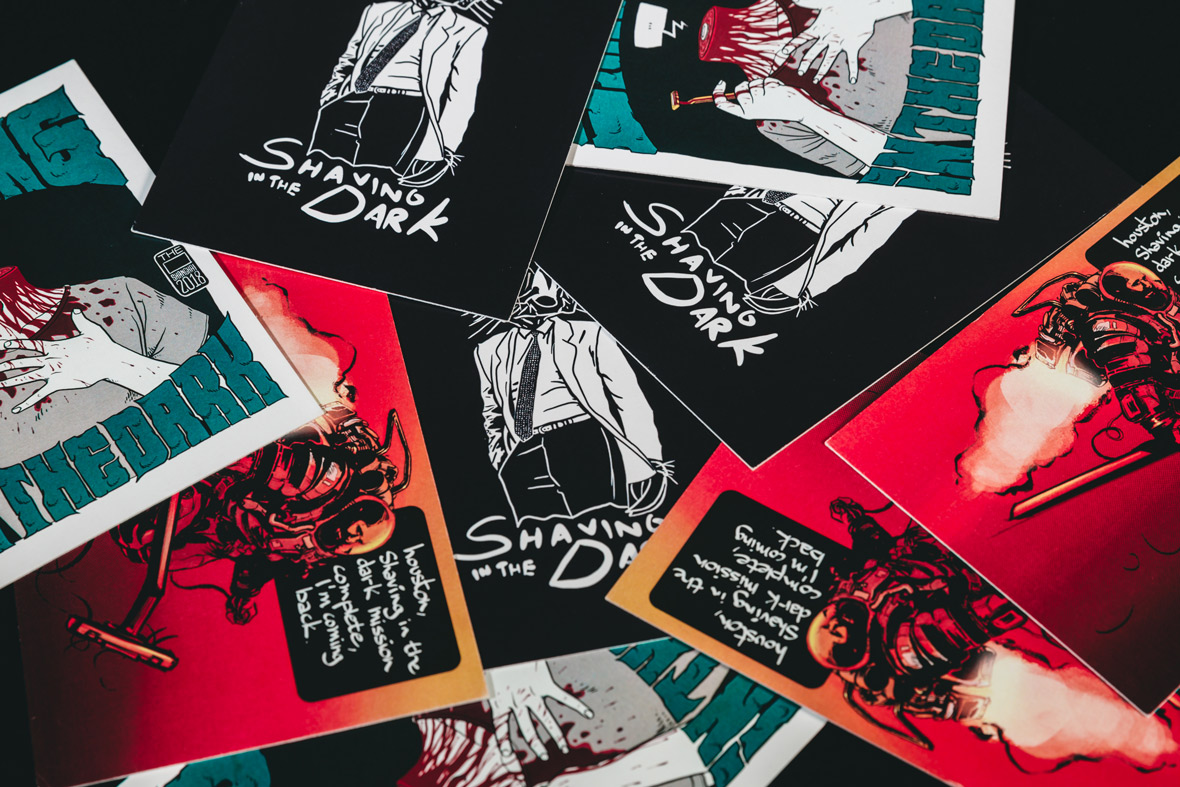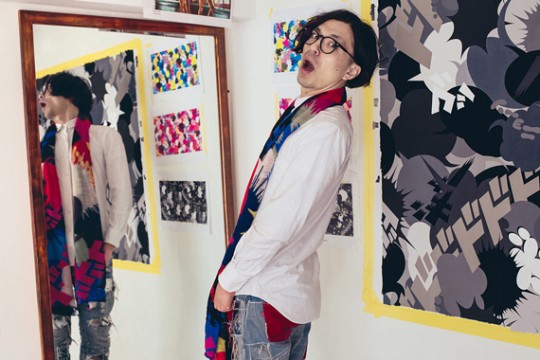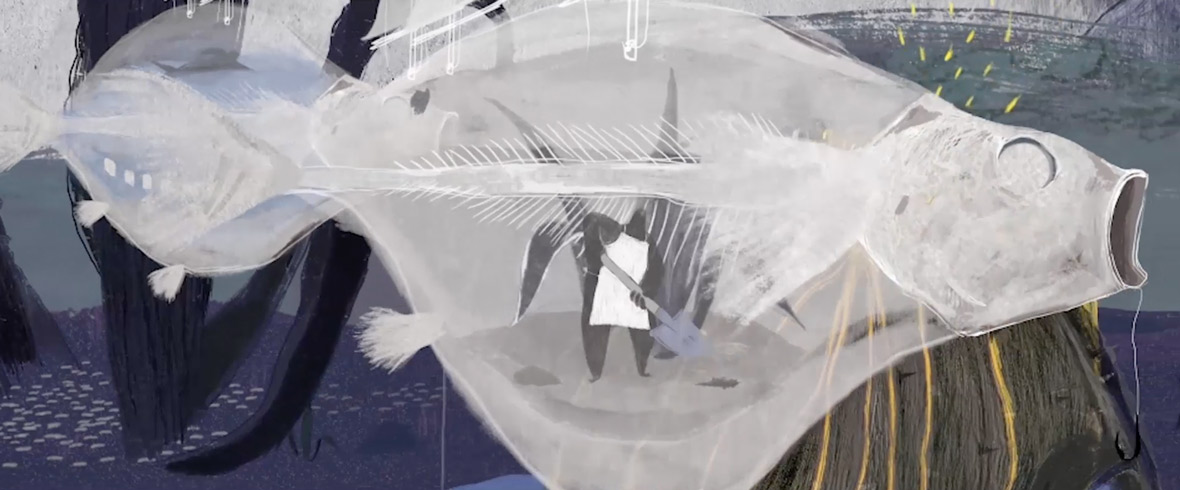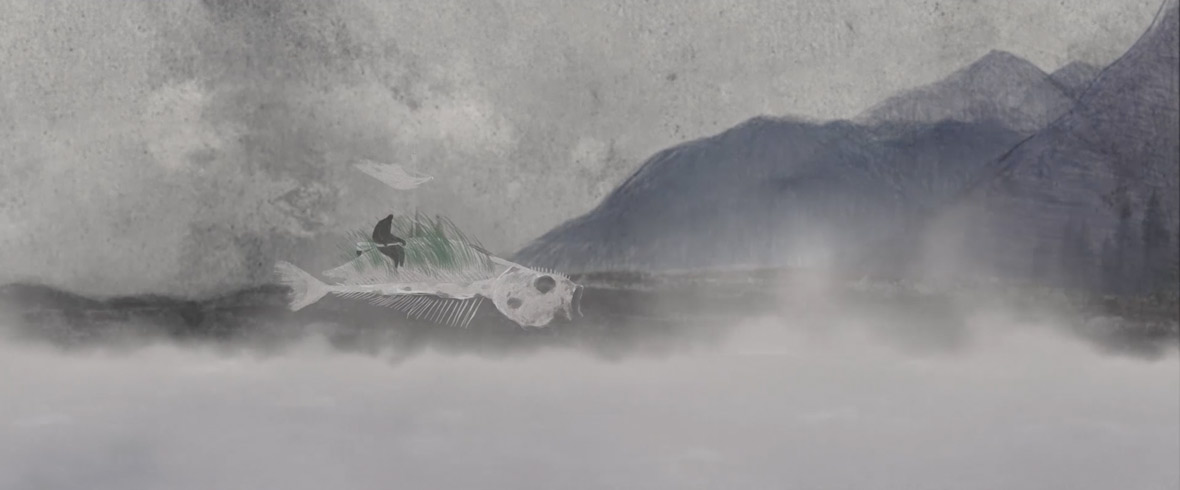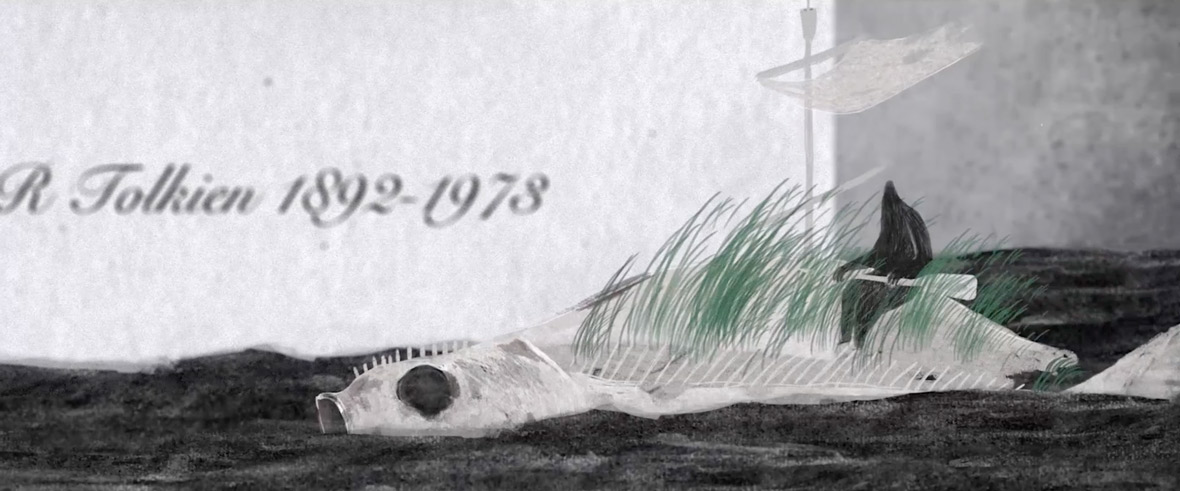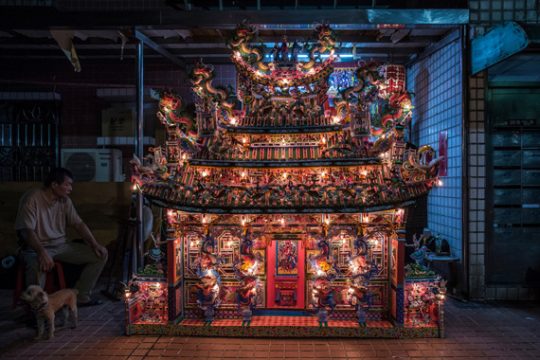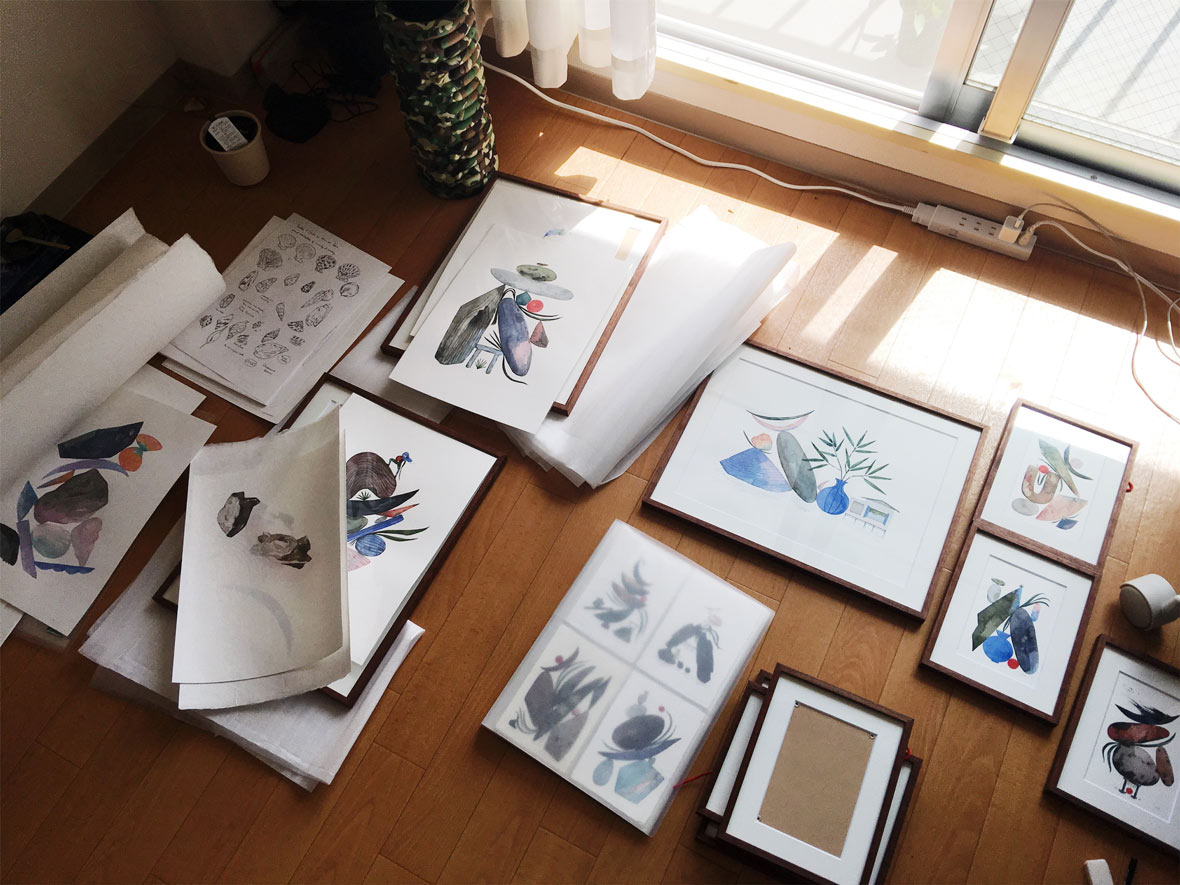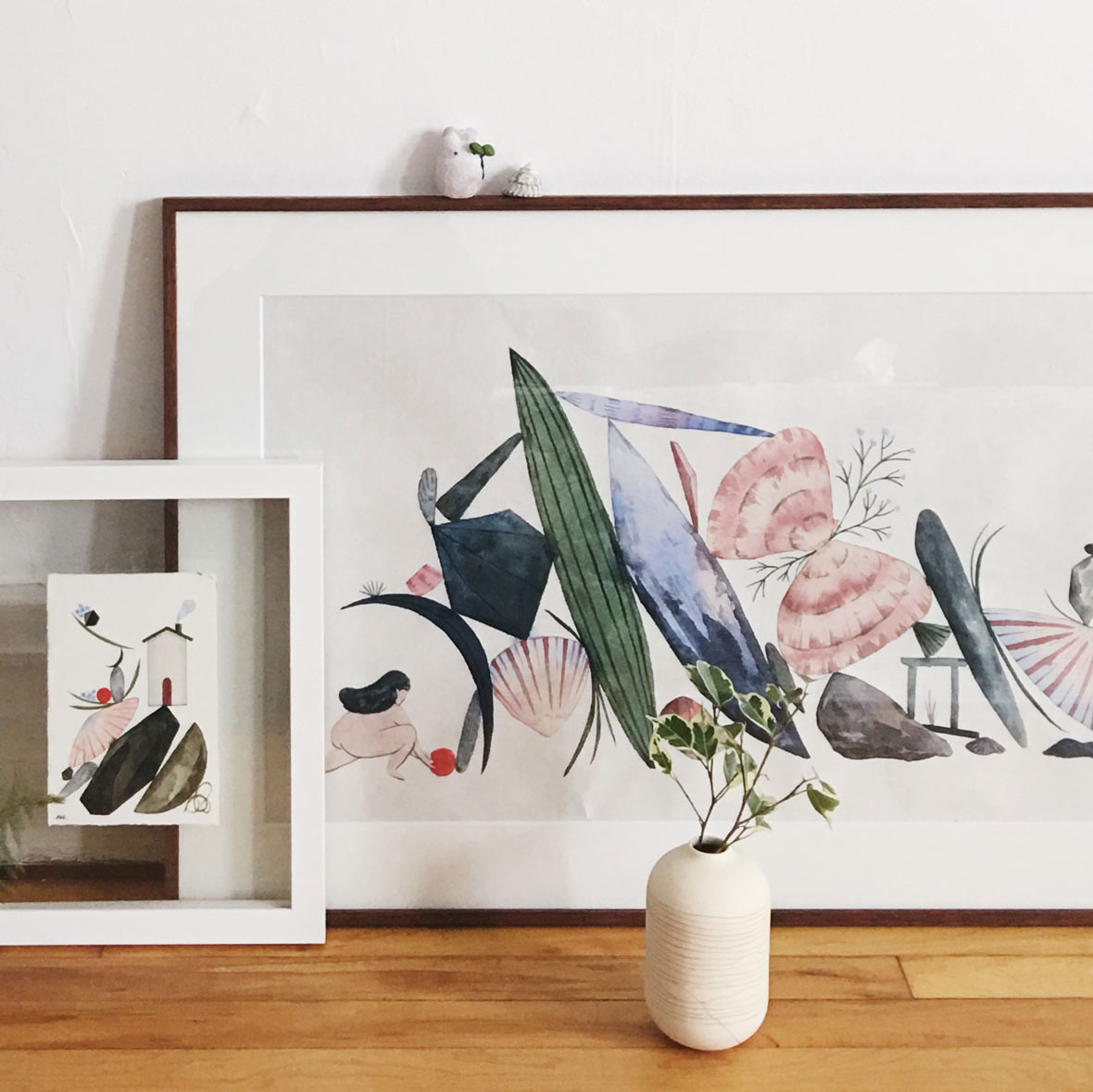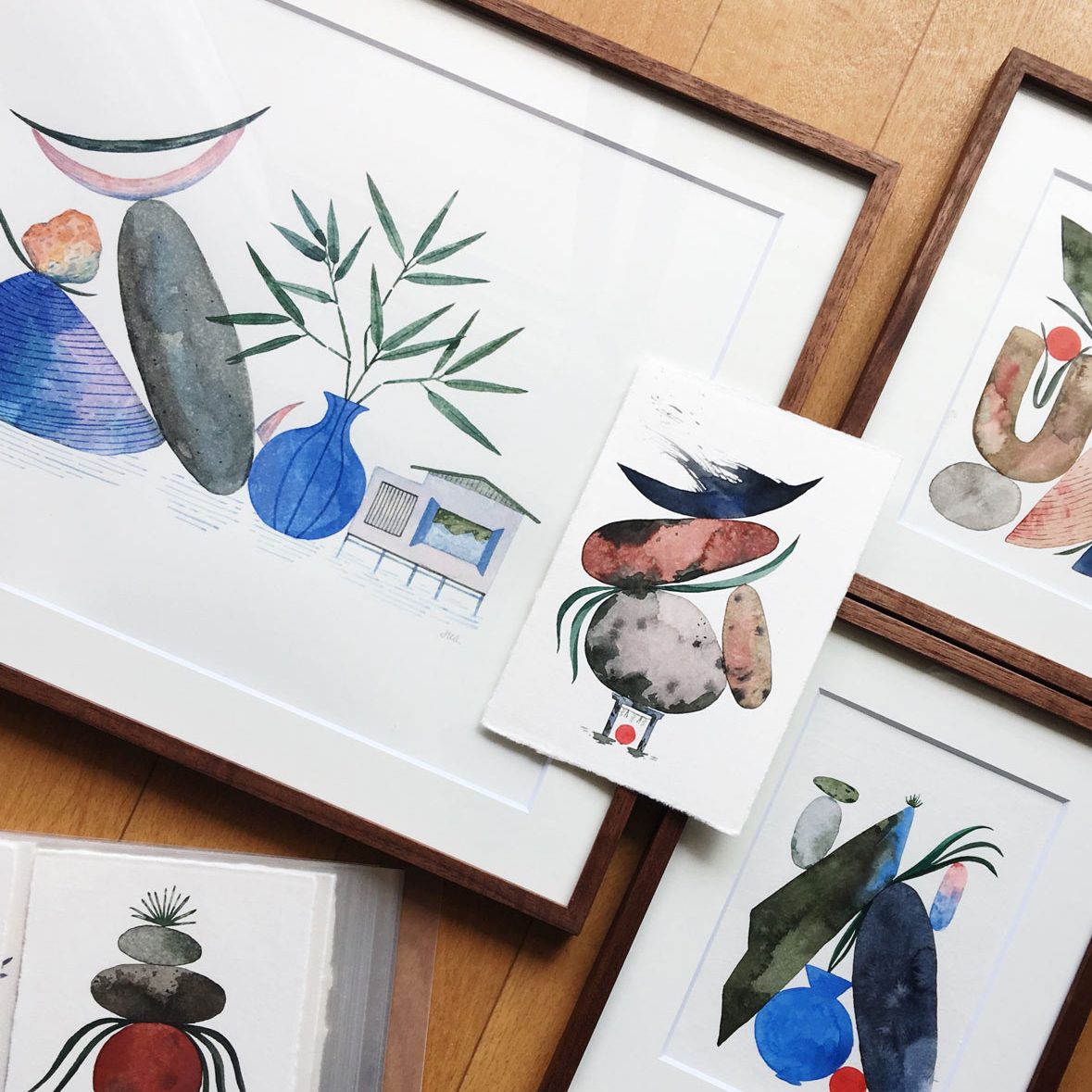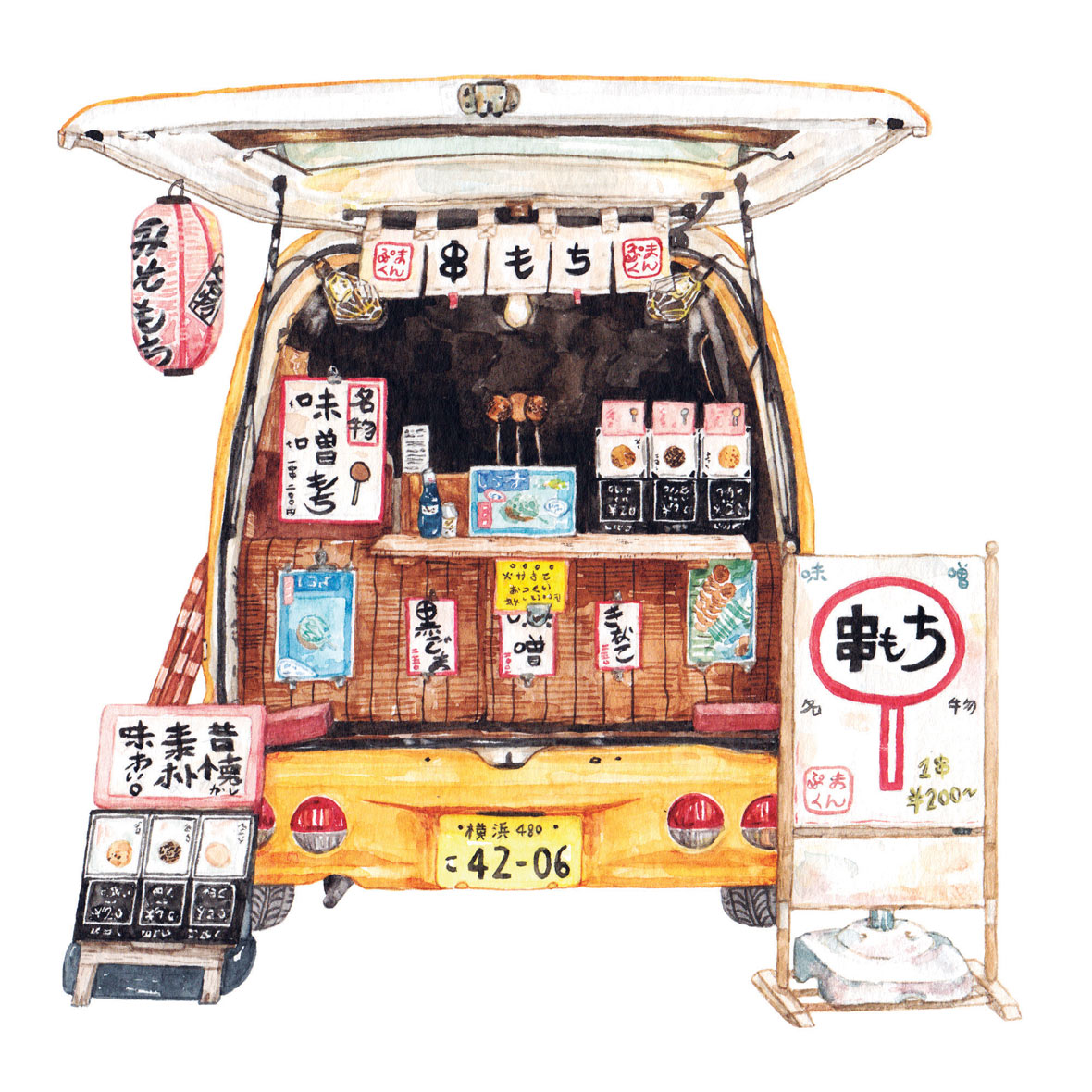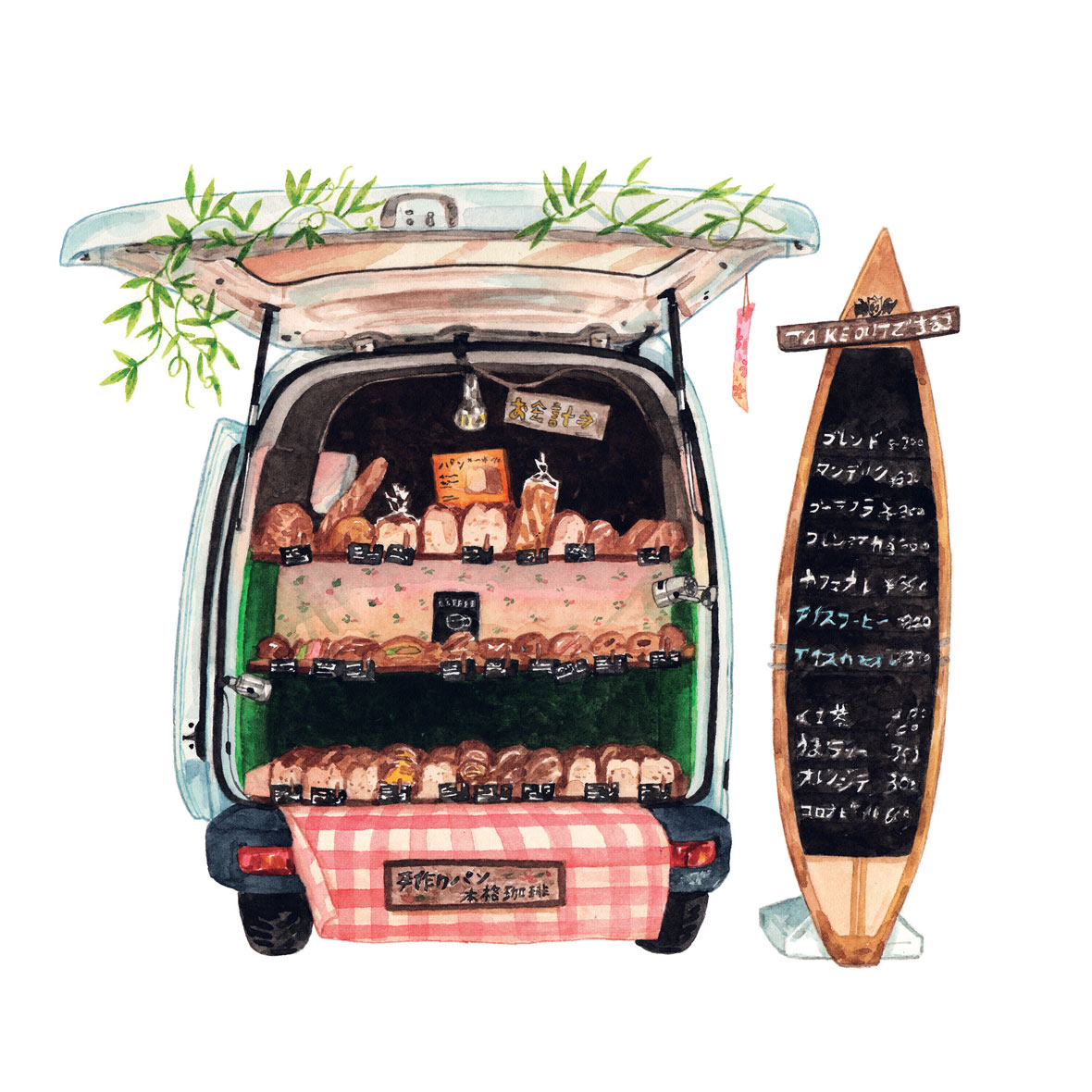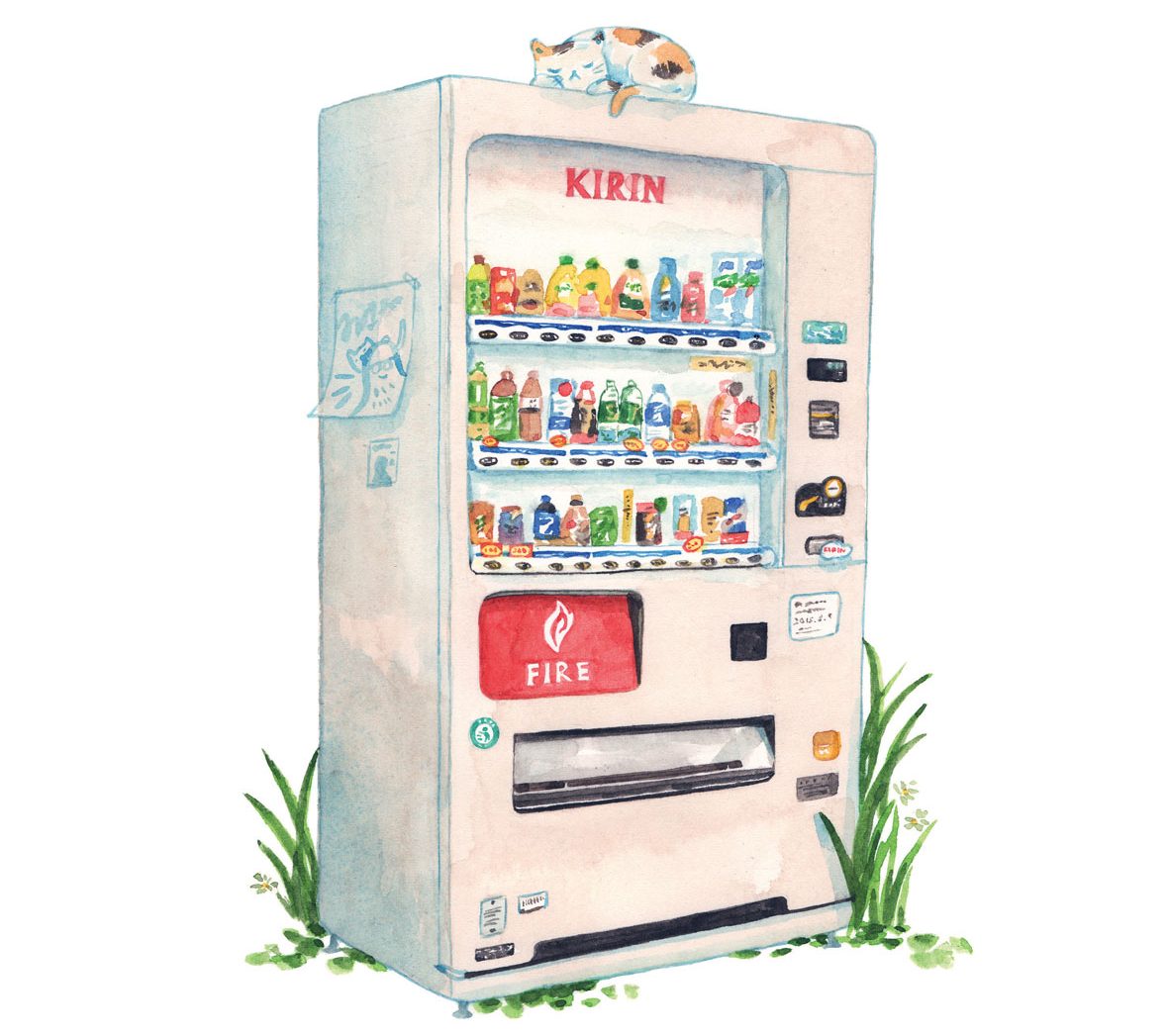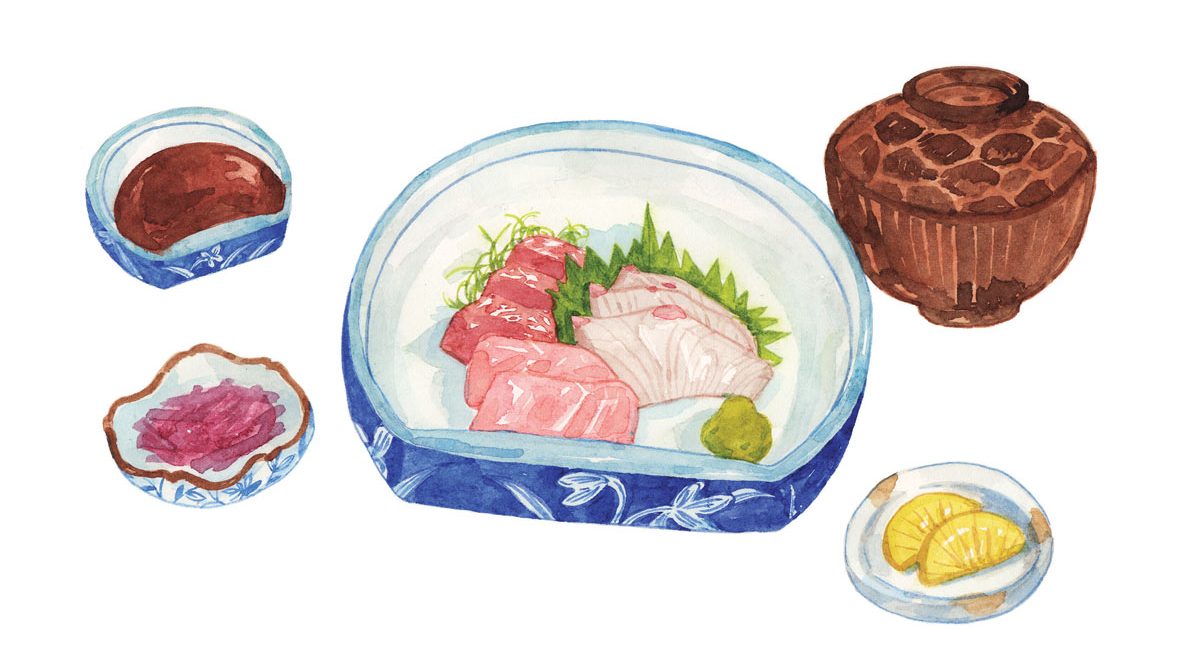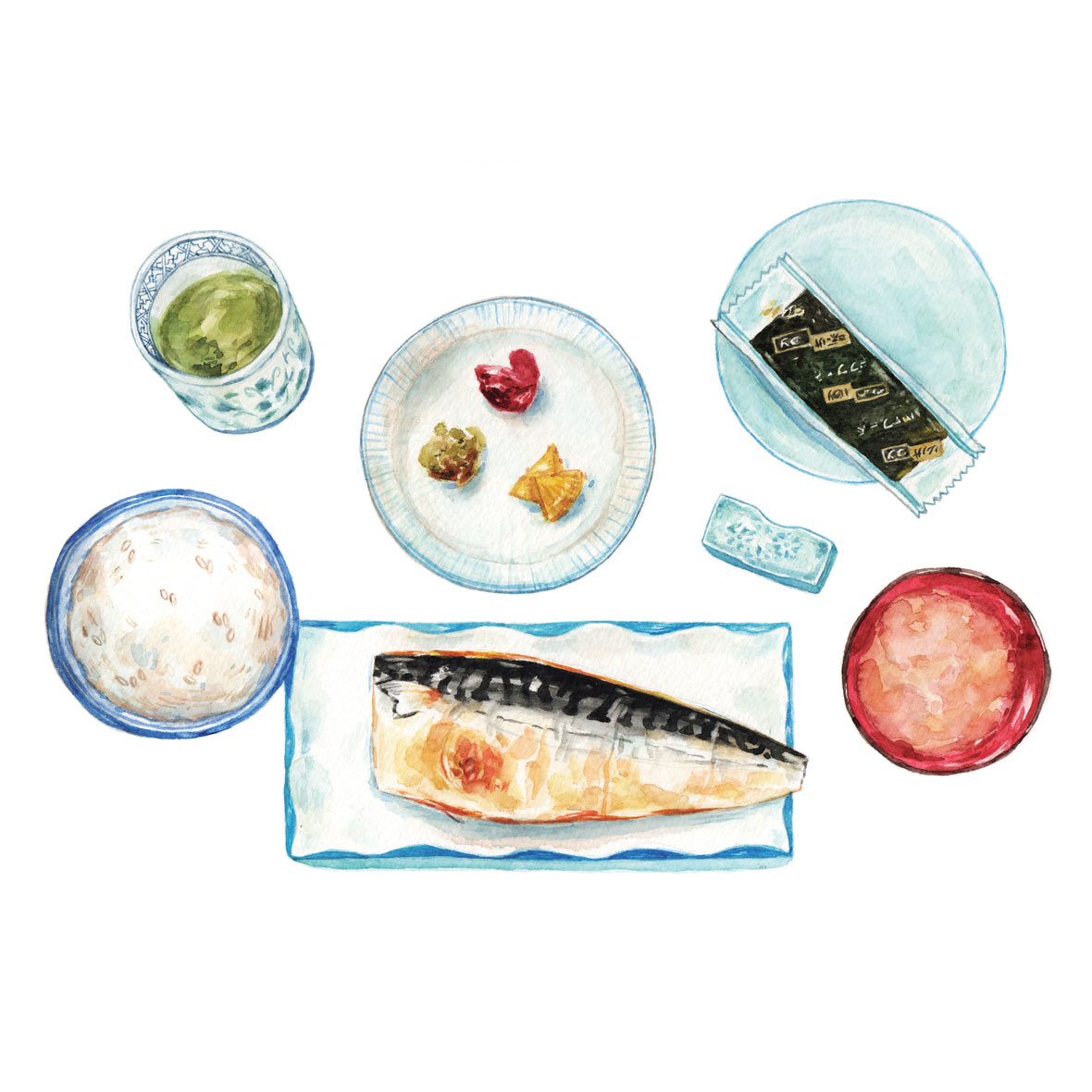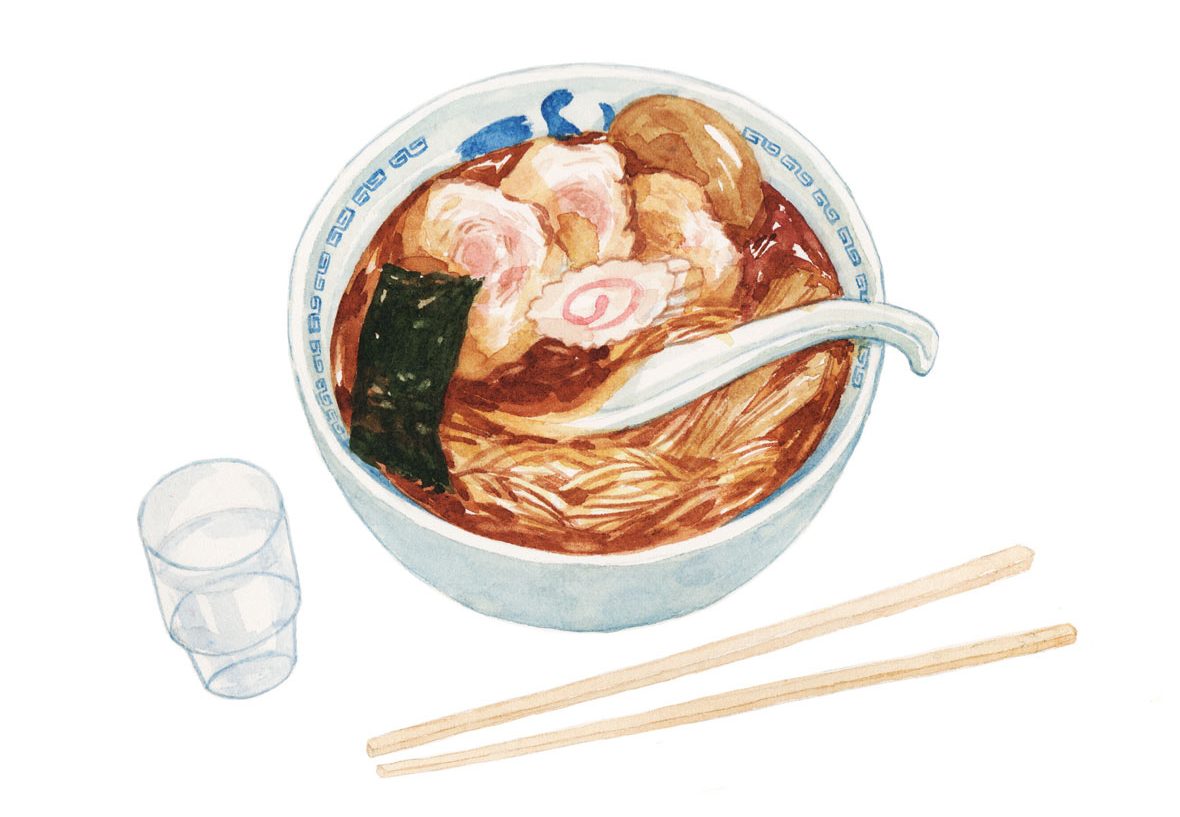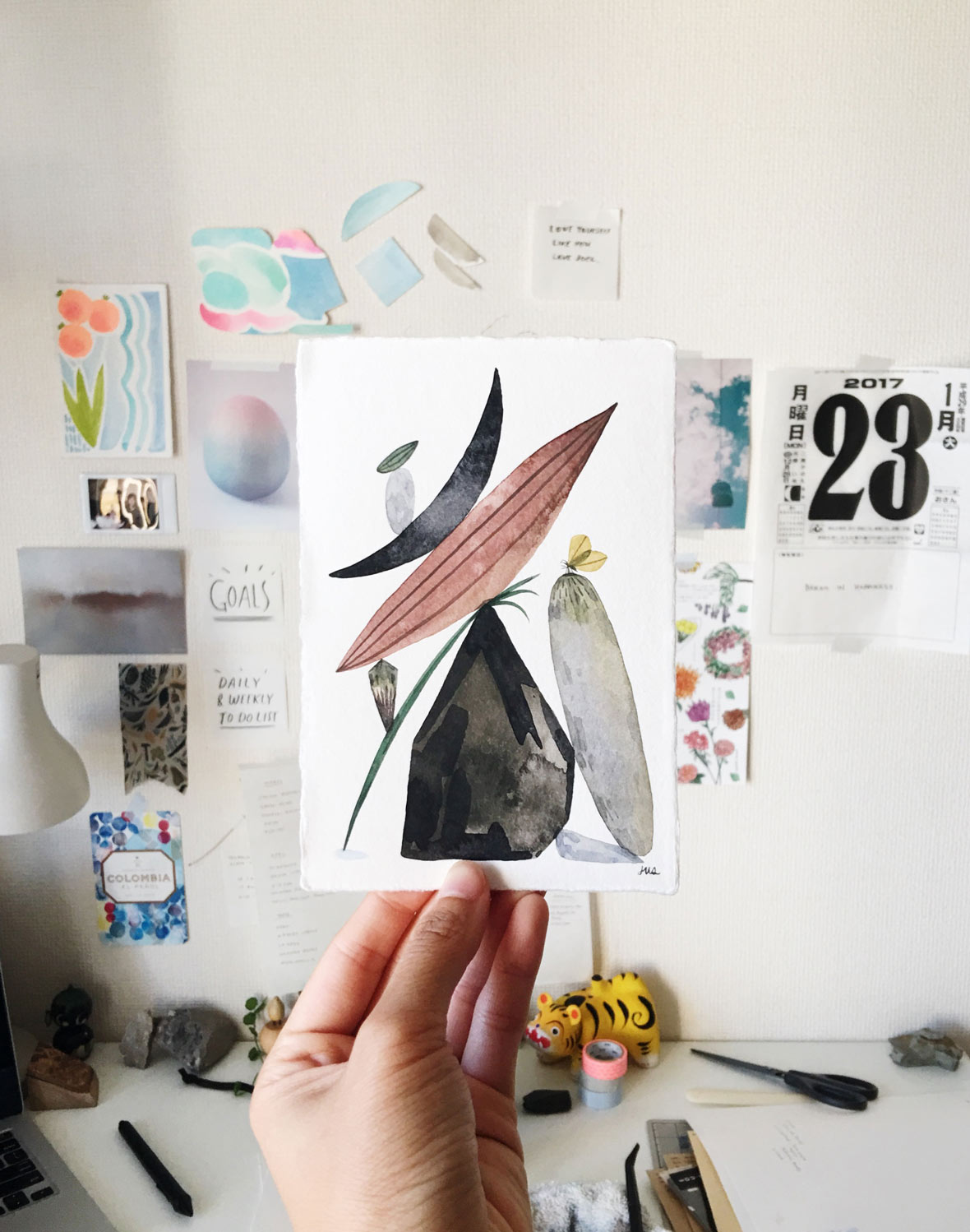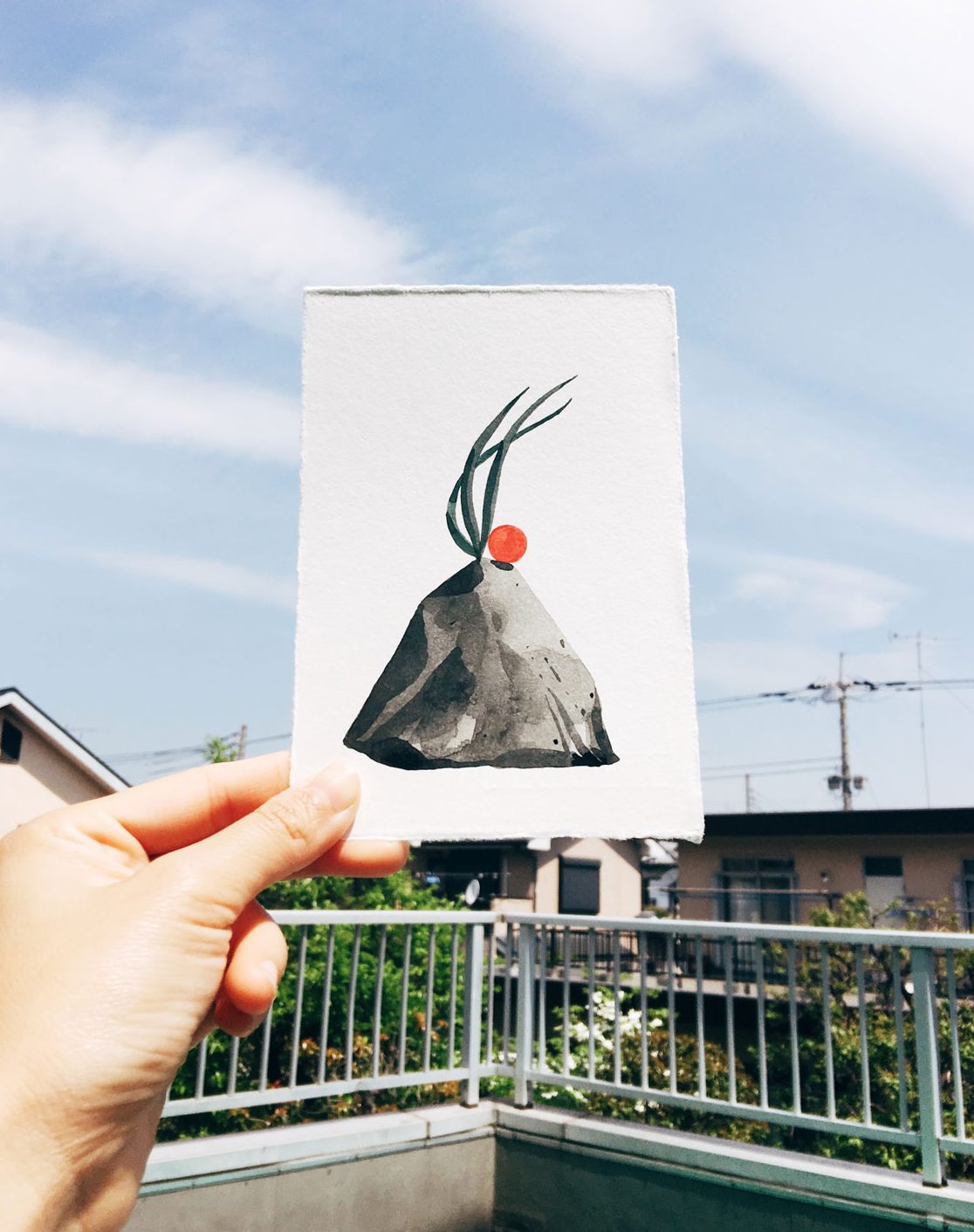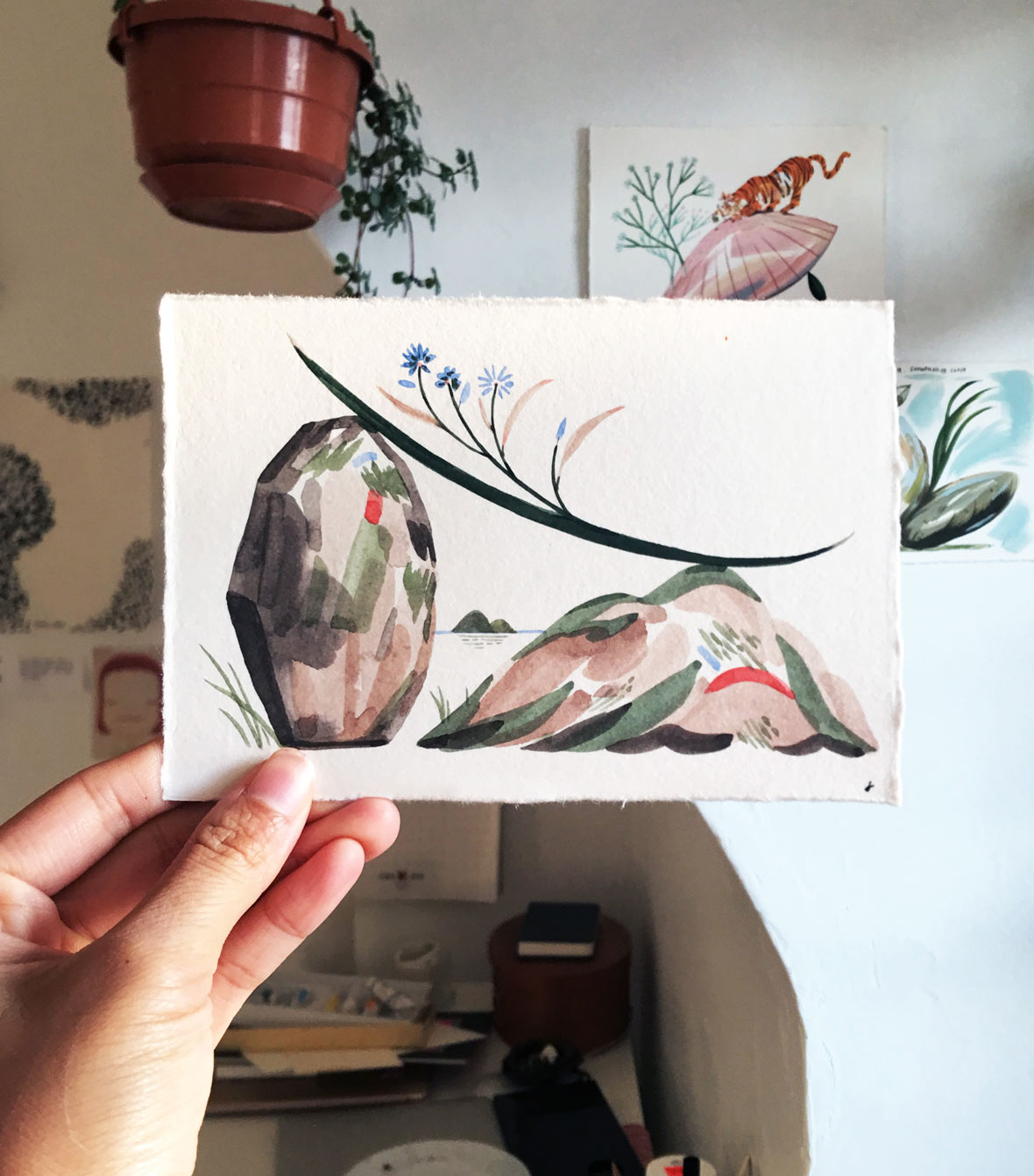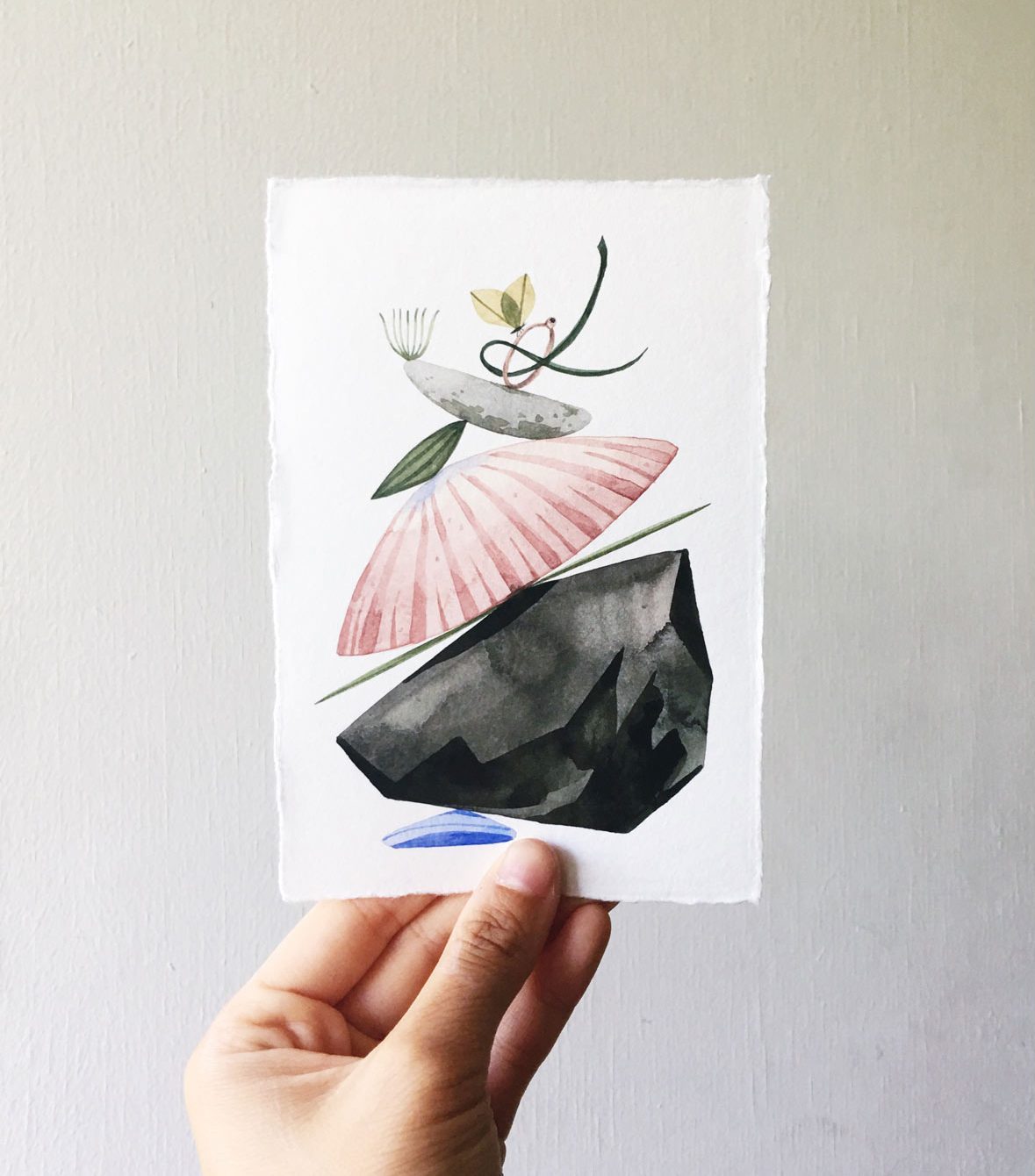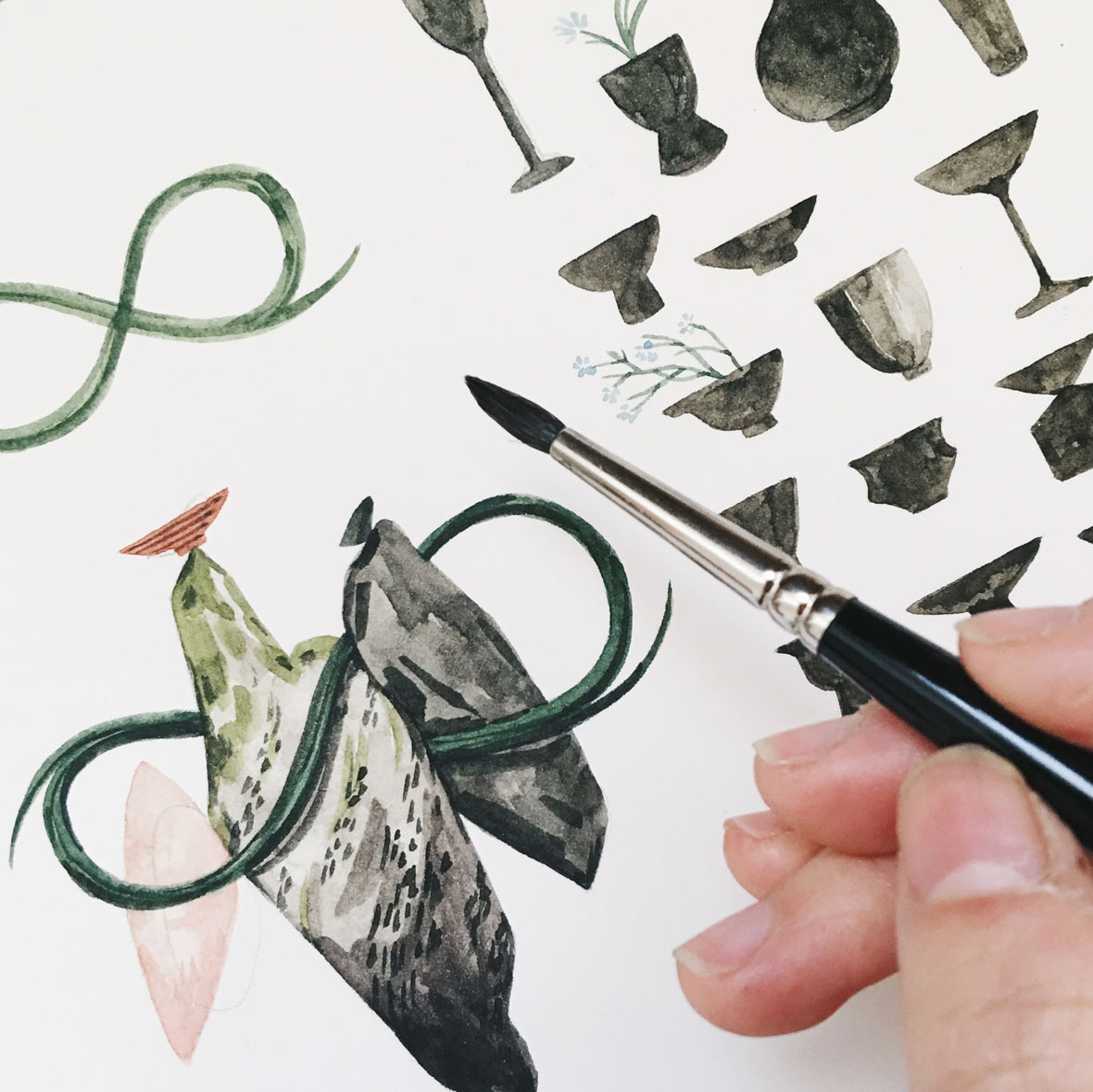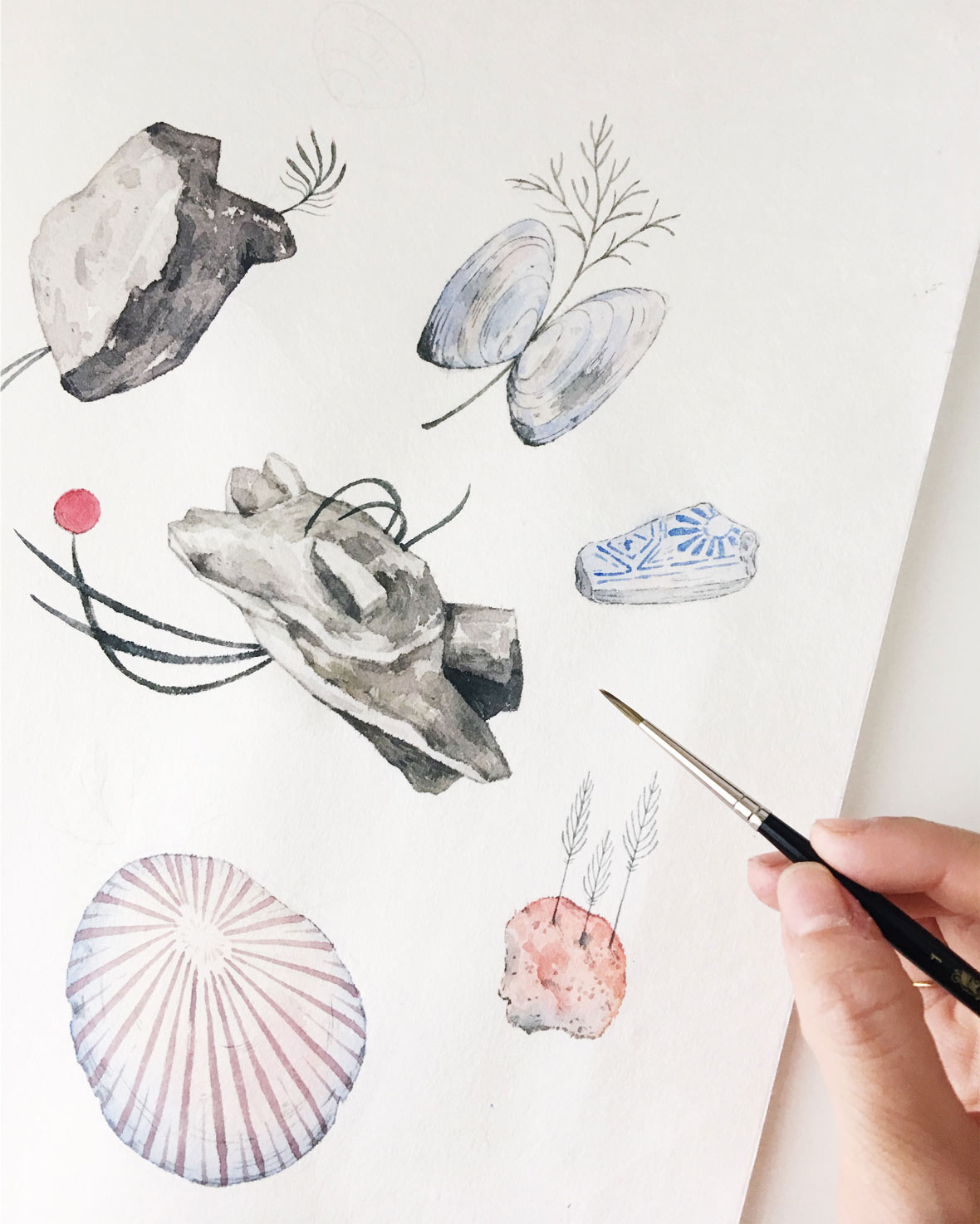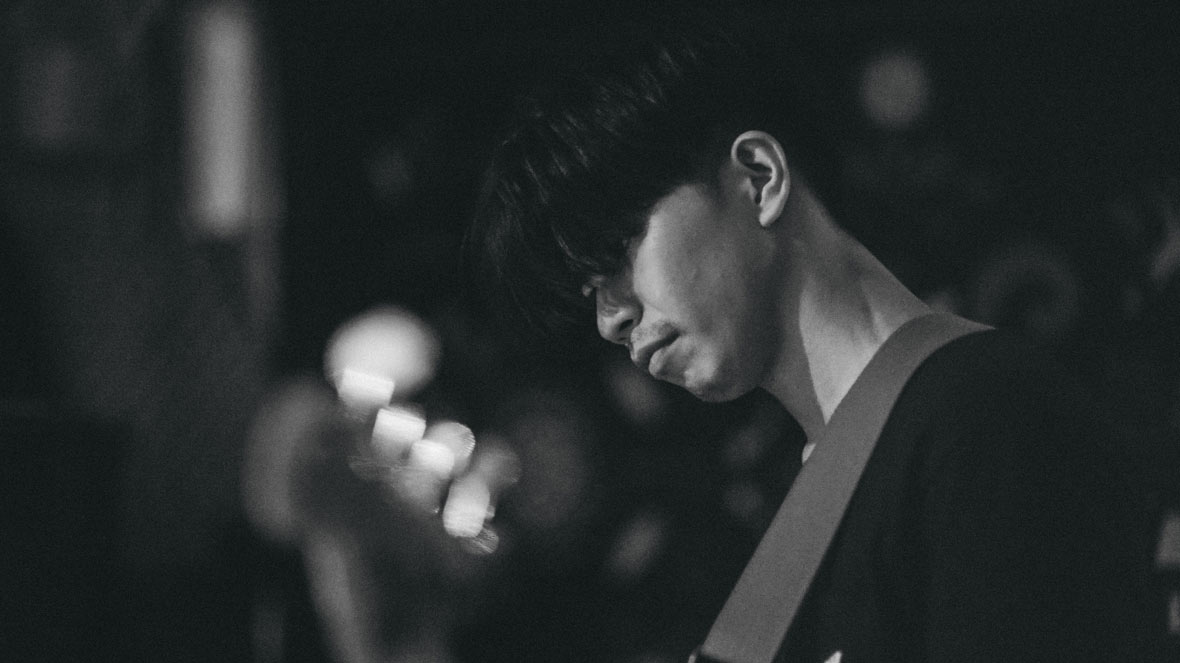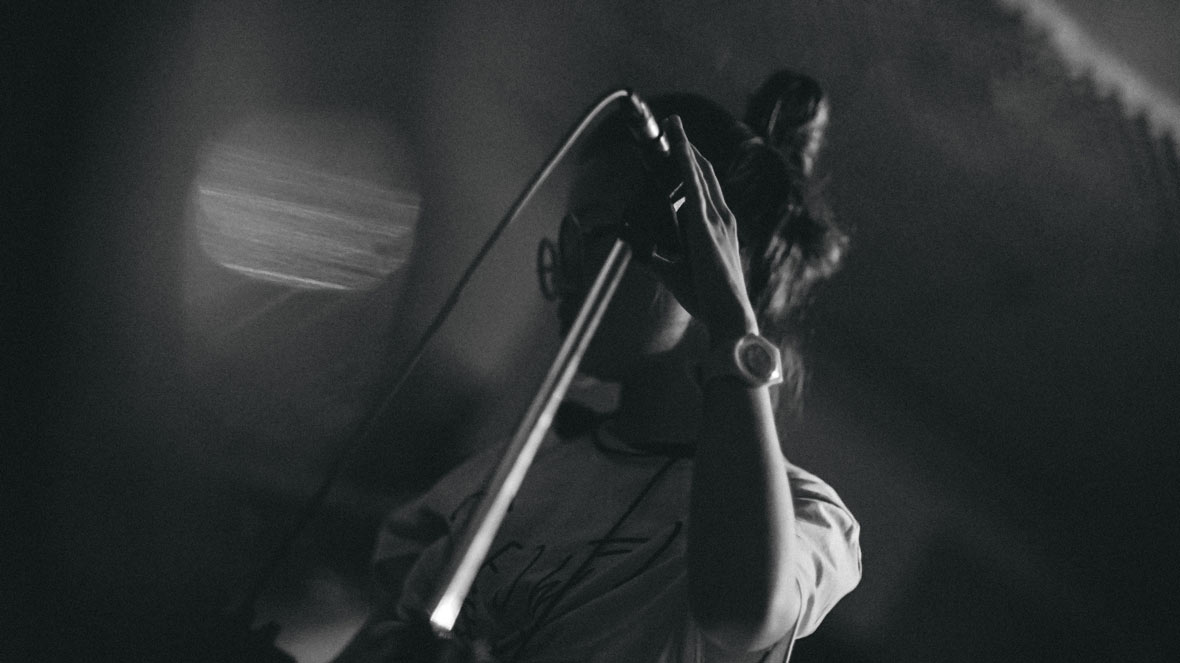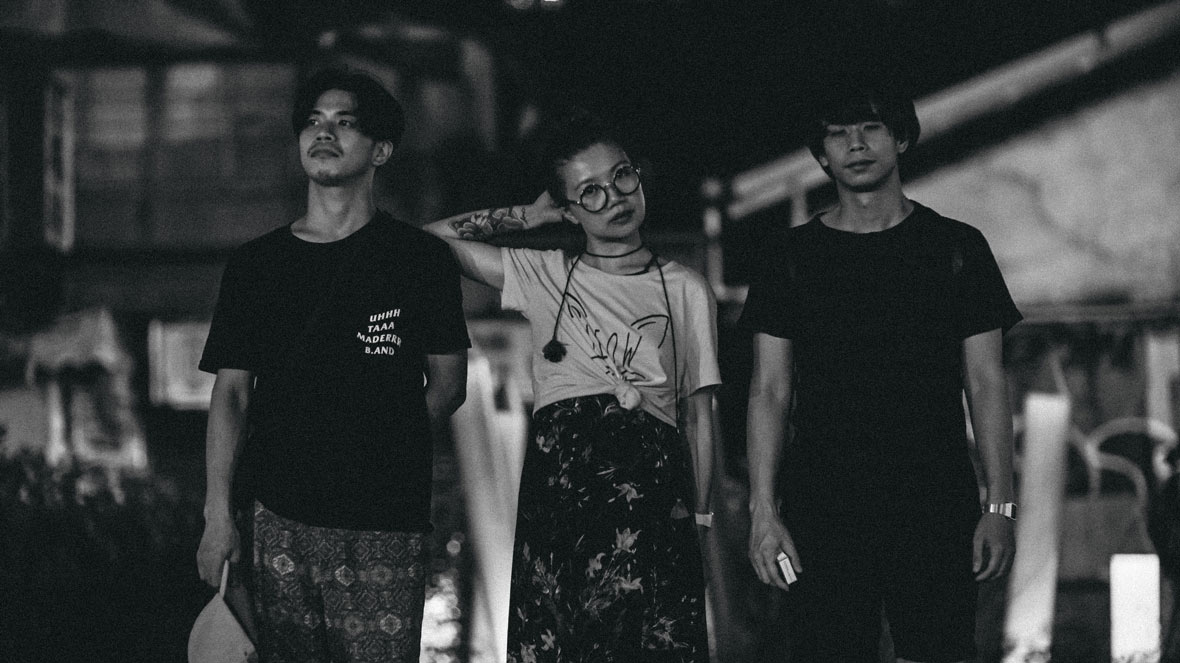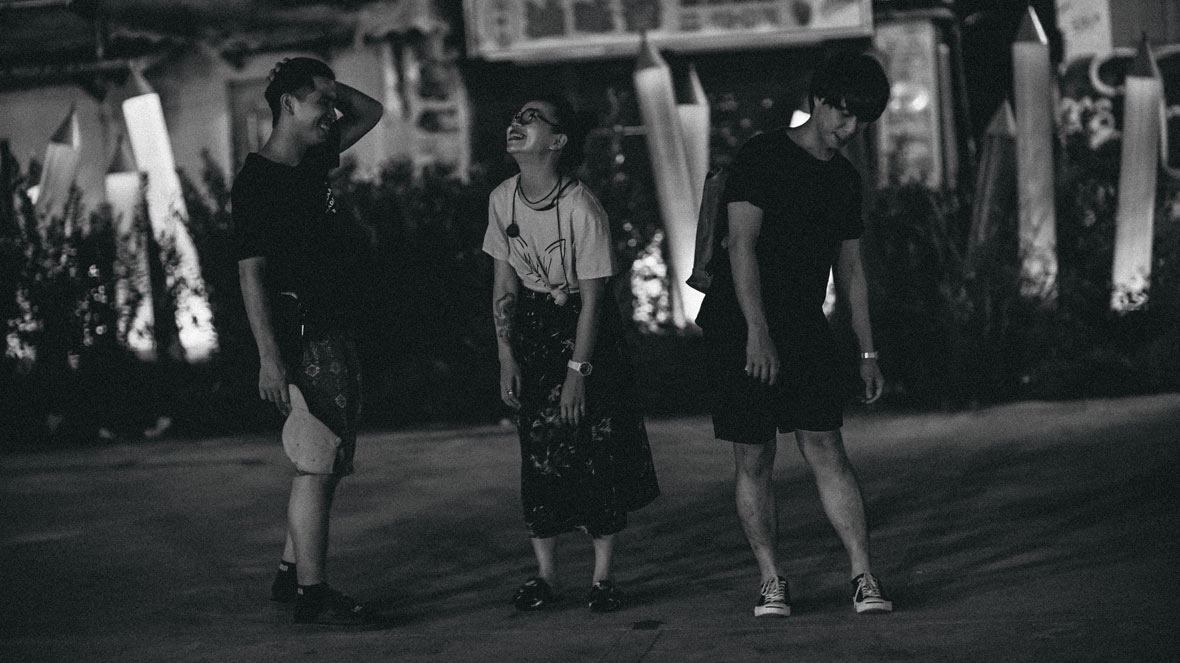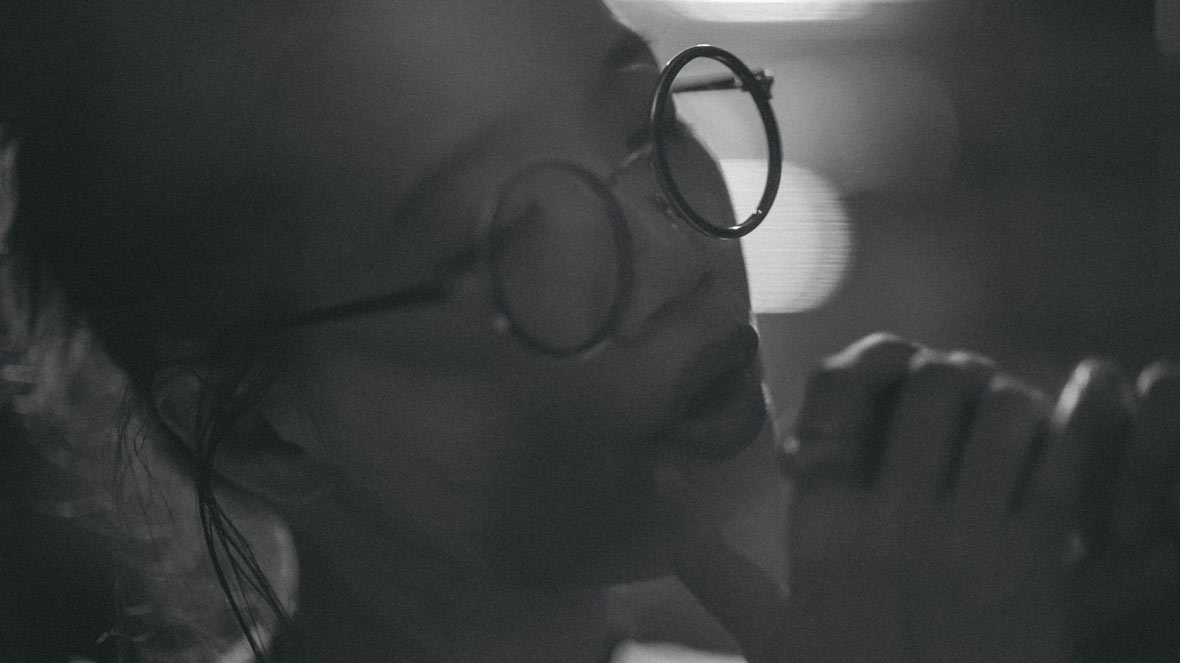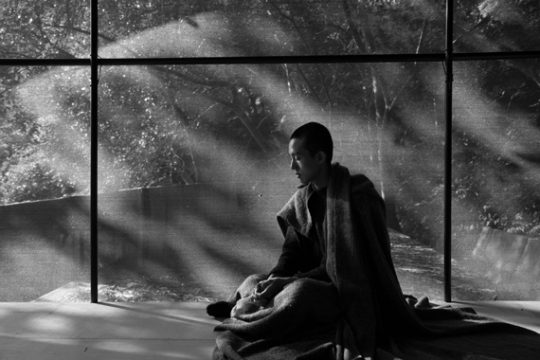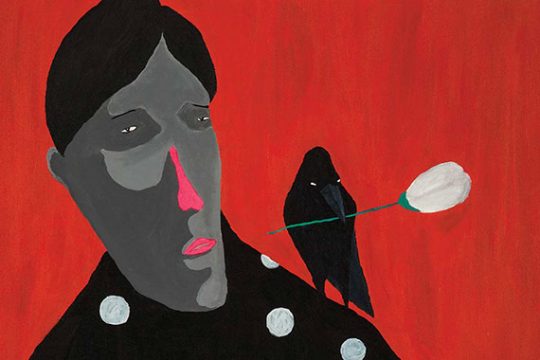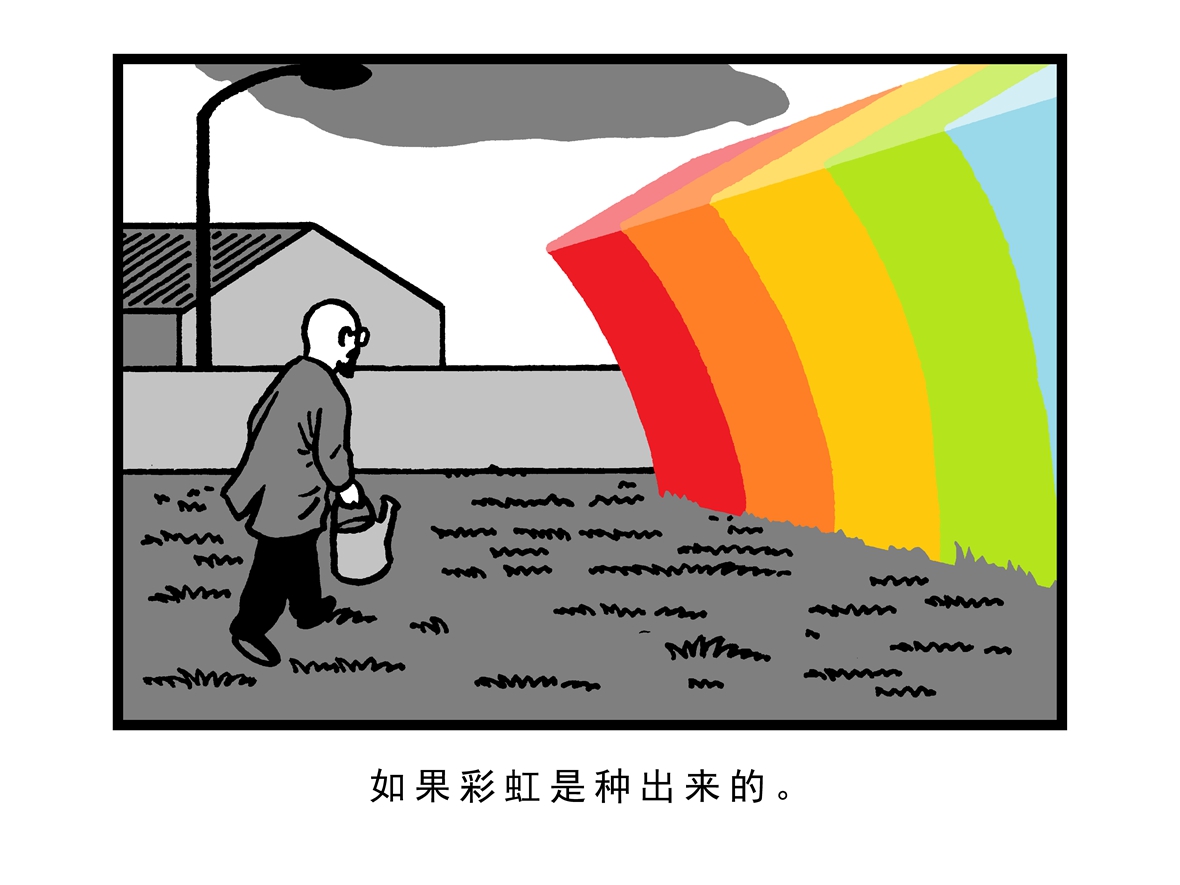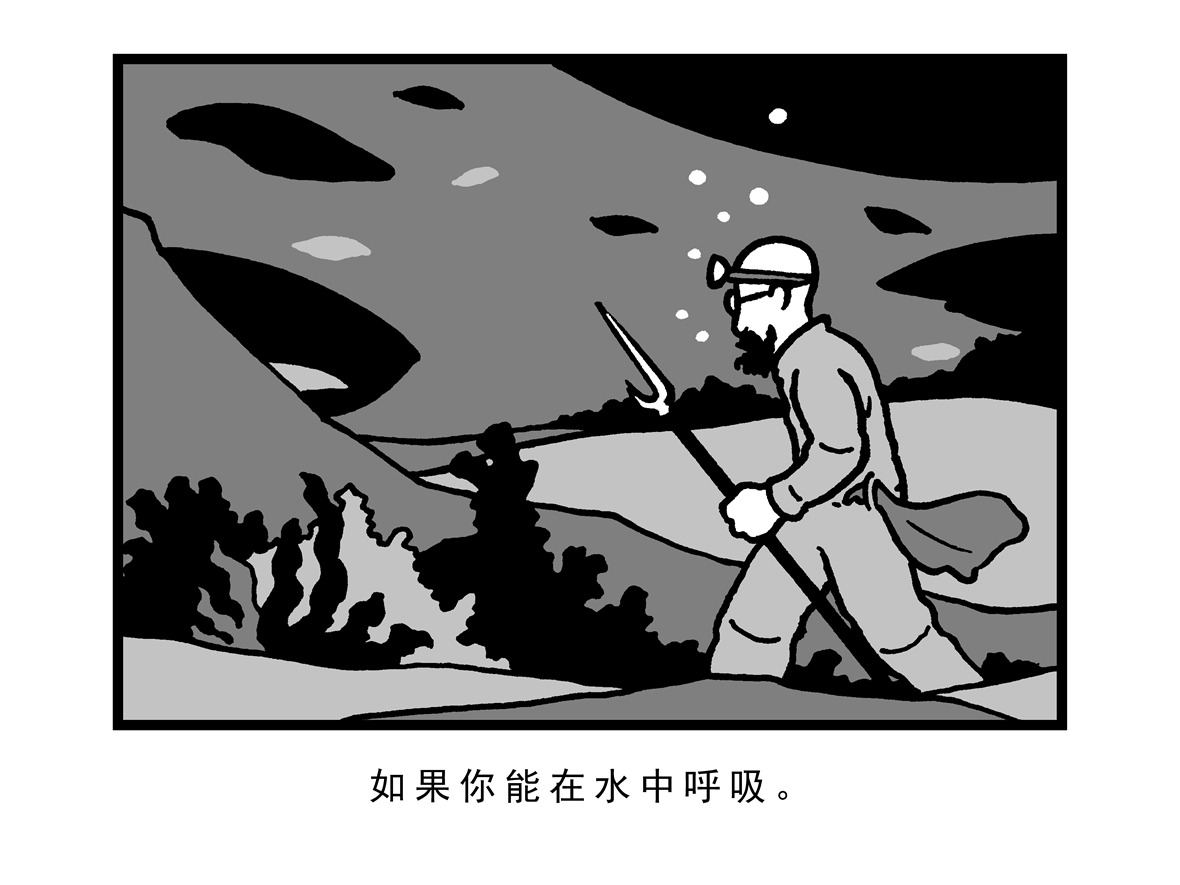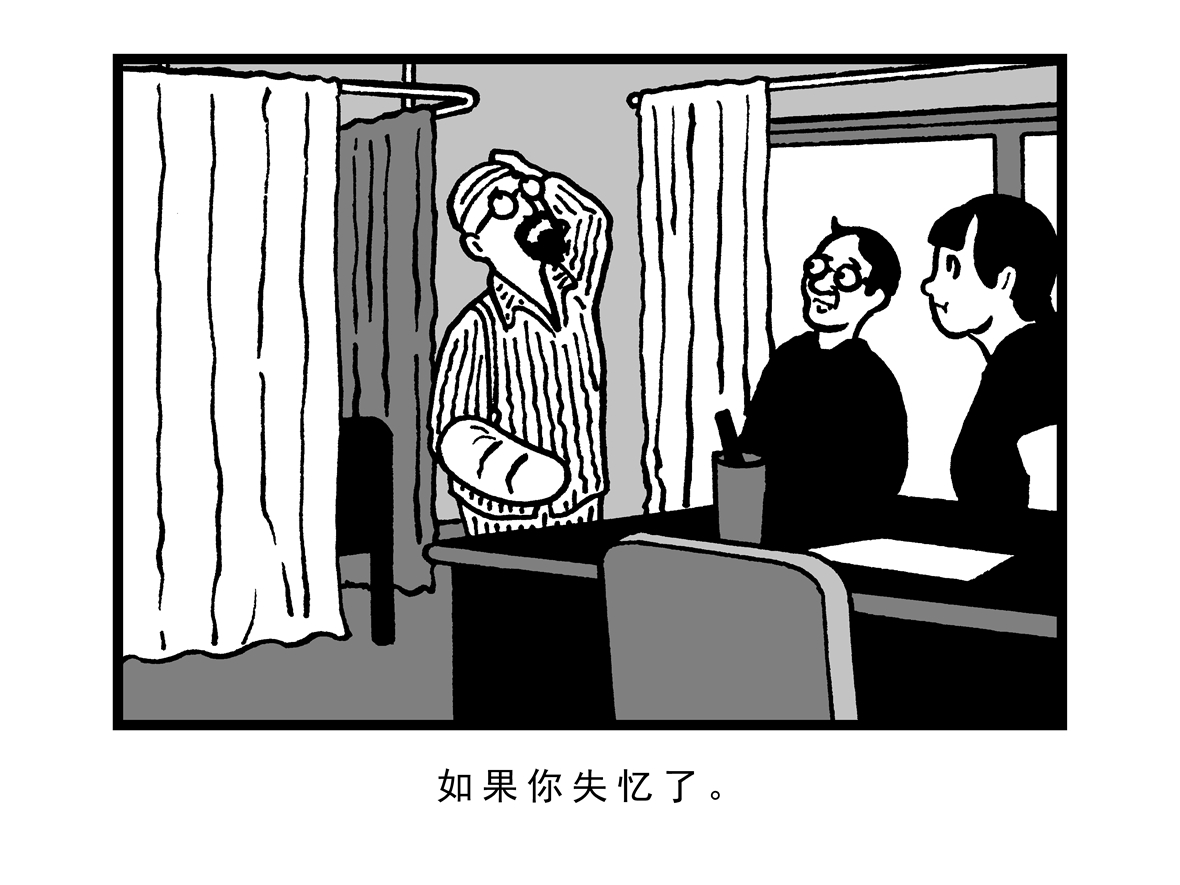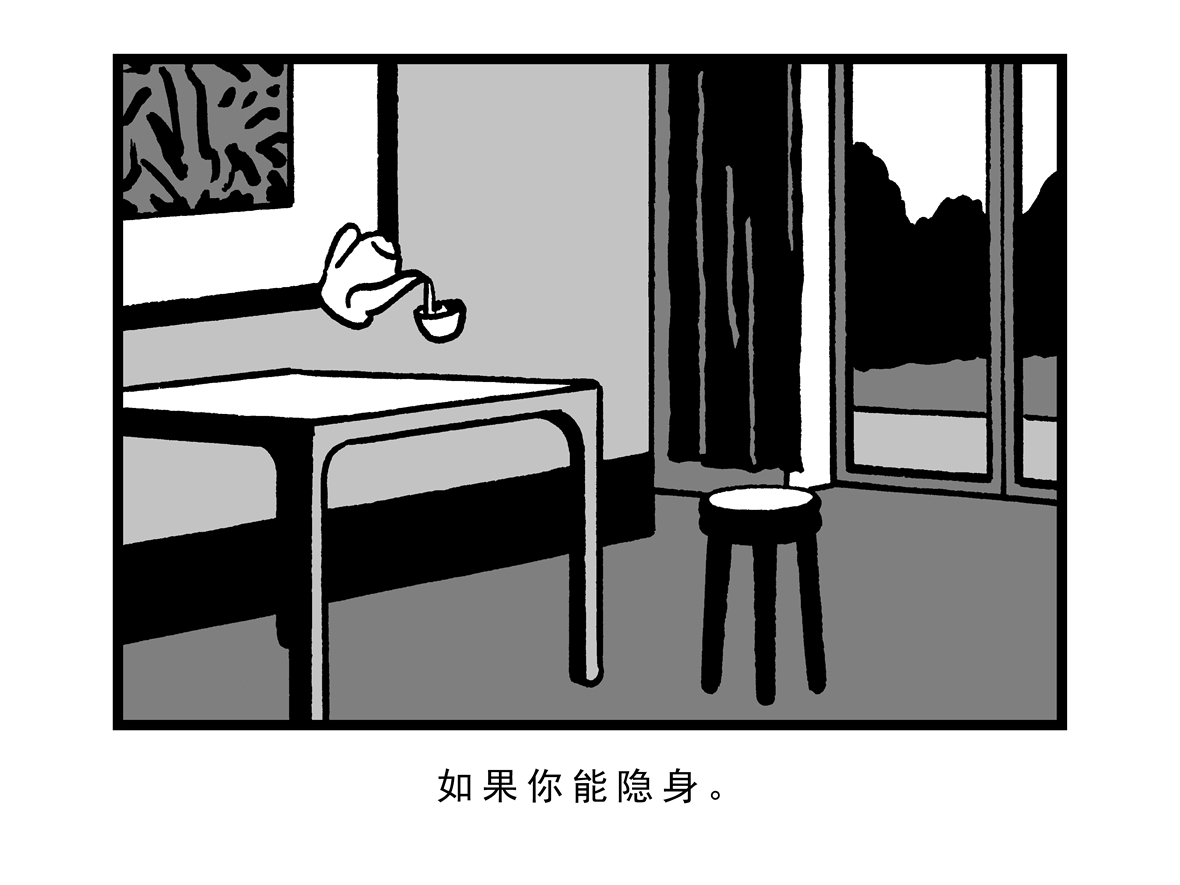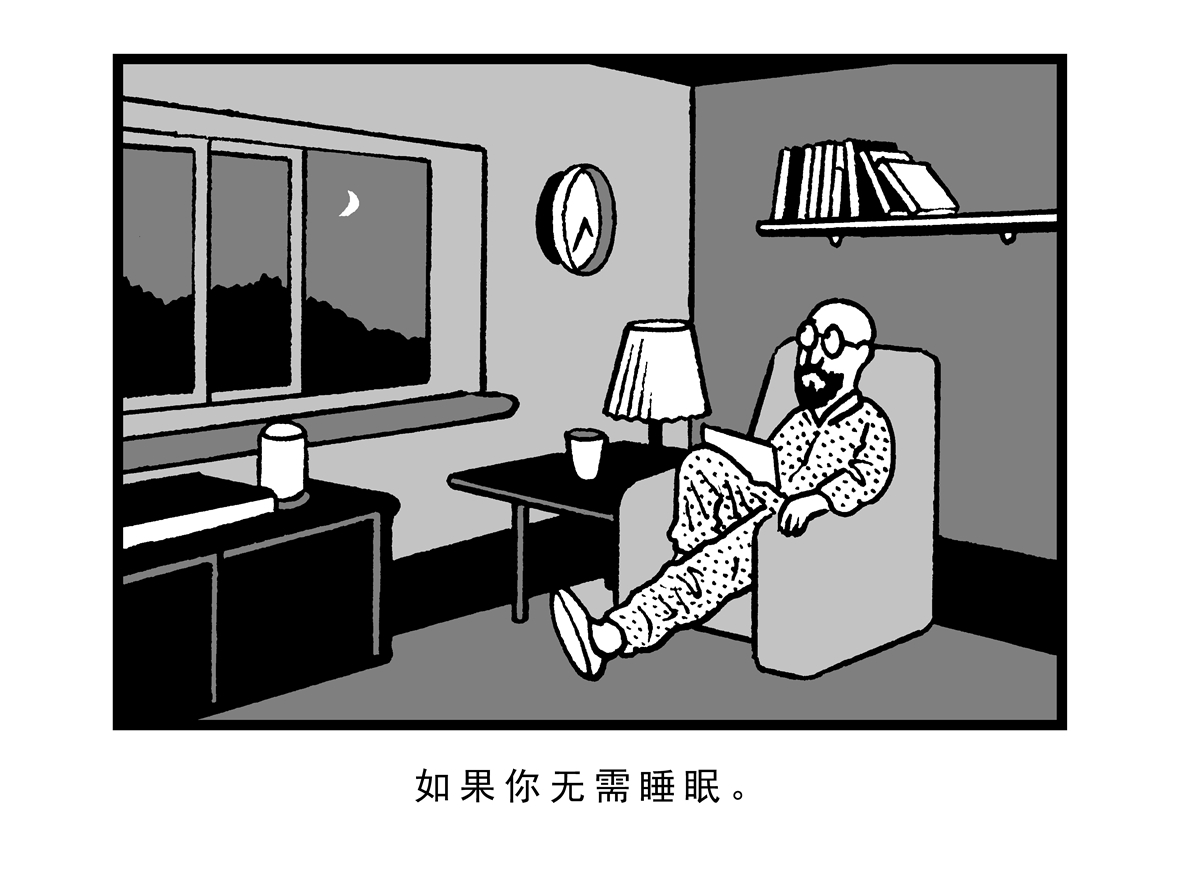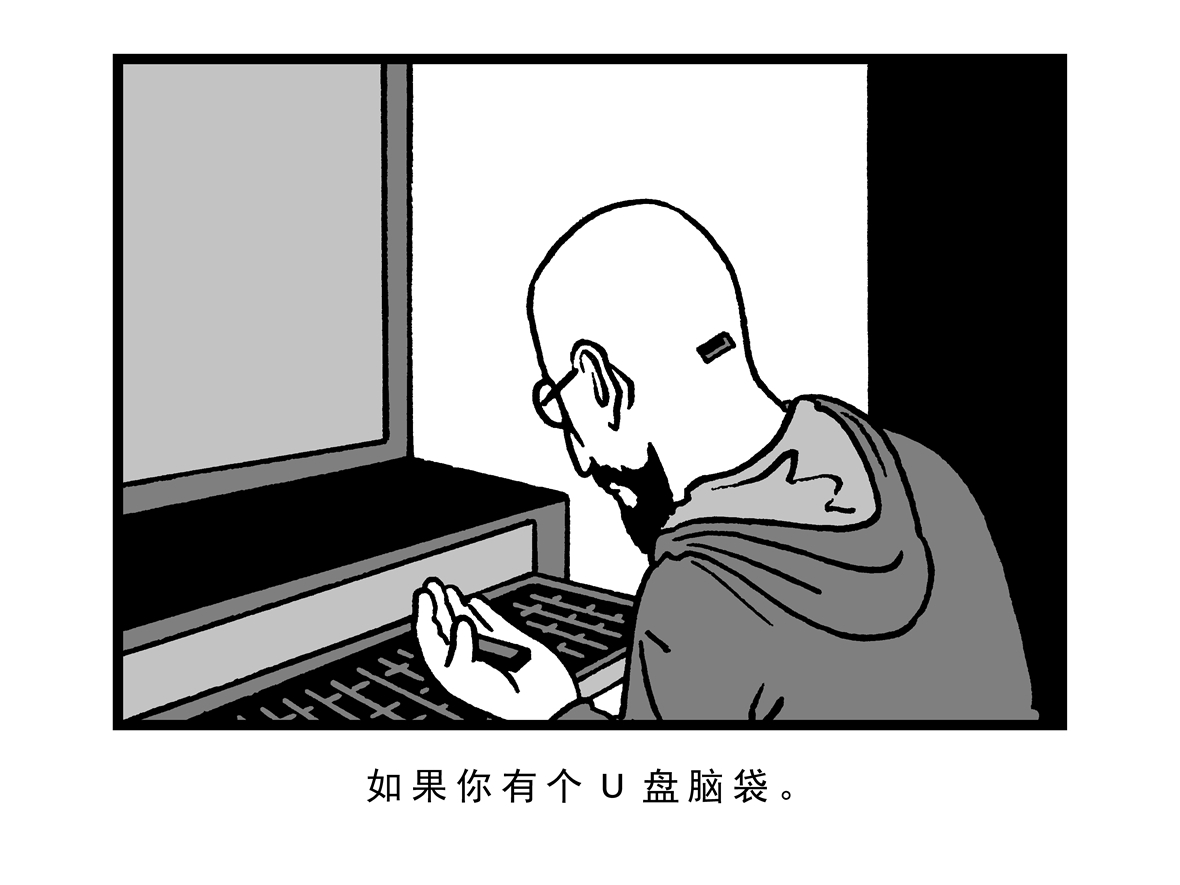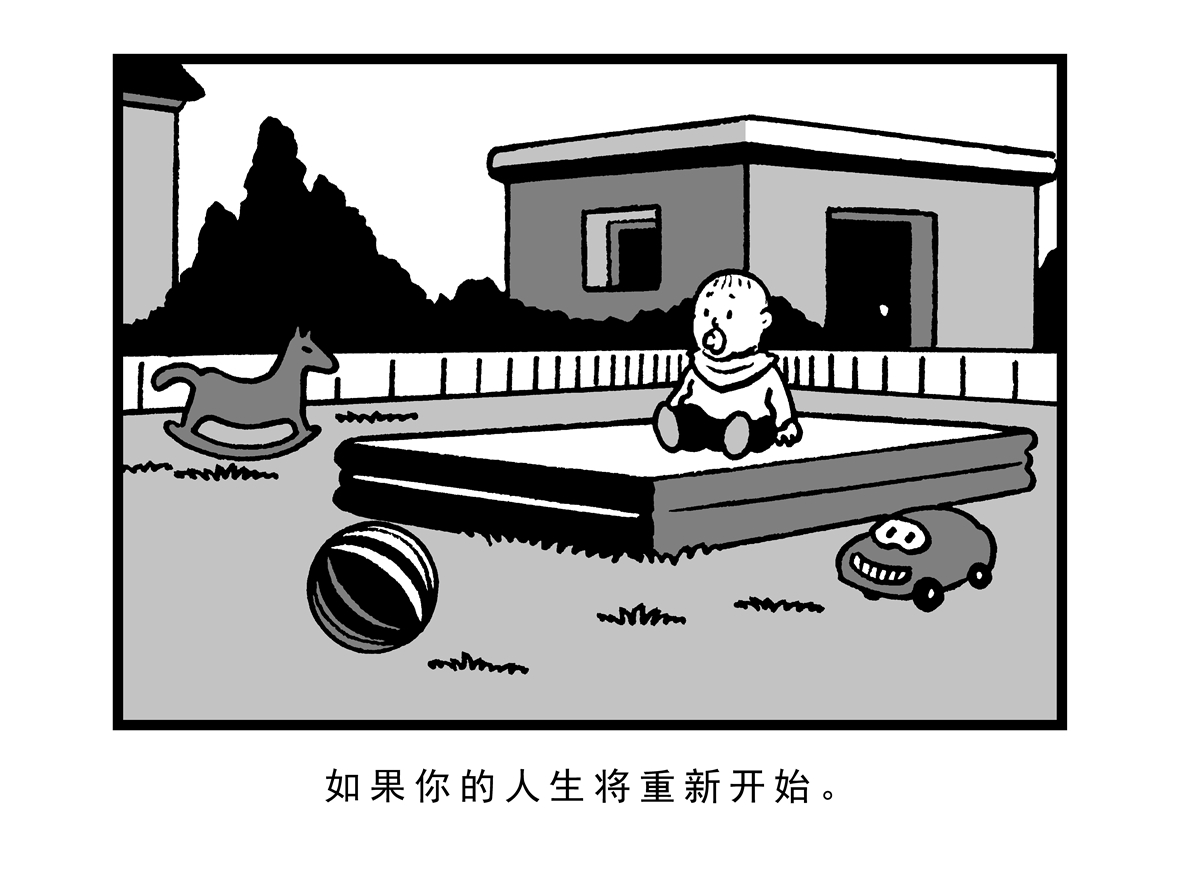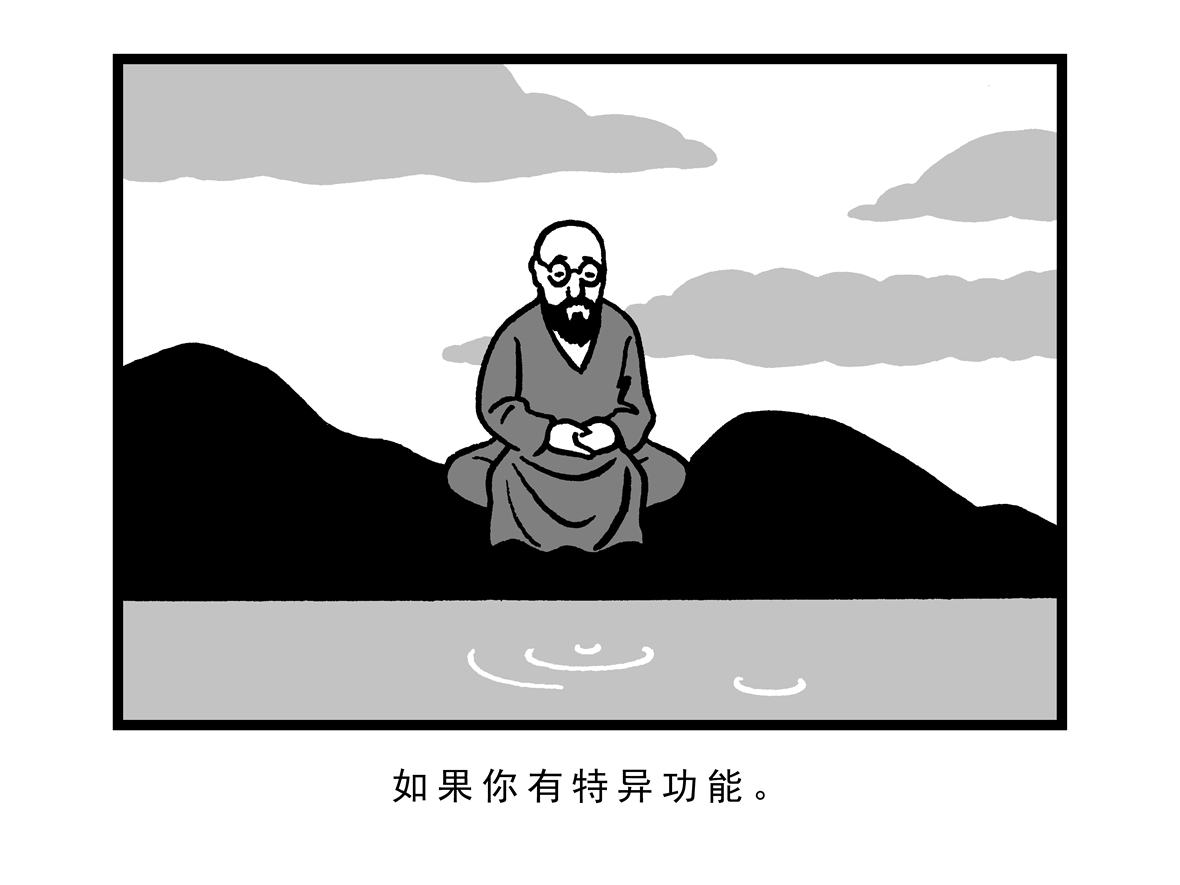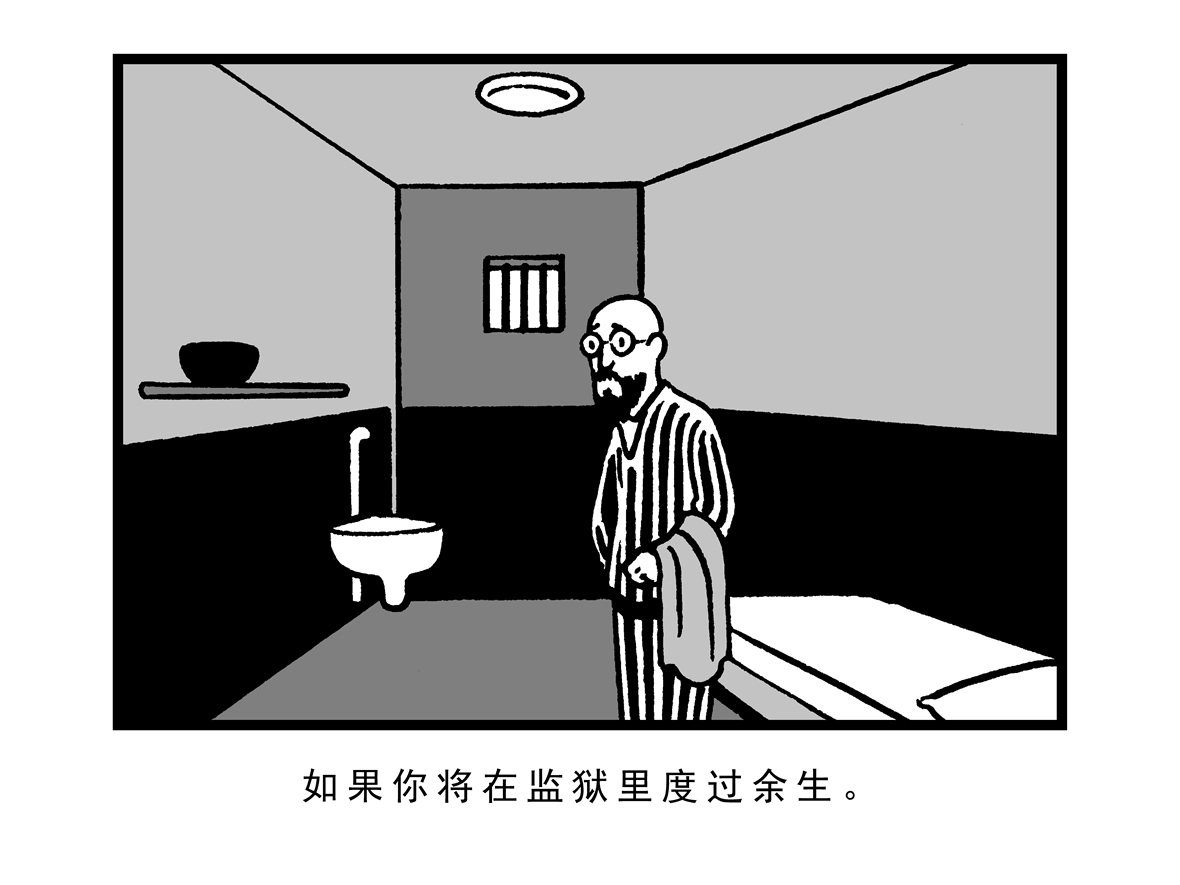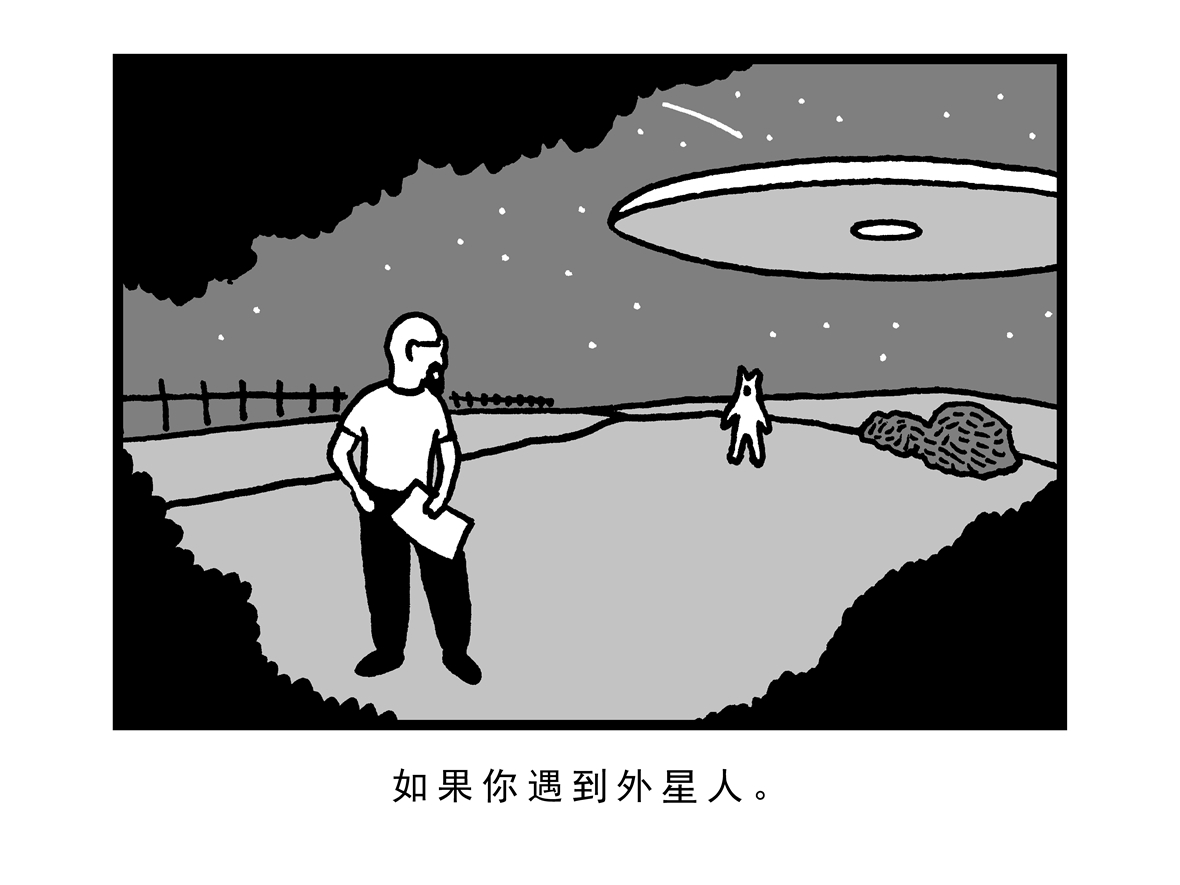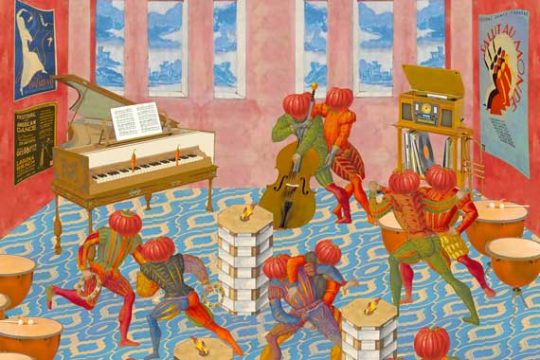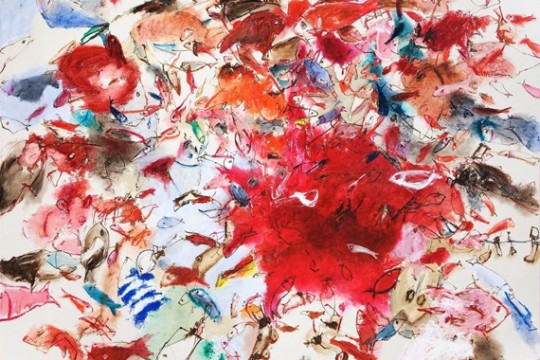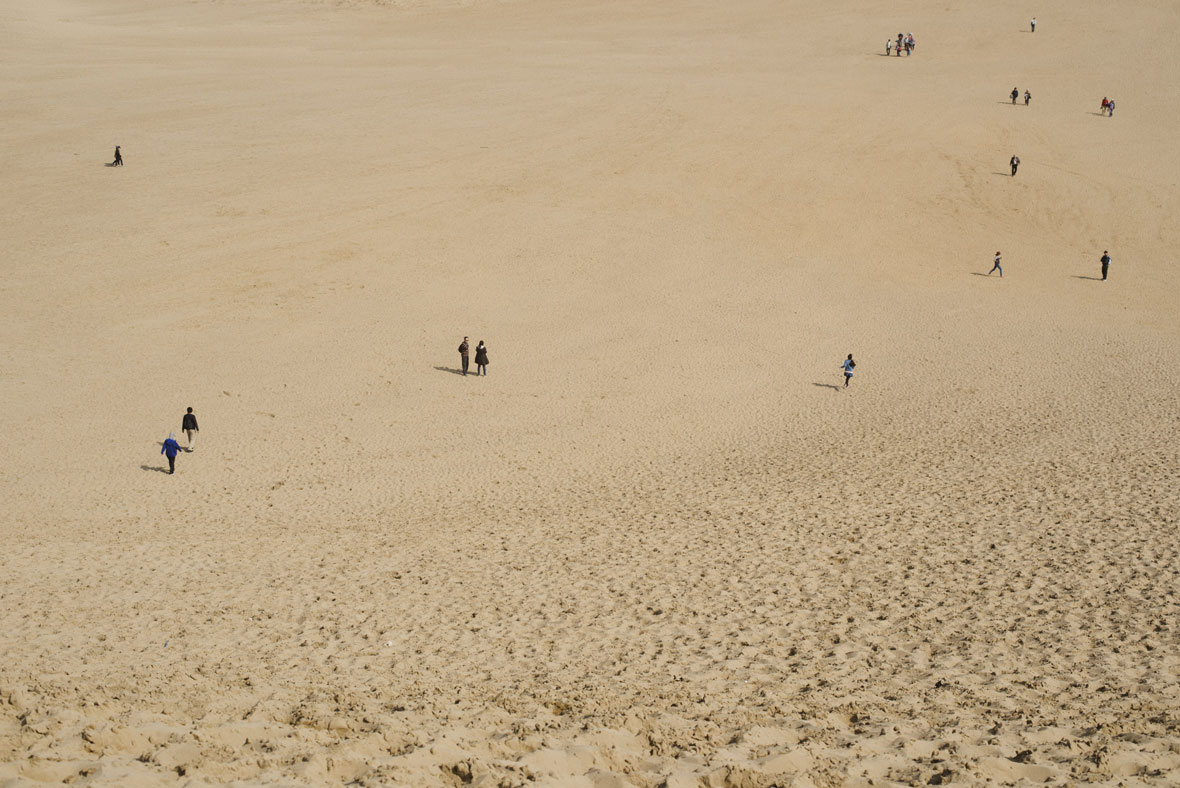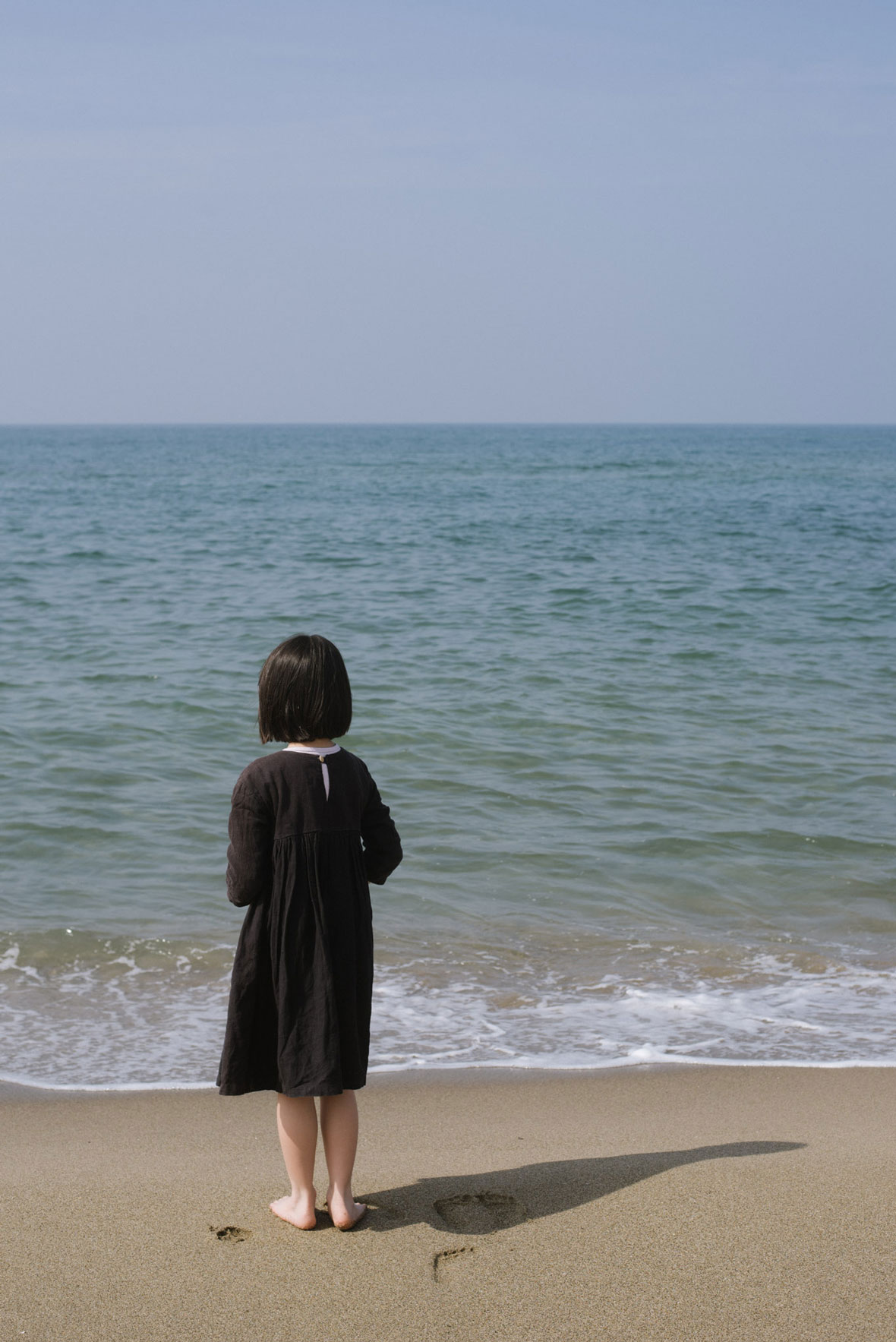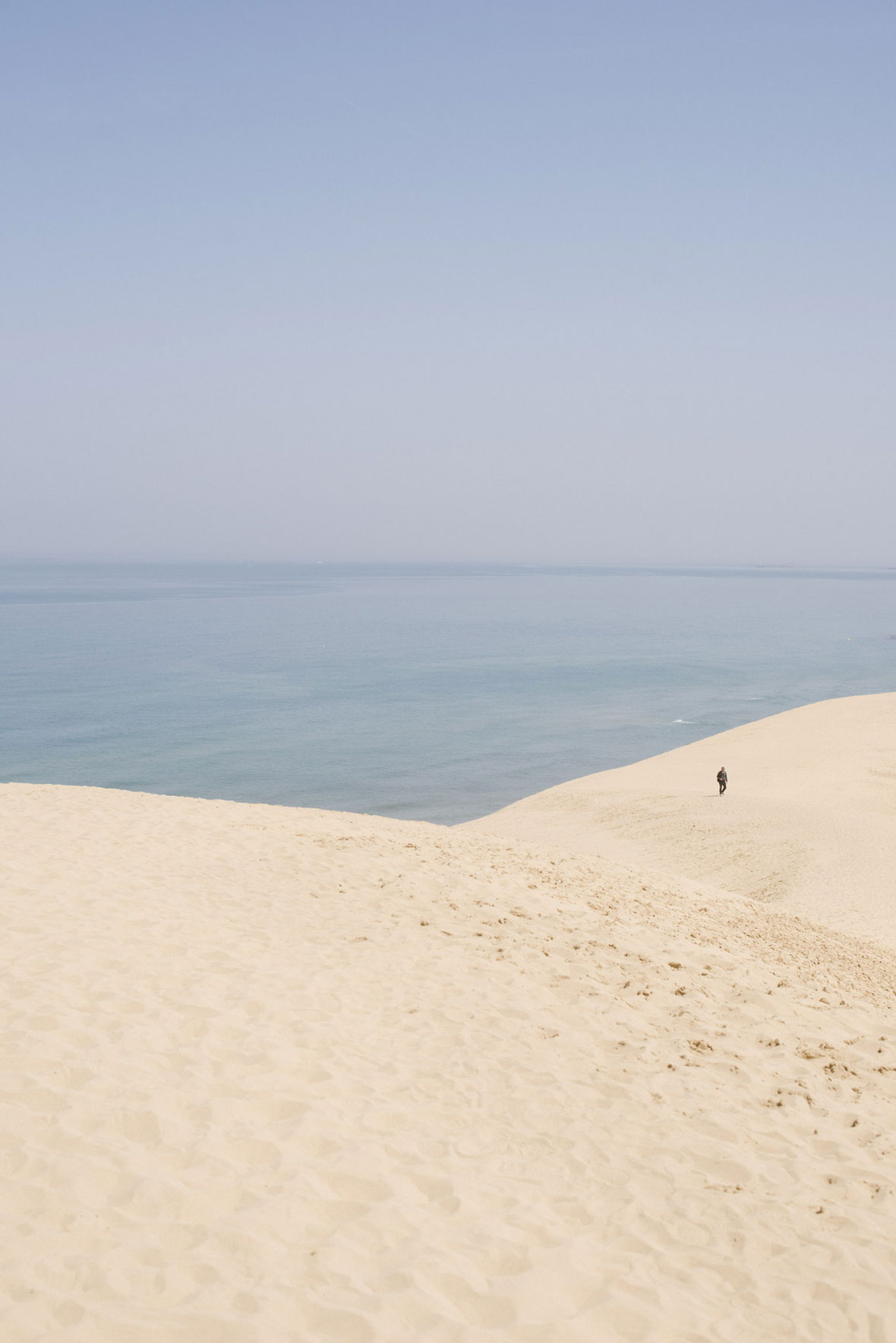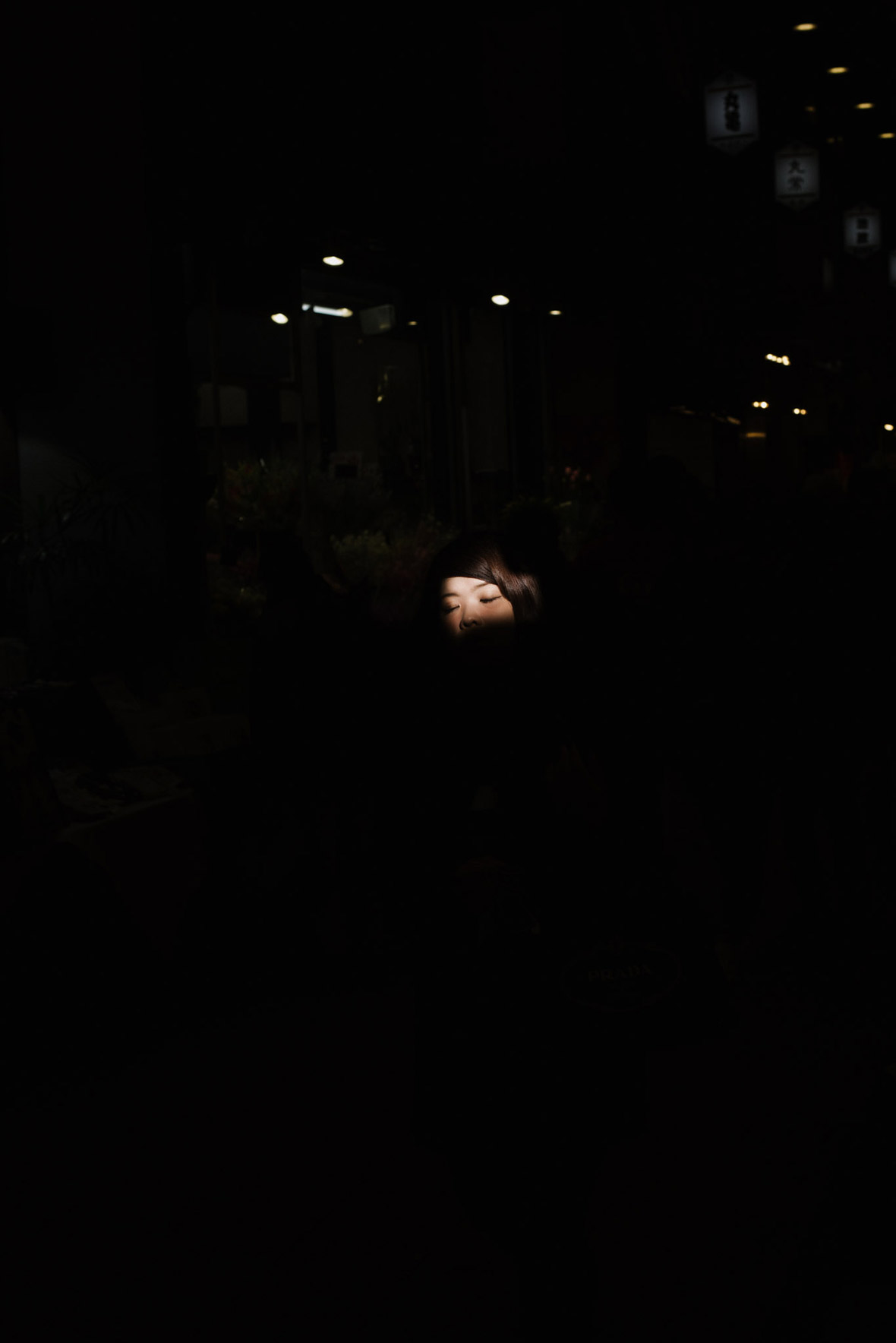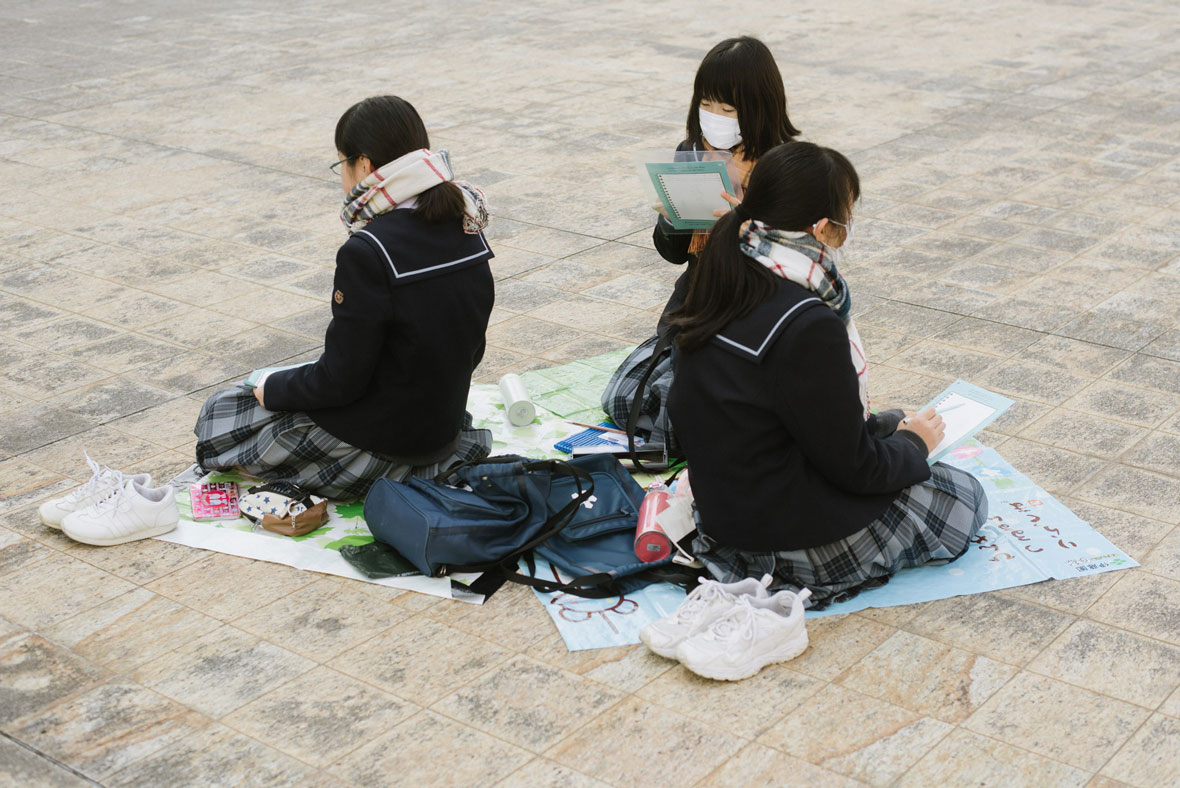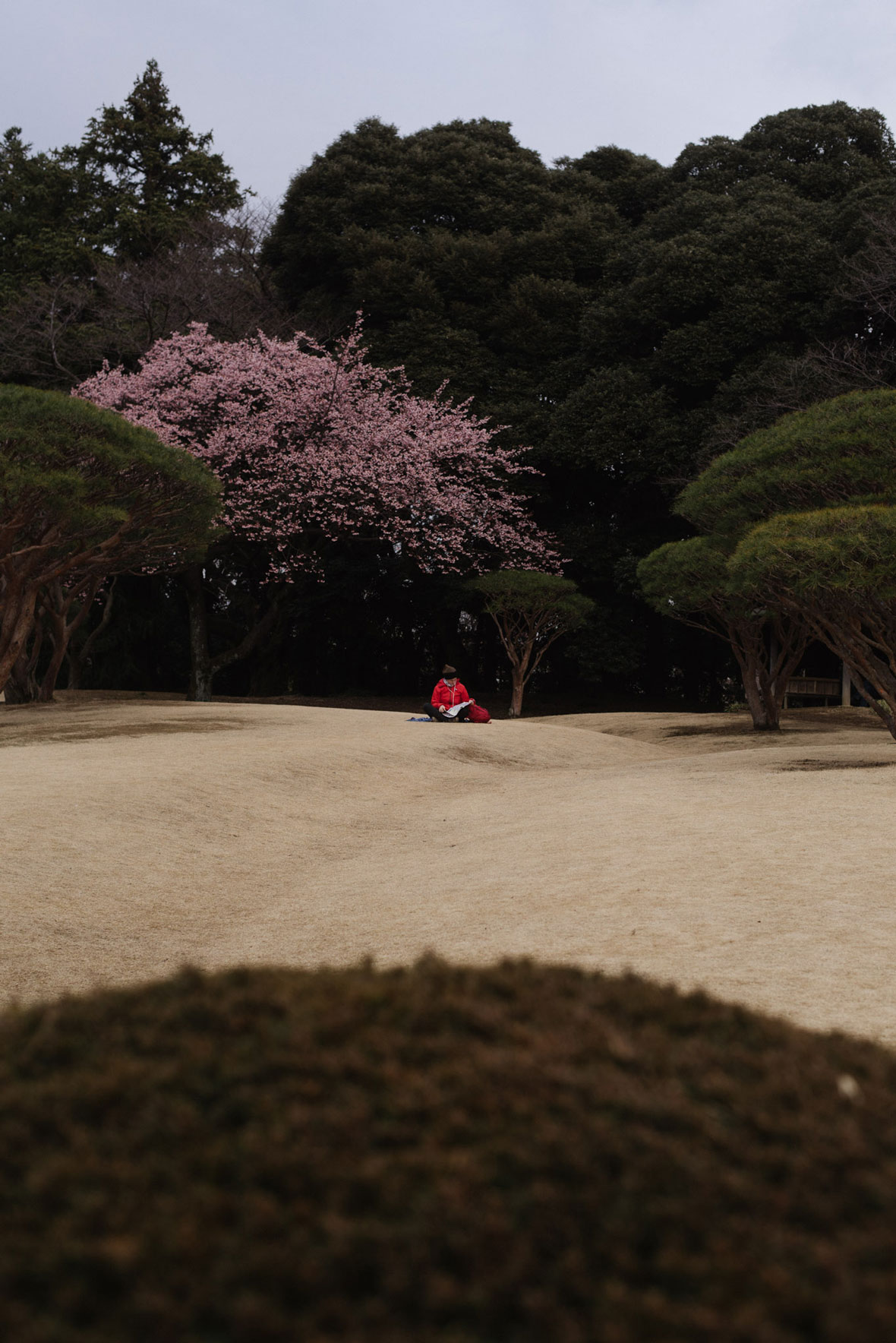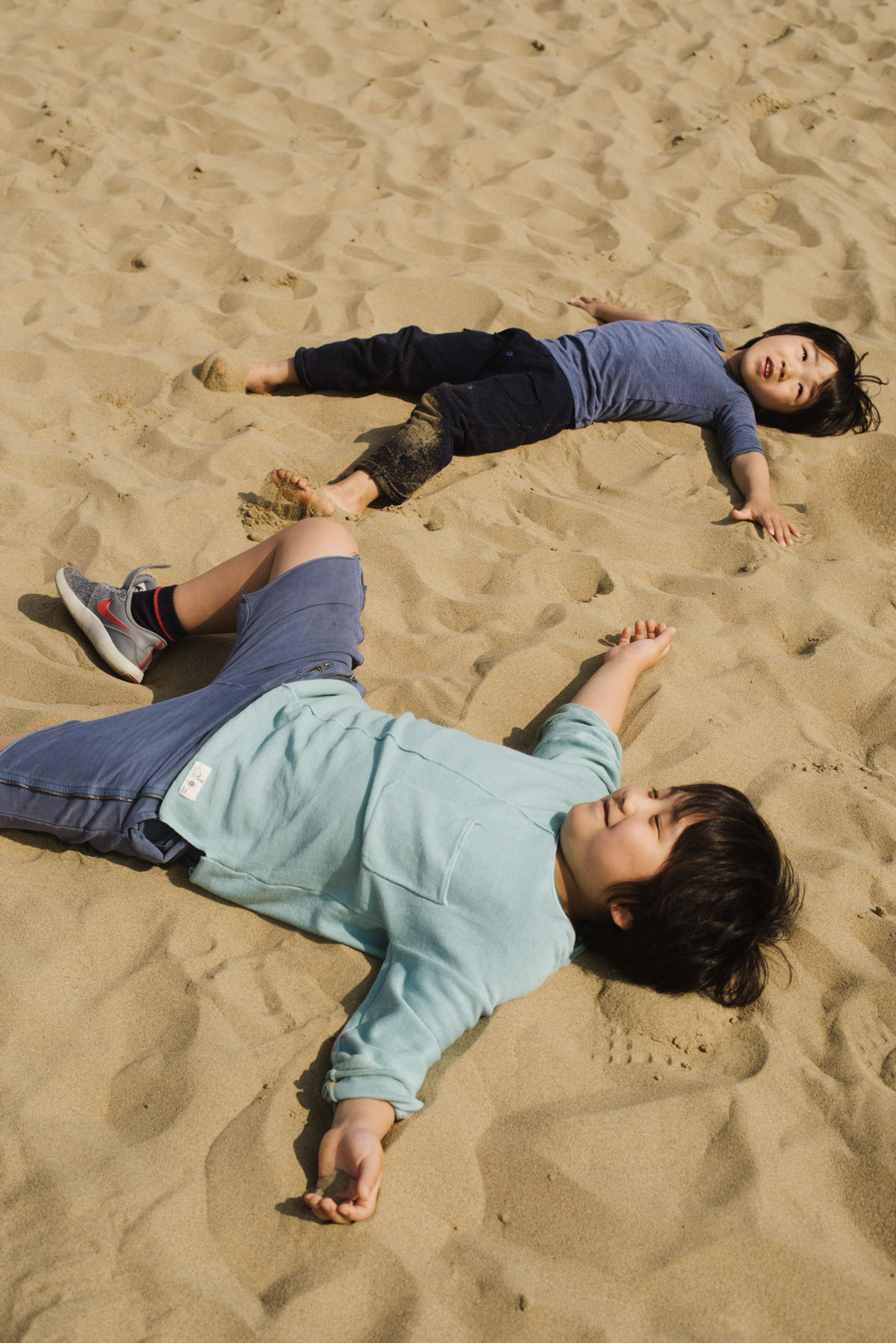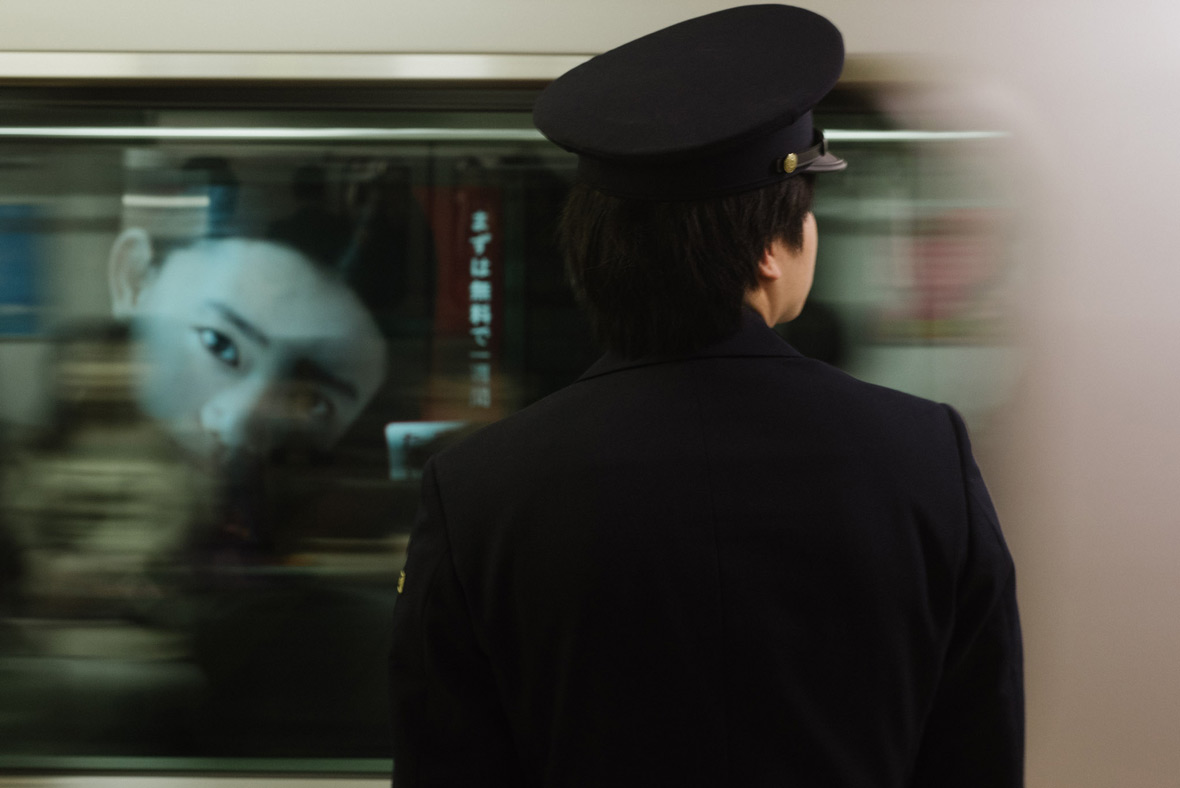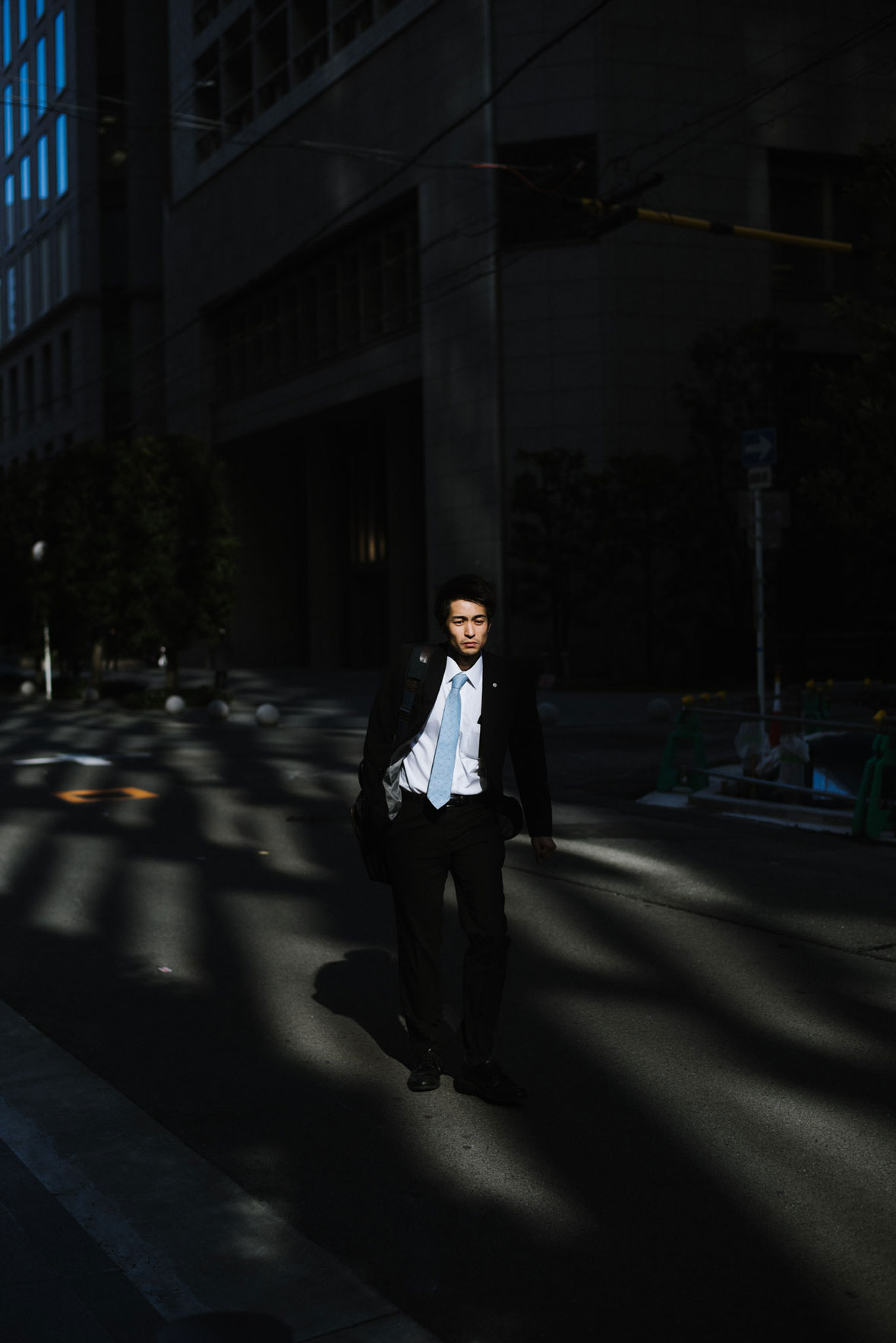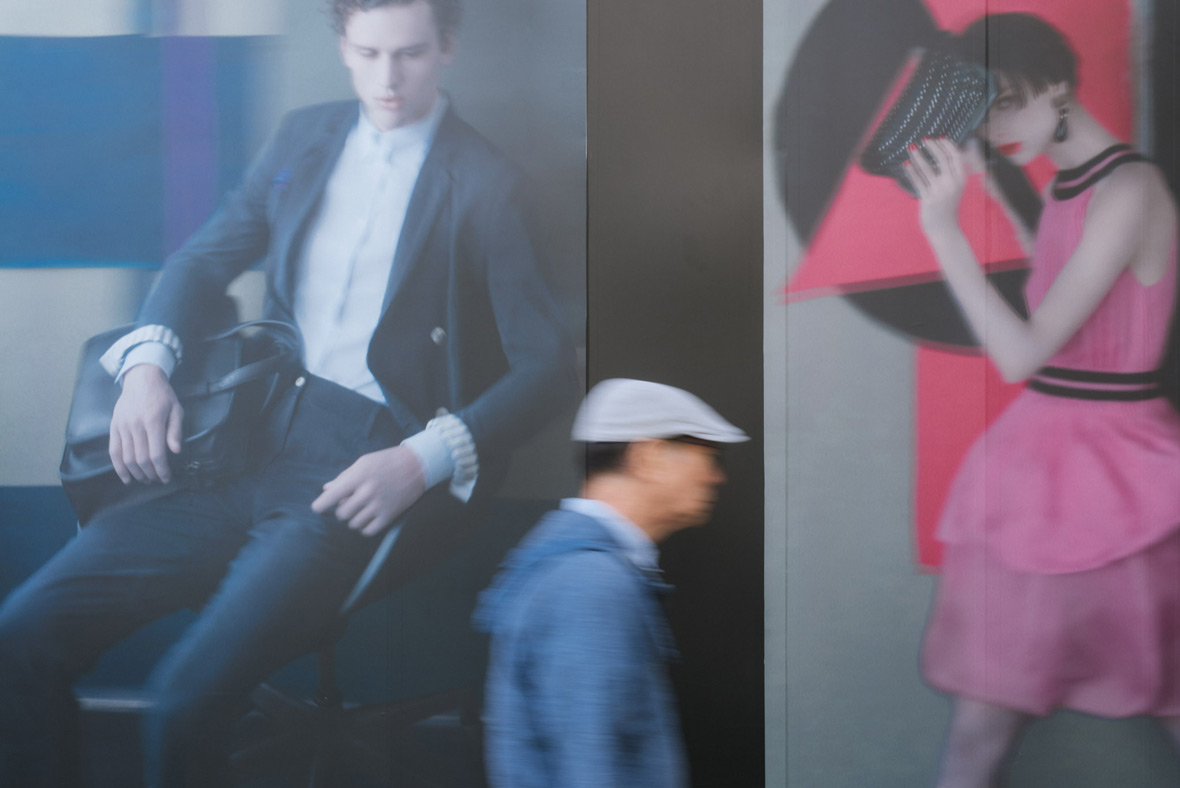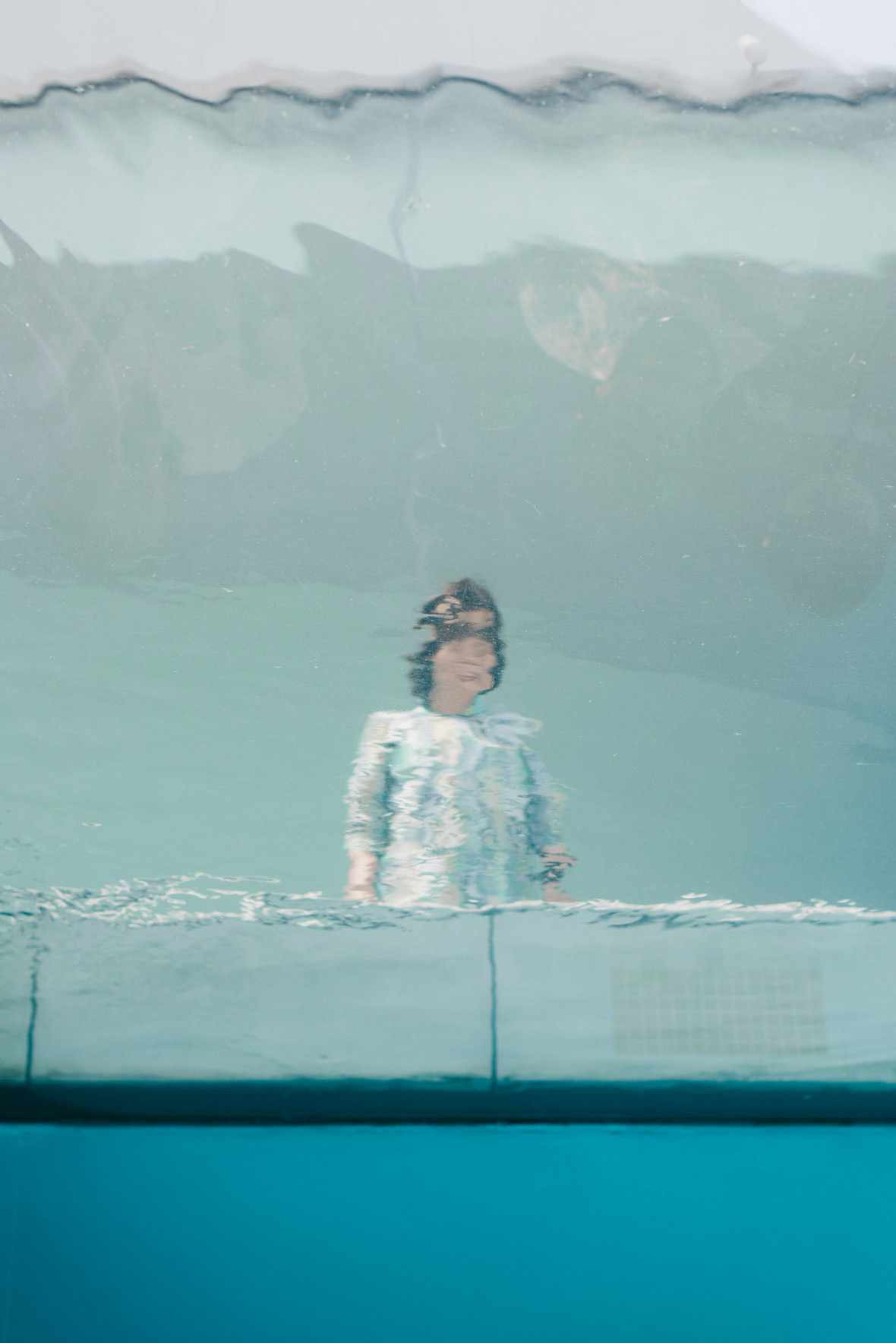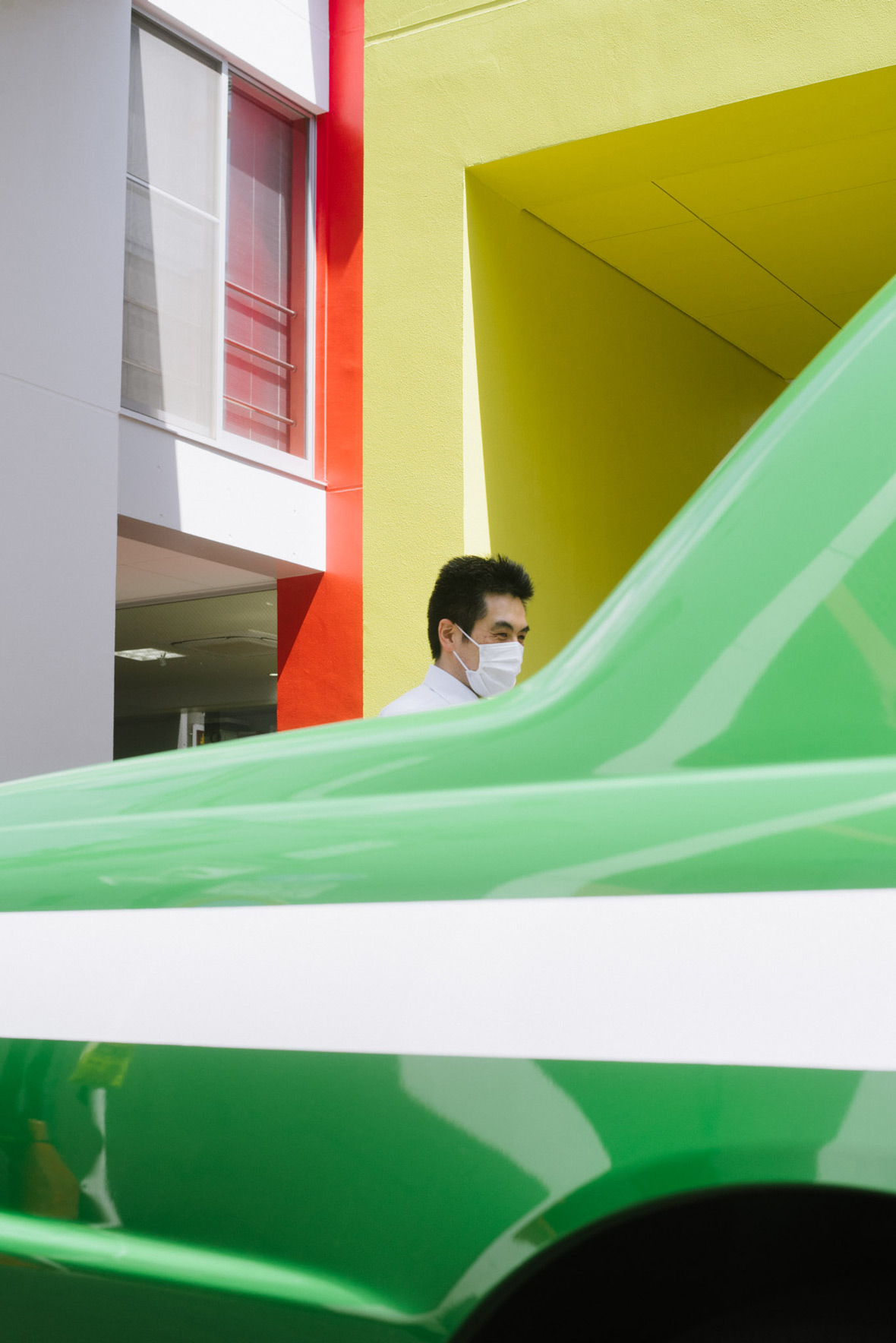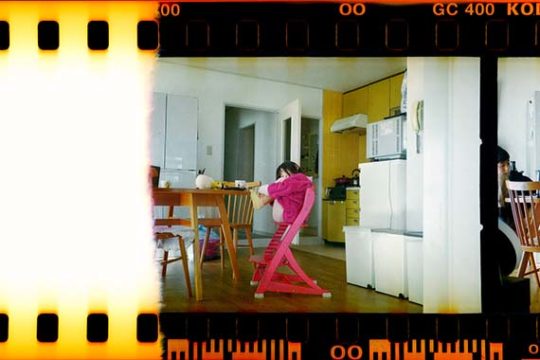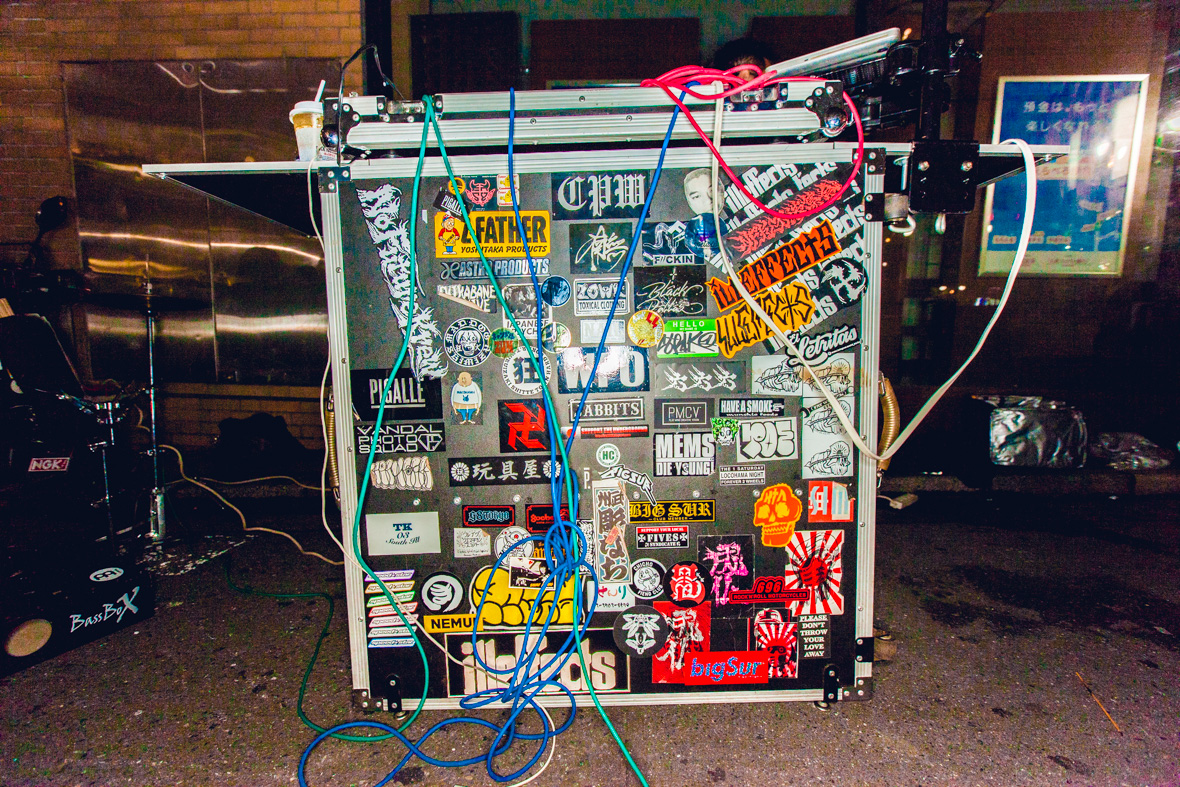
Around midnight, a black gear van pulls up in the laneway behind Shibuya Nonbei Yokocho, one of Tokyo’s most famous drinking alleys. The doors open and members of the Ill Effects crew pour out. They begin setting up a makeshift DJ booth and sound system in the narrow street, but there isn’t much urgency to their work: a few of them are just milling about, drinking, smoking, and shooting the breeze. However, as soon as the speakers are plugged in, DJ Vulgar steps behind the decks and sets the party in the motion.
People dance, passersby gawk, and others hang back sipping convenience store-bought booze as a crowd begins to gather in the street. Vulgar is chain smoking cigarettes as he mixes together electro bangers with hip-hop beats. As the set ramps up in intensity, the crowd’s rhythmic swaying and head bopping soon escalate into dancing frenzies. But just as the street party goes into full swing, the police turn up.
午夜时分,一辆黑色的挡风车停在东京涩谷最著名的酒巷 Nonbei Yokocho 后面的车道上。门开了,Ill Effects 的成员们涌了出来。他们不慌不忙地在狭窄的街道上搭建临时 DJ 棚和音响设备,团队里一些人还会到处走走逛逛,喝酒、抽烟、吹吹风。而当音响一插上电源,DJ Vulgar 就上台正式“开趴”。
当人群开始逐渐在大街上聚集,里面的人跳着舞,外面的路人盯着看,另外还有一些就喝着从便利商店买来的酒。Vulgar 一根接一根地抽着烟,并把电炮(electro bangers)和嘻哈节奏混在一起。随着人流越来越密集,场地也越来越紧张,观众的节奏也越来越有节奏地摇摆着,很快就变成了疯舞。但正当街头派对如火如荼的时候,警察来了。
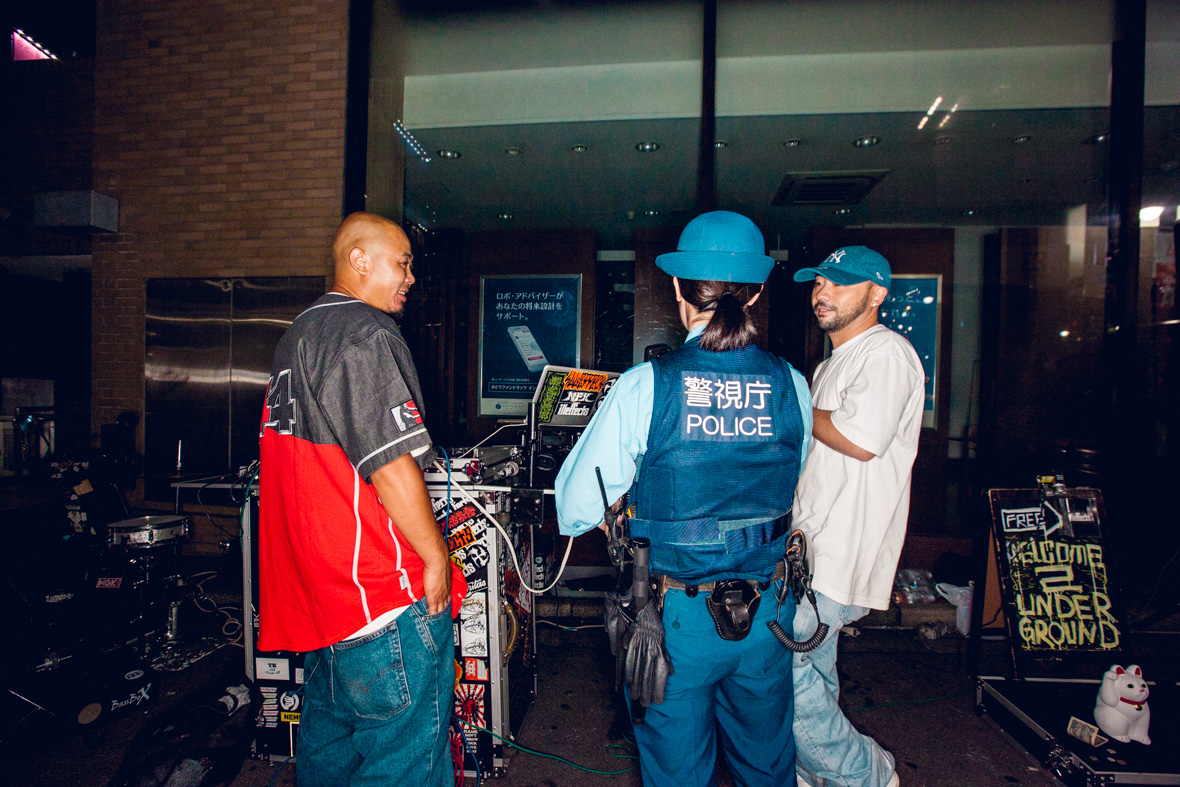
The music cuts and Vulgar bolts around the corner, leaving his crew to deal with the authorities. He occasionally peeks around the bend to see how negotiations are going. Five minutes later, the cops leave, and Vulgar saunters back to the decks triumphantly. He flicks his long aqua-green hair and starts again. A fresh crowd begins to gather, replacing those that left during the short interruption. This time the show runs a little longer, 20 minutes, enough for about four songs, three cigarettes, and a freestyle cypher from a few Ill Effects rappers. Again, Vulgar spots the approaching authorities and ducks out.
音乐声戛然而止,Vulgar 迅速逃到拐角处,留下他的队员与当局交涉,而他时不时偷看一下谈判进行得如何。五分钟后,警察走了 Vulgar 得意地回到台上。他拨了拨他的水绿色长发,又开始了新一轮演奏。新一批观众聚集起来,取代了刚才中断时离开的那些人。这次演出时间长了一点,20 分钟,足足放了四首歌、抽了三支香烟,还来了一段《Ill Effects》的即兴说唱(freestyle)。但又一次,Vulgar 发现了警察局的人,赶紧避开了。
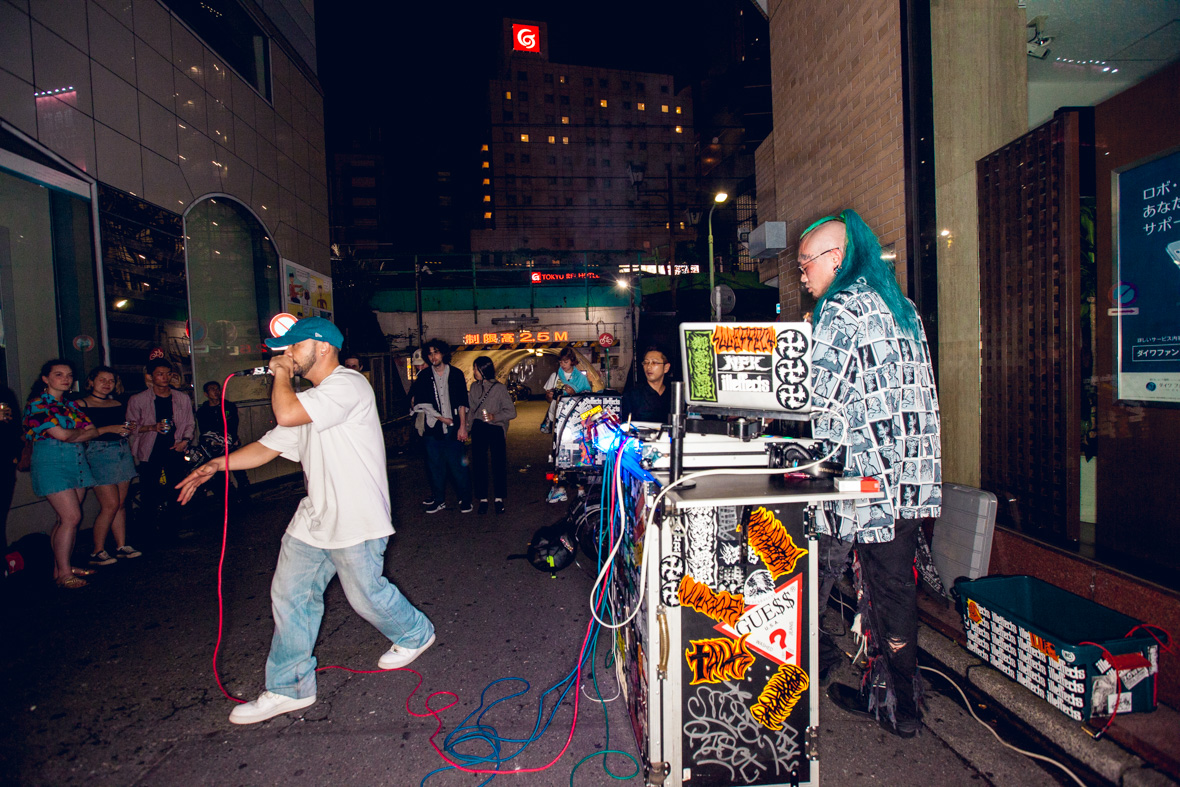
This is how a typical Ill Effects party goes down at their unofficial home at the back of Shibuya Nonbei Yokocho. A three-minute stroll from the Shibuya Crossing, behind a lantern-illuminated alley of bars, and tucked between two department stores, it’s a patch of rare inner-Tokyo space that can fit a small crowd, but it’s not ideal for avoiding the attention of the law.
It’s a mystery as to why Vulgar and his crew doesn’t get into more trouble considering that Japan only lifted its infamous Fueiho law—a piece of legislation that literally outlawed dancing—around three years ago. The 70-year-old statue came to be during World War II as a way for officials to keep control of dance halls, which were often used as prostitution hubs. For owners to run a nightclub, they were forced to apply for a “dancing license.” Although throughout the second half of the 20th century the police generally turned a blind eye to the regulation, there was always a risk that bored officers would arbitrarily enforce the rule if they felt like it.
这是典型的“Ill Effects”团队如何在涉谷 Nonbei Yokocho 后巷,他们的“后院”举行的派对模式。从涩谷十字路口出发,在灯火通明的小巷后,夹在两家百货公司之间——这是一隅难得一见的东京腹地,可以容纳一小撮人,但它并不是块合适的“法外之地”。
在大约三年前,Vulgar 和他的组员们还没陷入大堆麻烦中,因为日本解除了臭名昭著的“风营法”(Fueiho,日本娱乐产业管理促进法),这项法律几乎禁止跳舞。这个有着 70 年历史的“法律”出现在二战期间,其时作为官员们控制舞厅的一种方式,而那时候的舞厅常常被当作卖淫中心。很多老板为了经营一家夜店,不得不申请“跳舞执照”。尽管在整个 20 世纪后半叶,日本警察通常对这一规定视而不见,但风险仍在:只要那些无聊的警察如果愿意的话,舞厅就会受到严厉的处罚。
For most streetside performers, police attention would be enough to call it a night, but the game of cat-and-mouse feels like part of the show for Vulgar. He proudly declares himself to be a chinpira (meaning “delinquent”), and in some ways, it feels like the boys in blue are an accessory to this image. “It’s just their job,” he says with unexpected empathy. “I know some of the young ones are Ill Effects fans too.”
对于大多数街头表演者来说,吸引到警察的注意力就够了,会适时结束了,但这种猫捉老鼠的游戏对 Vulgar 来说就像是节目的一部分一样,他自豪地宣称自己是个 Chinpira(意思是“罪犯”)。从某些方面来说,这个蓝头发的男孩正是他们组合形象的门面。“这只是他们(警察)的工作,”他带着意想不到的同理心说道。“我知道有些年轻警察也是 Ill Effects 的粉丝。”
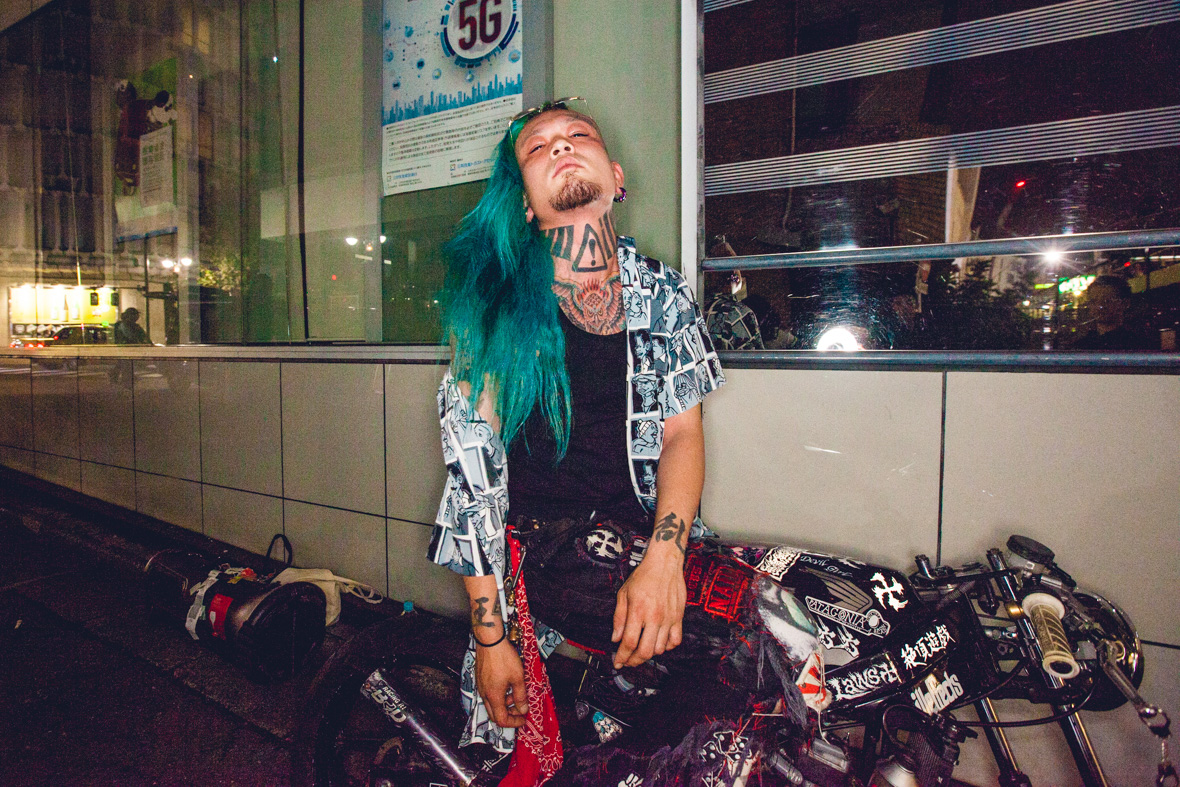
“Keep it real” are the only three words on Vulgar’s Facebook and Instagram bio. It’s also his e-mail sign-off. These three simple words have become a motto of sorts for him and his crew. For cynics, the proliferation of this slogan has made it devoid of all its meaning over the years. You’re more likely to see the words scrawled across a poorly designed t-shirt than associated with anything of any real substance. But the earnestness with which the Ill Effects crew embrace the terms brings it a renewed authenticity.
With Vulgar’s style, charisma, and talent, he could easily be making good money playing glitzy clubs in Roppongi to crowds of rich gaijins and businessmen drunk off bottle-service champagne. He’s instead sipping on convenience-store coffee and playing to a motley crew of listeners in a back alley. That seems as “real” as it gets.
“I wanted to play in a space where everyone can participate,” he explains. “Some people don’t like clubs, but they still like music. I’d say some of my most dedicated fans are homeless.”
“Keep it real”是 Vulgar 的脸书和 Instagram 简介上仅有的一句话。这也是他的电子邮件签名。这三个简单的单词已经成了他和他的组员的座右铭。而对愤世嫉俗的人来说,多年来这句话的泛滥,已经使它失去了所有的意义。你更有可能看到在一件设计糟糕的 T 恤上看到这潦草的字迹,和任何真正的物质都无关。但是,Ill Effects 这班人却马郑重其事地看待这句话,给它以新的“真实性”。
凭借着 Vulgar 的风格、魅力和才华,他可以很容易地在六本木市(Roppongi)的豪华夜店里赚大钱,去博得大批有钱的老外、能喝整瓶香槟酒的商人的喜好。但他却在喝便利店里的咖啡,给一群杂七杂八的听众在后巷演奏。这看上去再“真实”不过。
“我想在一个人人都能参与的空间里打碟。”他解释说,“有些人不喜欢夜店,但他们仍然喜欢音乐。我想说我的一些忠实粉丝是无家可归的流浪汉。”
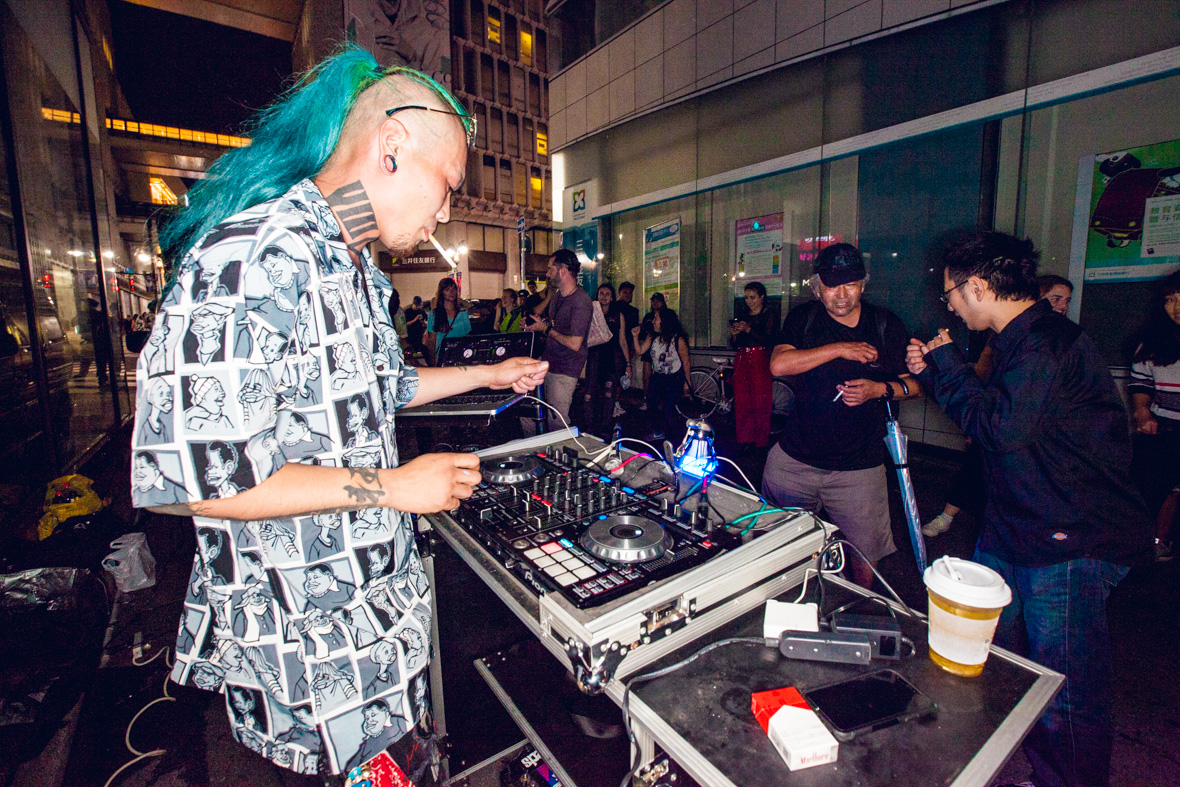
Oceans and decades away from tonight’s Shibuya street party, hip-hop was born. Like the thick layers of spray paint, poster glue, and inner-city grime that formed on the well-trodden streets of New York City, the late 1970s saw the genre emerge as an accumulation of influences. Built from the past, but something undeniably of the present.
“Fancy clubs aren’t the birthplace of hip-hop and dance music,” Vulgar says.
Real hip-hop attitude is synonymous with the grimy underbelly of the city. True hip-hop doesn’t care about the gold chains around your neck or your pricey limited-editions Jordans.
Vulgar’s Nicki Minaj-dubstep-EDM mashups may not be the same as Tupac’s politically charged anthems on All Eyez On Me, but the ideology is the same—a defiant stand against an, at times archaic, legal system, and a fight for unity in a world that loves to build social barriers.
This past summer marked the third year of illegal pop-up block parties for the crew, and it looks like it’s here to stay. “This adventure is my way of pursuing my love of street-centric hip-hop,” says Vulgar. “This is the dream. It’s not a bridge to something else. This is it. I am living the goal.”
今夜的涩谷街头派对和早先年代相比,已经沧海桑田,嘻哈音乐诞生了。就像在纽约,从 20 世纪 70 年代末开始的一层层厚重的喷漆、海报胶水和城市里的泥污,这逐渐累积成为一种影响后人的风格。一切建立在过去的基础上,但不可否认的是,它们是现代的产物。
“高档夜店不是嘻哈和舞蹈音乐的发源地。” Vulgar 说。
真正的嘻哈态度,是这个城市肮脏的腹地的同义词。真正的嘻哈并非你脖子上的金链,也不是你那些昂贵的限量版乔丹球鞋。
Vulgar 的 Nicki Minaj 回响贝斯(dubstep)和电子舞曲混搭可能和 Tupac 在《All Eyez on Me》上发布的充满政治意味的作品不同,但其意识形态是一样的——在一个喜欢制造社会障碍的世界里,它是对一种过时的法律制度的反抗,是为团结而作的斗争。
刚过去的这个夏天,是组员们连续三年非法演出的 pop-up 派对,看似是要在这留下了。“这次冒险是我追求的、对以街头为中心的嘻哈音乐的热爱的方式。”俗话说。“这就是我的梦想,不是通向其他事物的桥梁。它就是梦想。我活在我的目标里。”
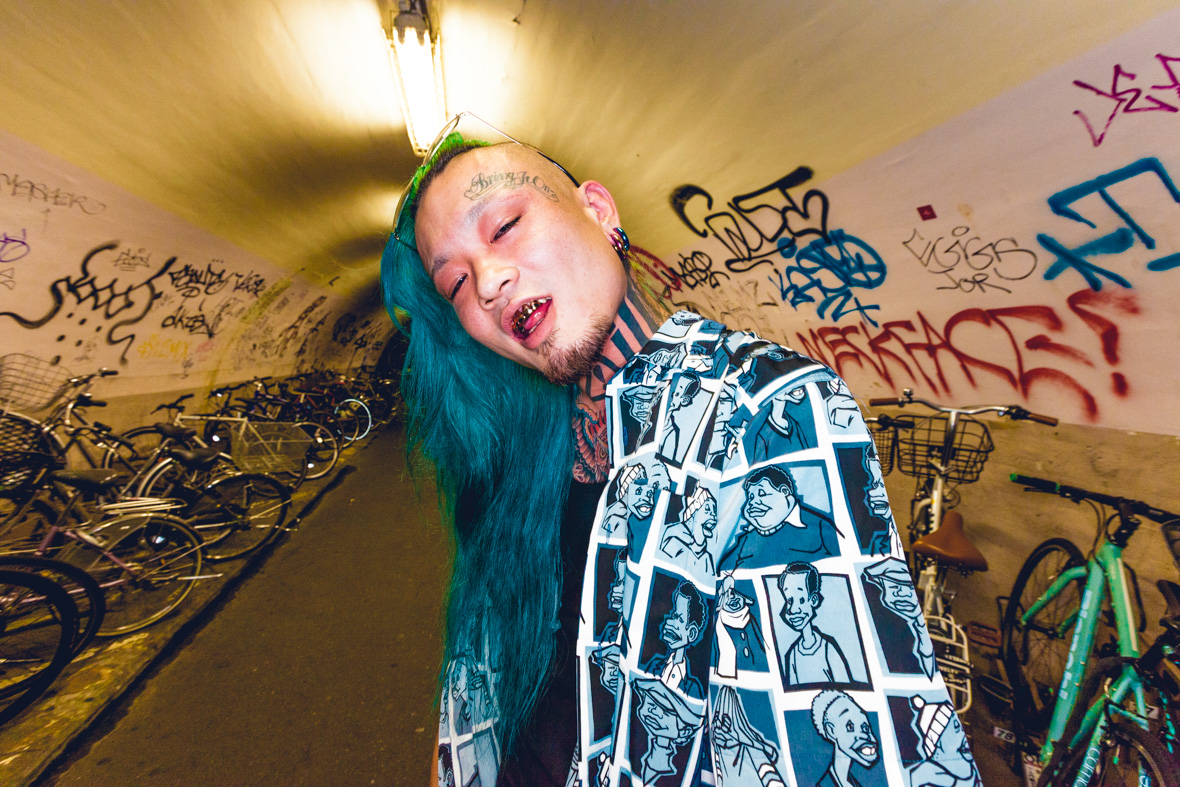
Instagram: @vulgar5111
Facebook: ~/illeffects2015
Contributor: Lucy Dayman
Photographer: Benjamin Hung

